|
7/19/2024 Review: Bill Buell – George Lunn: The 1912 Socialist Victory in Schenectady (2019)By J.N. CheneyRead NowWith the surge in popularity of the Democratic Socialists of America since Bernie Sanders’ 2016 presidential campaign, it can be argued that there’s likewise been a surge in the successes of municipal socialism. Granted this is only concerning the electoral prospects of a single organization, but at least according to Wikipedia, there are nearly 150 people holding various positions within municipal governments ranging from the Mayoral office to smaller positions such as being members of a school board between 31 different states in the US. To understand the potential of these electoral results, or even the lack-there-of, historical examples need to be studied to absorb the lessons of these experiments. Could Bill Buell’s work “George Lunn: The 1912 Socialist Victory in Schenectady” serve as a lens into the achievements and shortcomings of socialism at the local level? Published in 2019, the county historian of Schenectady’s book holds the dual purpose of being a biography of George R. Lunn, a minister and politician, as well as more specifically examining his time as the only ever socialist mayor of Schenectady, New York. Lunn is also one of only four people to hold a mayoral office in New York State under some form of the socialist banner, as well as being the first to do so. The first seven chapters of this book touch upon Lunn’s early life and connections to the pulpit, as well as giving some historical context to the city of Schenectady and the standing of socialism within the United States in the early 20th century. To put it briefly, Lunn was born in Iowa in 1873, served very briefly as a chaplain during the Spanish-American War, and would later become ordained as a Presbyterian minister after graduating from Union Theological Seminary in 1901. In 1904 Lunn would move to Schenectady when he was named as pastor for Schenectady’s First Reformed Church. It was as a minister that Lunn began to gain prominence, being cited as an engaging and charismatic speaker, using his platform in the church to talk not only about religious affairs, but to address corruption within the city and speak of societal ills such as homelessness and child labor. The minister’s rhetoric would result in him leaving First Reformed in 1910, leading him to form his own congregation through the People’s Church and, soon after, officially joining the Socialist Party of America near the end of that year. Chronicling George Lunn’s entrance to the SPA introduces the real meat and potatoes of this biographical piece, his political career. Buell chronicles Lunn’s quick rise to popularity and his election to Mayor of Schenectady on the socialist ticket, taking office in 1911. The efforts of Lunn and his associates to implement elements of socialism within the framework of capitalism such as introducing free garbage pickup and a protracted effort to improve the city’s parks are laid out, examining how Lunn introduced these as well as displaying the struggles that came with working to implement such programs. Lunn’s administration faced issues with Republicans, Democrats, and the Progressive party trying to block him from following through with such economic and social programs, as well as issues within the Socialist Party itself. Particularly, there were individuals and factions who considered Lunn to be not “socialist enough” in his practices. Famed writer Walter Lippmann for a short time served as part of Lunn’s cabinet, and his reason for leaving stems from that very critique. With Lunn’s politics being influenced more by the Social Gospel and reformism than any sort of scientific socialism, these specific critiques do hold water. Buell does provide an astute recounting of Lunn’s involvement in the Little Falls Textile Strike of 1912-1913, with the Mayor serving as one of the primary catalysts in giving that struggle national attention, and bringing significant figures in labor history to New York’s Mohawk Valley as well as Schenectady, including Bill Haywood, Matilda Rabinowitz, Helen Schloss, Joseph Ettor, and more. Explaining how Lunn balanced his commitments as Mayor, his involvement in the strike, and his potential bid to run for Congress shows just how multifaceted Lunn was in his ability to juggle responsibilities. In that same vein, Buell covers Lunn’s struggles within and eventual leaving of the SPA after his second term as Mayor as well as his later career in a concise manner, though one could argue that it was too concise since he only spent three chapters including an epilogue covering Lunn’s career after this leaving the SPA. Given that this book is more specifically about Lunn’s first term as Mayor of Schenectady with some emphasis on his second, this is understandable. That being said, it would’ve been interesting and beneficial to see some more emphasis on Lunn’s third term as mayor and other political actions after leaving socialism. Bill Buell’s book is informative and is generally well-written and digestible. Buell doesn’t dive very deeply into the major theoretical conflicts between Lunn and other members of the party. Besides a brief mention of Lincoln Steffen’s dissolution with the Soviet Union, there is no explicit political bias being pushed by this book, no upholding of the socialist boogeyman that so many would use a piece like this to demonize. However, there are some shortcomings. The first being that since this book is self-published, even with the aid of the Troy Book Makers, a handful of typos managed to slip through the cracks. Though unfortunate to see, these can be forgiven as such typos are few and far between throughout the entire 200+ page book. The biggest problem to be found though is the use of one particular source. Buell utilizes the book The Red Nurse: A Story of the Little Falls Textile Strike by Michael Cooney as a source when introducing Helen Schloss and her role in the strike. For one, this is a piece of historical fiction. There are true elements to the book’s story, but to use a dramatization of historical events as an academic source shouldn’t be acceptable. Additionally, according to others who have studied the strike and the life of Schloss such as playwright Angela Harris, there are various inaccuracies in The Red Nurse. One example being that in the novel, Cooney says that Schloss resigned from a position she held in Little Falls in a rather vitriolic manner, when all actual accounts show that she resigned in a cordial manner. The story of George R. Lunn’s life and political career is not an unknown one given that there are a handful of academic articles and book chapters about the man and his career, as well as even having his own dedicated Wikipedia page. With that knowledge though, Buell’s piece serves as one of the only books dedicated to the life and times of the minister, the only other one that comes to mind being George Gardner’s The Schenectadians published in 2001. It’s not a perfect book given the aforementioned shortcomings, but George Lunn: The 1912 Socialist Victory in Schenectady is worth reading and analyzing for a look at the popularity of socialism at the time in addition to the benefits and shortcomings of municipal socialism. AuthorJ.N. Cheney is an aspiring Marxist historian with a BA in history from Utica College. His research primarily focuses on New York State labor history, as well as general US socialist history. He additionally studies facets of the past and present global socialist movement including the Soviet Union, the DPRK, and Cuba. Archives July 2024
0 Comments
Originally published: In Defense of Marxism on May 24, 2024 by Ben Curry (more by In Defense of Marxism) (Posted Jun 24, 2024) Honoré de Balzac is renowned as a prolific literary genius and was one of Marx and Engels’ favourite authors. He was a pioneer of the Realist style that would be taken up by such famous authors as Émile Zola and Charles Dickens. In this article, Ben Curry explores Balzac’s Realist method, the predominant themes of his vast body of work, known collectively as The Human Comedy, and the fascinating paradox that lies at its heart. You’re deluding yourself, dear angel, if you imagine that it’s King Louis-Philippe that we’re ruled by, and he has no illusions himself on that score. He knows, as we all do, that above the Charter there stands the holy, venerable, solid, the adored, gracious, beautiful, noble, ever-young, almighty, Franc! The period between the great revolutions of 1789 and 1848 was one of unprecedented upheaval in France. This was the epoch of the galloping advance of the French bourgeoisie. At its outset, this class formed part of the oppressed ‘Third Estate’ under the absolutist Bourbon regime; by its close, it was the undisputed ruling class and had begun to transform French society in its own image. Contemporary with this era of storm and stress, at one and the same time its historian and the artist who best depicted its moving spirit, lived one of the giants of world literature, the father of the Realist novel, Honoré de Balzac. Balzac, a favourite of Marx and Engels, was no revolutionary. Quite the contrary. And yet, Engels was able to say of his immense literary output: There is the history of France from 1815 to 1848… And what boldness! What a revolutionary dialectic in his poetical justice! A lifetime of furious nocturnal work, fuelled by immense quantities of coffee (it is estimated that he drank 500,000 cups in his lifetime!), sent Balzac to a tragically early grave at the age of just 50. In two decades of work, however, Balzac penned no fewer than 90 novels, novellas and short stories—60 of them full-length novels, and dozens of them masterpieces in their own right. But Balzac’s novels, great as they are taken singly, cannot be fully appreciated other than in connection with each other. His tremendous opus, known collectively as The Human Comedy, represents a single, masterful panorama of French society from the fall of Napoleon until 1848: Paris and the provinces; soldiers, police spies and politicians; aristocrats and peasants; bankers, artists, journalists, bureaucrats, criminals and courtesans—all are expertly depicted with strokes that cut straight to the heart of their world. More than a portrayal of French society, it portrays bourgeois society as it was and as it is: petty, grasping and brutal. The Realist novel Balzac was born in 1799, the same year that Napoleon overthrew the Directory, marking the closing chapter of the French Revolution that had aroused and dashed such immense illusions among the downtrodden masses of France. One form of exploitation had been exchanged for another. In the words of Marx and Engels, “for exploitation, veiled by religious and political illusions,” the bourgeoisie “substituted naked, shameless, direct, brutal exploitation.” With the victory of the bourgeoisie, the authors of The Communist Manifesto explained how man was “at last compelled to face with sober senses his real conditions of life, and his relations with his kind.” In the volumes of The Human Comedy, Balzac’s art acted like powerful smelling salts, assisting in sobering up this world whose illusions were crashing down around it, forcing it to look reality in the face. Instead of a retreat into an idealised past in the Romantic style then all the rage in France, we find the present, with its sores and all, fully on display. Balzac’s method was wholly materialist. Under the banner of ‘Realism’, it represented a new departure in literature and the arts at large. Stefan Zweig, in his essay on the genius of Balzac, gives a vivid description of his method: The idea—which he christened ‘Lamarckism’, and which Taine was later to petrify into a formula—that every multiplicity reacts upon a unity with no less vigour than does a unity upon a multiplicity, that each individual is a product of climate, of the society in which he is reared, of customs, of chance, of all that fate has brought his way, that each individual absorbs the atmosphere by which he is surrounded as he grows to adulthood and in his turn radiates an atmosphere which others will absorb; this universal influence of the world within and the world without upon the formation of character, became an axiom with Balzac. Everything flows into everything else; all forces are mobile, and not one of them is free—such was his view. Although Balzac explicitly rejected the label ‘materialist’, what is this but a clearly materialist method? And, what is more, it is an extremely dialectical method. Balzac intended The Human Comedy to be a complete, living representation of all the “social species” that inhabit the world, not simply a dry accumulation of ‘facts’. No art can ever hope to chronicle every one of society’s details; nor does it need to. The real purpose of art is to reach beyond the accidental in order to grasp deeper, more essential truths. Balzac didn’t need to portray 30 million Frenchmen and women to give a portrait of France. It was enough to capture the essential types of the age. With his pen, the 2,000 or so characters of The Human Comedy sufficed for this task. In The Human Comedy—perhaps counterintuitively for a work of Realism—we find men and women painted in bold, exaggerated colours, as Renaissance painters used the method of chiaroscuro, the bold opposition of dark and light, to highlight the drama in human expressions and motion. Balzac’s characters are frequently depicted as unusually singular in their passions. But they are all the more real for that fact: they form archetypes of their class and of their motivating passions. Baron de Nucingen stands in as the archetype of the whole class of millionaire bankers; Grandet plays the same role for misers; Gobseck for usurers; Crevel for bourgeois parvenus; Madame Marneffe for the bourgeois courtesan; de Rastignac and de Rubempré for ambitious provincials; and Vautrin for the whole criminal underclass of Paris. Just as the chemist breaks down for analysis the innumerable compound substances of nature into their purified constituent elements, so Balzac sought to “analyse into its component parts the elements of that compound mass which we call ‘the people’”. Balzac’s ability, as he put it, “to rise to the level of others”, “to espouse their way of life”, “to feel their rags on his shoulders” was something unequalled: I looked into their souls without failing to notice externals, or rather I grasped these external features so completely that I straightaway saw beyond them.
In the earliest novel in The Human Comedy, Les Chouans set in 1799, we meet the aristocratic leaders of the Chouannerie—a reactionary guerrilla rising in Brittany. In Les Chouans the Republican army is a disciplined fighting force, consisting of peasants who earnestly imagine their First Consul Napoleon to be the defender of the land they actually gained thanks to the Revolution. On the other hand the Chouan guerrillas, consisting of Breton peasants, are depicted as having joined the Royalist ranks merely to rob stagecoaches and the bodies of dead Republican soldiers—a practice solemnly sanctified at clandestine forest Masses by the Church. As for their aristocratic leaders, we get their full measure when they confront their leader to greedily press their demands for titles, estates and archbishoprics as reward for their continued allegiance to the King. In Lost Illusions and Père Goriot, we find the old nobility: petty, bigoted, two-faced and egotistical, restored once more in the saddle, thanks to the reactionary armies of Europe. But it was one thing for Louis XVIII to re-establish his Court and for the aristocracy to re-establish their salons in Paris, it was quite another to establish the old property relations on which the Ancien Régime once stood. France had been changed irrevocably, and money formed the new axis around which it now turned. The rising bourgeoisie pressed against the old aristocracy in every sphere: in the theatre box, in politics, in the press. The faded nobles might scorn admitting the upstarts to their salons, but it was to the Stock Exchange that they entrusted their fortunes. It was to the bourgeois timber agents that they sold the wood felled from the forests of their manors, and it was to the bourgeois usurer that they turned to fund their marital infidelities. In the provinces, where the nobility found itself on a slightly firmer footing, Balzac describes the most worthless rabble: All the people who gathered there had the most pitiable mental qualities, the meanest intelligence, and were the sorriest specimens of humanity within a radius of fifty miles. Political discussions consisted of verbose but impassioned commonplaces: the Quotidienne was regarded as lukewarm in its royalism; Louis XVIII himself was considered to be a Jacobin. The women were mostly stupid, devoid of grace and badly dressed; every one of them was marred by some imperfection; everything fell short of the mark, conversation, clothes, mind and body alike… Nevertheless, comportment and class consciousness, gentlemanly airs, the arrogance of the lesser nobility, acquaintance with the rules of decorum, all served to cloak the void within them. What is this if not a class that was doomed to extinction and deserving of its fate? Balzac’s beloved Catholic Church is depicted as little better. Like all the last bastions of the old order, it found itself besieged from all directions and forced to become bourgeois itself: “It stoops, in the house of God, to a disgraceful traffic in pew rents and chairs… although it cannot have forgotten Christ’s anger when he drove the moneychangers from the Temple.” In birth, marriage and death, we find the representatives of the Church, with their palm extended, collecting their fee at every stage.
Throughout The Human Comedy we can read fictitious accounts of the numerous, real tragedies of what family life in particular becomes under capitalism. We find fathers swindling sons; men wooing women for dowries; adulterous fathers ruining families to support mistresses; daughters placed on bread and water by rich and ‘thrifty’ miser-fathers; husbands aiding their wives’ infidelities for career advancement; children treated as chattel by parents. As Marx and Engels put it, The bourgeoisie has torn away from the family its sentimental veil, and has reduced the family relation to a mere money relation. Criminals and capitalists Balzac’s critique touches in turn upon all aspects of bourgeois society, only a few of which can be mentioned here. In Père Goriot, a retelling of Shakespeare’s tragedy King Lear in the bourgeois age, the real hero of that story, if he can be called such, is Eugene de Rastignac, an impoverished provincial nobleman. A new arrival in Paris, he is drawn between two ways to make his fortune: the ‘honest’ method, of seducing one of Père Goriot’s daughters, made wealthy through marriage to the banker de Nucingen; or through a shortcut involving the shedding of blood, offered by the branded criminal Vautrin. What is the difference? In the opinion of Vautrin, who counsels de Rastignac through his pangs of conscience, the difference is little more than moral and legal hypocrisy: There’s not one article [of the law] that does not lead to absurdity. The smooth-tongued man in his smart yellow gloves has committed murders without bloodshed, but someone has been bled all the same; the actual murderer has jemmied open a door; two deeds of darkness! The capitalist kills just as surely as the murderer, although without spilling a drop of blood himself. The words of condemnation thrown in the face of the whole of bourgeois society do not fail to hit their target on account of being placed in the mouth of a branded miscreant: Are you any better than us? The brand we bear on our shoulders is not as shameful as what you have in your hearts, flabby members of a putrid society. Ultimately, de Rastignac is forced to agree with Vautrin: He saw the world as it is: laws and morality unavailing with the rich, wealth the ultima ratio mundi. ‘Vautrin is right, wealth is virtue,’ he said to himself.
[The] only men of whom he always speaks with undisguised admiration, are his bitterest political antagonists, the republican heroes of the Cloître Saint-Méry, the men, who at that time (1830-6) were indeed the representatives of the popular masses. That Balzac thus was compelled to go against his own class sympathies and political prejudices, that he saw the necessity of the downfall of his favourite nobles, and described them as people deserving no better fate; and that he saw the real men of the future where, for the time being, they alone were to be found—that I consider one of the greatest triumphs of Realism, and one of the grandest features in old Balzac. In his day, the cause of the bourgeois republic as yet represented progress relative to the outworn, lingering relics of feudalism. In the years depicted in The Human Comedy, the class that would come to challenge bourgeois rule, the working class, remained as yet a largely unorganised mass; only just becoming conscious of its own interests; scattered throughout small and medium-sized workshops. It is undistinguished from the general mass of the urban poor in Balzac’s novels. But with his piercing insight, Balzac saw that the ‘Kingdom of Reason’ that the revolutionary republicans aspired to was a chimera that could only end in the naked rule of the bourgeoisie. In this assessment he was correct, and was proven so in the revolution that broke out in 1848, the same year that Balzac put down his pen for the very last time. This was also the year in which the working class of Paris rose up for the first time, arms in hand, under its own banner. Reciprocally, the bourgeoisie recoiled in fear from its revolutionary tasks, stooped down and allowed itself to be yoked by the adventurer Louis Bonaparte, and demonstrated all the decadence, cowardice and paltriness that Balzac had shone a piercing light on. What is left when we leave aside the reactionary dreams contained in Balzac’s work is a withering critique of bourgeois society and its hypocritical morality. The Realist method that he pioneered would inspire other great writers, like Charles Dickens and Emile Zola, to take up the task of depicting the conditions of the industrial proletariat. And it would also exert a fructifying influence on the authors of The Communist Manifesto, whose pages first saw the light of day in 1848, just as Balzac’s great literary career was drawing to a close. In The Communist Manifesto—much like in The Human Comedy—we see the unstoppable wheels of history in motion. For the backward-looking Balzac, it was a matter of deep regret that this onward motion destroyed his idealised old society, with its deference to the King, God and the Family. But Marx and Engels, on the contrary, looked ahead and saw how this same destructive power that Balzac depicted was also a tremendous creative power. It was laying the basis for a new, classless society, in which all the vices of class society that capitalism had brought to their apex would be done away with forever. AuthorBen Curry This article was produced by In Defense of Marxism. Archives July 2024 Since the explicit Israeli colonisation of historic Palestine in 1948 supported by colonialist and imperialist powers, namely Britain and the US, the Palestinian struggle has become a global cause. Resistance was a natural response to the invasions and incursions better known as “the ethnic cleansing of Palestine”. Even before then, as the military occupation entrenched itself at the hands of pre-state Zionist militias and paramilitary units, massacres and forceful expulsion were committed, leading to the 1948 Nakba, the catastrophe, of the loss of the Palestinians’ homeland. The 1967 Naksa, or “set back”, followed with the defeat of Arab armies. Displaced indigenous Palestinians were forced to live in refugee camps in makeshift tent cities in Gaza, the West Bank, Lebanon, Syria and Jordan, relying on food hand-outs provided by UNRWA. At first they assumed that they would one day return to where they had been driven out by force. During the Nakba, some 500 towns and villages were wiped off the map as they were looted. Today, 70 years later, the displaced and dispossessed are still waiting for the implementation of that dream – “the right of return”. Amid all the developments at the time, a sense of revolt began to emerge among Palestinians to defend their land. “Fedaeyyeen” – the Arabic term for “freedom fighters” – began to assemble and carry out reprisal attacks against occupying Israeli forces. Some fighters infiltrated the security border fence from neighbouring Arab countries. Horrendous massacres followed, most notably in 1953, 1955 and 1956, in which hundreds of Palestinians were killed at the command of Ariel Sharon, then a hawkish army general charged with uprooting the Fedaeyyeen and punishing the refugees for supporting them. Revolutionary spirit in Egypt Egypt, known then as “The United Arab Republic”, had administered the Gaza Strip between 1948 and 1967 and lost dozens of its soldiers, police and security officers, especially in south Gaza’s Khan Younis and Rafah towns during a triple-pronged offensive against Egyptian forces by Britain, France and Israel in 1956, following Nasser’s decision to nationalise the Suez Canal. The spirit of revolution was running high in Egypt under leader Gamal Abdel Nasser, the godfather of pan-Arabism, who was known for his anti-imperialist and anti-colonialist stance. Nasser, who dominated Arab politics and the imagination of the Arab masses at the time, extended an invitation to none other than Ernesto Che Guevara, the Latin American revolutionary, to visit Cairo. It’s not known if visiting Gaza was on Che’s agenda, or if it was Nasser’s idea. But the timing of the visit was of great importance for the Palestinian national movement which was comprised of Fedaeyyeen. The movement drew inspiration from guerrillas in Latin America, Vietnam and Algeria. The ideology of the Palestinian Fedaeyyeen was mainly left-wing nationalist, socialist or communist, and their proclaimed purpose was to defeat Zionism and liberate Palestine through armed struggle to establish it as “a secular democratic state“. The idea of liberation gained momentum as Palestinians had never achieved any form of real national independence in their homeland, and a few years later, in 1964, the Palestine Liberation Organisation (PLO) was formed and led by Ahmad Shukeiri. Yasser Arafat became the PLO’s chairman in 1969 until his death in 2004. Che Guevara in Gaza After accepting Nasser’s invitation, Guevara was sent to the region by Cuba’s Fidel Castro on a three-month tour of 14 countries. A one-day visit was dedicated to Gaza which was then under Egyptian rule. Guevara landed in Gaza wearing his dark military fatigues on 18 June 1959 after travelling about 450km from Cairo. He received a hero’s welcome from the Egyptian de facto governor of Gaza, General-Lieutenant Ahmad Salim, as well as from Palestinian officials and heads of municipalities and many ordinary people. During his short visit, he toured several Palestinian refugee camps including Al-Buraij camp, where he was welcomed with chants from the Cuban revolution. Cuba went on to welcome the founding of the Palestine Liberation Organisation, making official contact with it in 1965. One of Che’s goals for the visit was to support Arab and Palestinian national liberation and revolutionary movements against western imperialism and colonisation. Zulfiqar Swirjo, an official affiliated to the Popular Front for the Liberation of Palestine stated during a previous interview that his father was there during that historic visit that aimed to share Guevara’s beliefs and revolutionary ideas with Gaza’s fighters. They had wanted to put together a strategic plan for a popular struggle to fight the Israeli forces using guerrilla warfare tactics. Gaza The Gaza Strip is a small slice of the eastern coastline of the Mediterranean Sea in the southern part of historic Palestine, bordering Egypt to the south-west and Israel to the east and north. At 45km long and between 5 and 12km in width, it has a total area of just 365 square km – around the same size as the city of Bakersfield, California (pop. 380,000). Today, two-thirds of Gaza’s two million inhabitants are refugees, ethnically cleansed from their original homes. According to Palestinian researcher Salman Abu Sitta, after Guevara’s visit to Gaza, Cuba gave scholarships to Palestinian students, granted citizenship to stranded Palestinians and held many conferences in support of Palestine. And as Palestine has become a symbol of struggle against colonialism, it’s no surprise that India’s first prime minister and anti-British colonialist Jawaharlal Nehru also visited Gaza in 1960 and met with the United Nations Emergency Force (UNEF), whose presence was to protect the old armistice line between Israel and Egypt. The Argentinean revolutionary leader was summarily executed by Bolivian forces in October 1967, nearly four months after the “six-day war”, when Gaza was annexed from Egyptian control and came under total Israeli occupation. Che became an icon of resistance, especially for leftist Palestinian resistance movements such as The Popular Front for the Liberation of Palestine, The Democratic Front for the Liberation of Palestine, and the Palestinian People’s Party. His legacy endures and, for many Palestinian activists, he remains a source of inspiration, as a popular icon of rebellion against imperialism, colonialism and military occupation. AuthorYousef al-Helou is a freelance Palestinian journalist. This article was produced by Resumen. Archives April 2024 On what basis do we call the Civil Rights Movement a revolution? And will there be one to follow? The year is 2024. America is today engulfed in its greatest political crisis perhaps since the Civil War. The blatant hypocrisy and contempt shown by our elites, decades of deindustrialization, neglect, and downward economic mobility, cities and towns overrun by deaths of despair, and America’s most recent proxy wars in Gaza and Ukraine have, in unprecedented fashion, driven Americans away from the current political establishment and toward the memory of that last great movement led by Martin Luther King and a sea of people who called themselves freedom fighters. This was the Third American Revolution, and we are its children. It rests in our hands to determine whether there will be a Fourth. To speak, then, of this history is not to regress into some dead past—it is to enter into battle for our present and future. Now is the time to face our inheritance. Prologue: The Revolutionary Diane Nash was 21 years old when she, along with a small number of other students from various Black colleges in Nashville, began attending James Lawson’s workshops on nonviolence in 1959. Raised in Chicago, Nash had not encountered the full harshness and humiliating irrationality of segregation until she came to the South; Lawson’s workshops, inspired by his studies in India, were the “only game in town” where anyone talked about ending segregation. Over the course of many months, the group met, discussed, and debated—oftentimes for hours—over a series of formidable questions: was nonviolence a viable philosophy and method? Could nonviolent change ever take place in the hyper-violent American South? What would it take to desegregate Nashville? Who and what were the social forces, individuals, and institutions that mattered in the city, and how did they think and behave? Where should the effort to desegregate Nashville begin, and why? And finally: could each student accept the possibility of his or her death at the hands of an enraged white mob? Aimed at desegregating lunch counters and other public facilities, the Nashville Sit-Ins of 1960 were the product of these months of exhaustive investigation, deliberation, and planning. It was one of the nation’s earliest, most audacious nonviolent direct action campaigns, and a microcosm for how the Civil Rights Movement created new human beings and new human relations: a condition for the rebirth of America as a nation and as a civilization in potentiality. Initially shy and timid, Nash grew to become the unquestioned leader among this cadre of students and a respected, battle-tested revolutionary in the Civil Rights Movement. What produced a Diane Nash? To answer this question, we must rewrite our entire understanding of American history and of the very question of revolution. An American Canon For the current generation of activists, leftists, and young people, it does not normally occur to us to think of the Civil Rights Movement as a revolution, nor of America having a revolutionary tradition beyond perhaps 1776. Our chronology of modern revolutionary history usually begins in 1917; our ideological references are Marx and Lenin. There is a great irony in this: Martin Luther King and the Black Freedom Movement are more foreign to us than the Russian Revolution. We cannot comprehend a revolution that used Nonviolence and Love as its theoretical framework, just as seriously as the Bolsheviks used Marxism. So we dismiss the Civil Rights Movement as a bourgeois reform effort or quaint morality play; we cast figures like King as naive, or “problematic,” or insufficiently radical because they do not fit some imagined criteria of what it means to be a revolutionary. It is this assumption, this blind spot, which is our worst enemy; by it, we cripple our revolutionary potential, place ourselves in opposition to our own people, and give aid and comfort to the ruling class. We assemble fantasies of revolution and miss the glaring truth: revolutions are made by human beings. Any attempt at constructing a revolutionary vision in the United States must ultimately be anchored by the human qualities—and devoted to awakening the human capacity—of the people who make up this nation. Defining the Third American Revolution as such requires a rethinking of revolutionary chronology and science. This does not mean discarding the experience of the Russian Revolution. But recognizing a Third American Revolution means locating a different point of origin for ourselves within the revolutionary history of the United States. More concretely, it means starting with the Second American Revolution: the Civil War and Reconstruction, the epic battle to bring down the slave system. Given far less credence than the First, it addressed the central contradiction emanating from 1776—slavery—thereby bringing new life to the American democratic experiment and yielding far greater impact in the grand scheme of history. From the furnace of this Second American Revolution, three prophets were born whose words and deeds serve as the North Star of this nation’s revolutionary tradition: W.E.B. Du Bois, Martin Luther King Jr., and James Baldwin. Put together, their work forms an organic whole, a basic paradigm for American revolutionary thought. Du Bois, the greatest scholar of the 20th century, furnished the Black Freedom Movement with a method for understanding and intervening in the course of human action; King, the principal leader of the Third American Revolution, and Baldwin, who bore prophetic witness for this Revolution, both operated within the framework of Du Boisian science. It was no coincidence that King turned to Du Bois’s writing at the height of the Movement to make sense of the present revolution that was unfolding in America. Du Bois’s monumental Black Reconstruction in America identified the enslaved Africans in America as workers—a figure of modernity. He then argued that the central category of the American revolutionary process was the Black Worker. This was, first, a recognition of the central fact that the rise of capitalism in the U.S. and Western world depended on the Transatlantic Slave Trade and chattel slavery—an oppression of an ancient form that yet produced a new world system never before seen in human history. Thus the freeing of four million slaves, the toppling of the planter class, and the reconstruction of a new state in the American South all constituted a “revolution on a mighty scale and with world-wide reverberation”—one which helped make possible the October Revolution of 1917. Du Bois further saw that the condition of enslavement, disenfranchisement, and segregation produced, in the United States, a distinct social group with a highly unusual consciousness. Locked out of the pale of humanity by a white civilization, the enslaved were forced to grapple with and construct their own sense of humanity. Locked out of economic opportunities afforded to most immigrants, many slaves upon achieving freedom aspired to become not autonomous, self-made individuals but rather freedom fighters for their people still in bondage. They wanted freedom; they wanted education; they wanted an end to the plantation system; they wanted land to till; they wanted to work, but to be free workers; they wanted dignity. The proletariat, as formulated by Marx and Engels, refers not merely to an economic relation; the proletariat is a category of consciousness and social organization. Black folk were compelled, by necessity, to develop tightly knit social institutions to ensure group survival. Foremost among them was the Black church: a sanctuary for communion with the divine, a gathering place for social life, a vessel for historical memory, a training ground for organic leadership, a site of ideological struggle, and a vehicle for freedom and protest. It was here that a new kind of proletariat emerged through the dialectic of history. The Black proletariat defied the ideology of a white supremacist Christianity and inscribed their own struggle for freedom onto the Biblical narrative. Where the European working class saw itself in the propertyless proletariat of antiquity, Black folk saw themselves in the Exodus story of Moses and the Israelites fleeing Egypt, or in the early Christians, forced underground by the Roman Empire. It was the Black proletariat’s unique consciousness of social reality that decided the fate of the Civil War. The arrival of the Union army to the South meant, for the slaves, the fulfillment of divine prophecy. “To four million black folk emancipated by civil war,” Du Bois wrote, “God was real”—and His visage was Freedom. This sense of prophecy, this ability to see themselves as central actors in the dramatic unfolding of history, gave tens of thousands of slaves the courage to abandon the plantation, risking death, and join the Union forces. The withdrawal of their labor crippled the Confederacy and swung the war toward the Union, setting the stage for Reconstruction, the greatest experiment in a radical worker’s democracy the world had yet seen, as the masses of Black folk threw themselves into the difficult task of rebuilding a land ravaged by war. The subsequent counter-revolution against this experiment, enacted by a new alliance between rising industrial capital and white labor, decimated Black folk and set them to wander for a generation in the wilderness of America. For his study of this period, Du Bois used Marx but was not bound to classical Marxist standards. He did not ask the dogmatic question, Was Reconstruction a revolution or not? Instead he asked, What kind of revolution was this? What was the logic of its development? What does it reveal about America’s historical trajectory and revolutionary, democratic possibility? Above all, what did it mean to those four million Black slaves who, on a fateful night, made the leap toward freedom and thrust themselves onto the stage of world history? Here is where our understanding of the Third American Revolution must begin. It was part and parcel of world revolutionary processes in the 20th century; King, Lenin, Mao, and Gandhi alike ventured to resolve the same questions of democratic rule that had been raised by the modern epoch. And yet, the Black Freedom Movement of the 1950s-70s was a revolution of a different type—one whose full magnitude, quality, and depth have yet to be fully realized. It was distinct from other revolutions that were guided by Marx and Lenin; it laid a blueprint for future democratic revolutions seeking to address the contradictions of advanced capitalist societies. It is a vast goldmine beneath the feet of the American citizenry, waiting to be unearthed and used in the fire of a new struggle. The Black Freedom Movement: Making Time Real To the outside observer, it seems strange that a new revolutionary movement should have begun in the U.S. in 1955 in Montgomery, Alabama. Conventional thought would tend to see greater revolutionary possibility in a period of intense economic crisis such as the 1930s, compared to a period of relative domestic economic prosperity like the 1950s. Flushed with victory and unscathed by the Second World War, America faced the latter half of the 20th century as an industrial superpower on the ascendancy. Internal dissent seemed to have been solved by McCarthyism. To the extent that America’s elites thought about the “Negro problem,” they assumed they could allow the worst excesses of segregation to gradually dissipate over time, without fundamentally changing the economic, political, or social structure of the country. The U.S. ruling class, seeing itself in nearly godlike terms as America subdued its mother Europe and much of the world to preserve the remnants of Western imperialism, believed it held the reins of history. It could not imagine a movement rising from the lowliest, most forsaken backwaters of the South to directly challenge its own authority. To the children and grandchildren of the former slaves, however, the outpouring of the nonviolent movement in Montgomery and soon a hundred other cities made all the sense in the world. What Black folk saw in the immediate postwar period was a world freedom movement flooding across humanity, as the system of colonial imperialism came under crisis. From Alabama to New York, from Tennessee to Florida, from Mississippi to Pennsylvania, over kitchen tables, among church pews, and in shaded street corners, news of the anti-colonial struggles of Africa and Asia spilled into the vision, hearing, speech, thoughts, and hearts of Black people. The remarkable victories of poorer, darker peoples over once-invincible Western empires forced Black folk in America to reflect on their own lack of freedom—in a nation that proclaimed its own “freedom” as a model for the world, no less. It was doubly fateful that the Black proletariat saw the 100th anniversary of Emancipation approaching; for it was the defeat of Reconstruction which had, as Du Bois explained, laid the foundation for the ascendance of U.S. and European imperialism at the sunset of the 19th century. From the nation’s halls of power, the Black proletariat heard the constant refrain: “Wait.” Yet from the turning of a world far vaster, the Black proletariat felt the thunderous cry: “Move.” So they moved. And through their movement, hundreds, then thousands, then tens of thousands of ordinary working people commandeered the pace and direction of social-historical time in the United States. Martin Luther King wrote of this phenomenon in Why We Can’t Wait: “Sarah Turner closed the kitchen cupboard and went into the streets; John Wilkins shut down the elevator and enlisted in the nonviolent army; Bill Griggs slammed the brakes of his truck and slid to the sidewalk; the Reverend Arthur Jones led his flock into the streets and held church in jail. The words and actions of parliaments and statesmen, of kings and prime ministers, movie stars and athletes, were shifted from the front pages to make room for the history-making deeds of the servants, the drivers, the elevator operators and the ministers.” For King, it was not only the bitter reality of oppression, but Black folk’s consciousness of their place in history that gave them the faith, urgency, and audacity to take time into their own hands. “The milestone of the centennial of emancipation,” he wrote, “gave the Negro a reason to act—a reason so simple and obvious that he almost had to step back to see it.” Nowhere was that consciousness reflected more clearly than in the Southern student movement helmed by a new generation of Black youth, for whom James Baldwin bore witness in 1960: “Americans keep wondering what has ‘got into’ the students. What has ‘got into’ them is their history in this country. They are not the first Negroes to face mobs: they are merely the first Negroes to frighten the mob more than the mob frightens them.… The question with which they present the nation is whether or not we really want to be free. It is because these students remain so closely related to their past that they are able to face with such authority a population ignorant of its history and enslaved by a myth.… These students prove unmistakably what most people in this country have yet to discover: that time is real.” Nonviolence and the Revolutionary Imperative The advent of nonviolence was the spark that made this breakthrough possible. Nonviolence has been so distorted in the pages of our history that it is necessary to completely abandon our prevailing notions of it and return to the source for a more useful interpretation of its meaning. First formulated by Mahatma Gandhi in the struggle against British imperialism and further developed by the Civil Rights Movement in America, nonviolence was not only a method of protest against injustice: nonviolence was a social process. We must remember that the Color Line constituted a basic condition of American social life. If capitalism socializes various functions and contradictions of human relations, then the Color Line embodied the most explicitly social problem for the American working class to face. In other words, racism presented a clear contradiction that the people themselves had to resolve. America’s white supremacist social system was designed to beat Black people down, to rob them of their dignity, to destroy their families and social ties, to keep them anxious in terror of the white mob, to undermine their consciousness of themselves, and to trap them perpetually within the lowest, most exploitative level of labor. For generations, the scourge of this system had worked day and night to break Black people’s will to struggle for a better future. On the other hand, it took thinkers like Du Bois and Baldwin to show just how much white supremacy also degraded and debased the ordinary white American. It rendered him utterly dependent upon a ruling class to give him his aspirations and sense of reality. It robbed him of his democratic instinct—of his ability to think for himself. It trapped him, helplessly, within a false identity: an identity held captive by a lie about the inferior humanity of another. The innovation of nonviolence for the American situation did two things from the start: it transformed the Black proletariat once more into a fighting people, and it shattered the false system of reality that imprisoned the white American. On this basis, the Third American Revolution set about forging a new social contract and democratic consciousness among the American people—in essence, began a process for the birth of a new American people. Nonviolence drew from the example set by the slaves during their exodus from the plantations in the heat of the Civil War—what Du Bois called the General Strike. Further synthesizing this Black tradition of mass noncooperation with Gandhi’s satyagraha, King and the Civil Rights Movement developed nonviolence into a powerful, highly disciplined method of political activity and social change. Seldom recognized for his philosophical and political genius, King became the leader of the Movement because he knew his people and he knew America. He sensed the precise moment when Black people were “ready for mass action, ready for its risks, and ready for its responsibilities.” He was an earthquake in the landscape of American religious and political orthodoxy, harnessing the Black church and prophetic tradition to their fullest power. He broke the McCarthyite consensus that had frozen the nation into ideological sterility. Through his words and by his willingness to suffer, he challenged Black and white people alike in a way that no figure ever had or has since. Like water in the desert, or light roaring down from heaven, nonviolence forged a path to democratizing America that has not yet been fully realized. This was the dialectic of the Movement: it forced American bourgeois democracy to fulfill its long-forsaken promise of legal equality and enfranchisement to Black folk, while at the same time conceiving a new type of democracy directly in the battles and campaigns waged across the South and North. The Civil Rights Movement comprised manifold phenomena at once. It was an odyssey of human discovery, sending waves of pioneers out among the most destitute, fearsome territories of the Jim Crow South to win over the people to a new vision of the future. It enlisted young and old, poor and professional, industrial and domestic worker, man and woman, southerner and northerner, believer and non-believer, Black and white into an army of equals—and instilled in them the confidence that they could decide the future of the country. It yielded a vast labor movement that in the end organized tens of thousands of unorganized Black workers in the South. It created a channel for Black and white people to relate to one another with unflinching openness and uncommon honesty—seeking to fulfill Du Bois’s vision of a “creative relationship” between white and Black workers. It produced a generation of leaders, artists, and intellectuals who were tested on the threshing floor of mass struggle. It compelled millions of white Americans to grapple, for the first time, with their own passivity and political immaturity, their own mediocre aspirations and moral standards. And drawing the beast of segregation out into the open for all humanity to see, it directly confronted the U.S. state at the local, state, federal, and international level, paralyzed the state’s normal functions, and bent it to the point of breaking. On the eve of the October Revolution, Lenin looked to the Soviet councils created by Russian workers and saw the seeds of a new democratic state that could supplant the crumbling Tsarist regime. In the whirlwind of the Third American Revolution, King saw the new human beings and social relations being created through nonviolent action and understood that therein lay the possibilities for a new people’s democracy in the United States. His name for it was the Beloved Community. Baldwin translated this vision into a task: “achieving our country.” The Human Heart: Where Civilization Begins Before embarking on their Sit-In campaign, the Nashville students trained relentlessly with each other to endure physical and verbal abuse—to kill the natural instinct within themselves to flee or fight back, and reach a new plane of human ability that stood unmoved by the gales of hatred, fear, indifference, intimidation, violence, and death. Their eventual collision with these forces took place, simultaneously, in dramatic confrontations in the public square and in the private reaches of the human soul. It was in this same vein that Baldwin wrote of King’s presence in Montgomery: “Martin Luther King, Jr., by the power of his personality and the force of his beliefs, has injected a new dimension into our ferocious struggle. He has succeeded, in a way no Negro before him has managed to do, to carry the battle into the individual heart and make its resolution the province of the individual will.” This battle of the human heart erupted in every single encounter between the apostles for freedom and their countrymen. Here, in so little as a brief moment of eye contact, the former could level a challenge to the latter: I am not who you think I am. Who, then, are you going to be? The Civil Rights Movement was the first true mass phenomenon to be experienced by the whole nation through the new technology of television. Raw footage of children being battered by fire hoses, mauled by police dogs, paraded to jail, and beaten by mobs filled the living rooms of tens of millions of American households. The country’s white majority was forced to recognize, first, that the Negro was not happy in his designated place as Southern authorities had proclaimed; and second, that all Americans were implicated in the moral storm that the Movement had brought to the surface of the nation’s conscience. The question of morality has long been distorted by liberals and dismissed by radicals. Yet in the eyes of King, Lawson, Nash, Baldwin, and many others in the Movement, morality was conceived as an essential task of democracy and civilization. The “moral choice,” as Baldwin framed it, meant that all Americans must confront themselves as products and agents of a complex, still-unfolding history; and, on those terms, face the question of whether they could take responsibility for their own lives and the life of their country—or, surrender their sovereignty to the hands of the butchers, liars, and fools who ruled the nation. When King called for a “revolution of values” at the height of the war in Vietnam, he was therefore calling upon the American people to assert that the basic tenets of civilization belonged to them, and not the ruling elite. Du Bois, King, and Baldwin all envisioned an America that could break free from the confines of a dying Western civilization—to become, simultaneously, truly American and a synthesis of the world’s civilizations, especially the rising Afro-Asiatic axis of world humanity. If civilization in America was to be reborn, then that future took root in the heart of one like Diane Nash, who was prepared to die for freedom. She and all the Movement’s young people, Black and white, who rushed toward the crucible of danger to wage the Sit-Ins, the Freedom Rides, the Children’s Crusade, and the Freedom Summer Project, forged a fierce bond among each other—and achieved a personal, moral authority through their sacrifice—that set a new standard for the rest of the nation to emulate. From Montgomery to Nashville to Birmingham, the soldiers of the nonviolent army unleashed a new human possibility in the estranged landscape of modern American society. They called it love—“the sword that heals.” The War That Came It is commonly said that King became “more radical” in his later years. This is a fundamental misreading: the Civil Rights Movement and its strongest adherents were revolutionary from the beginning. Revolutions do not happen overnight, but rather proceed in stages; even a sudden lightning strike of revolutionary action is the result of deeper processes of change, tension, and protracted struggle. With each victory and mark of progress, the Third American Revolution faced new questions, challenges, and contradictions. The success of the Civil Rights Act of 1964 was marred by the escalation of the U.S. war in Vietnam. Even as the government tried desperately to offset the cost of the war, King saw the Vietnam War as a sign of a hardening contradiction between the U.S. state’s ability to fulfill its social contract to the American people, versus its need to sustain world imperialism through perpetual wars and military expansion abroad. The next stage of the Movement naturally reached for a broader, deeper coalition—a Poor People’s Campaign—to attack the “triple evils” of racism, poverty, and war. Where the Movement had earlier sought to negotiate with the state to gain equal rights, the question of war placed the Movement into more direct opposition to the state and monopoly power. America’s ignominious defeat in Vietnam spoke to the success of the Vietnamese liberation forces as much as it did to the demoralization and opposition of soldiers, young whites, and Black folk who listened to King and Muhammad Ali more than they did Lyndon B. Johnson or Richard Nixon. By 1967, when King named the U.S. government as “the greatest purveyor of violence in the world,” he understood that he was marked for death. The assassination of Martin Luther King Jr. was the beginning of a concerted, merciless campaign to overturn the Third American Revolution as it was reaching a higher stage of development. This counter-revolution wrought more chaos and destruction than we know: it left in its wake not only the smoldering cities that erupted in anger and pain immediately after King’s death, but also the ruins of the deindustrialized, impoverished, war-like heartlands and urban metropolises that we live in today, as the nation continued to gorge itself on new wars that paved the way for the hollowing out of domestic industry as cheaper labor was secured abroad. With King’s death, the ruling class decapitated the Movement and sowed confusion in its ranks. The Black Power generation that followed, though not lacking in revolutionary zeal, largely accepted the false narrative that King had been a moderate and that nonviolence had failed. They tried to reinvent revolution by turning their backs on the revolutionary era that had produced them. Meanwhile, many of the Movement’s original freedom fighters who resumed their lives in “normal society” suffered from long standing psychological wounds akin to veterans returning home from war. Only a few—among them, Coretta Scott King, James Lawson, Diane Nash, and James Baldwin—carried the torch for peace and King’s unfinished legacy. And the nation’s white “silent majority,” having already grown cold to King at the exact moment he issued a call to break silence on America’s path of destruction, did not realize what they, too, had lost in losing King. The ruling elite again tried to reassert control over time by making King’s memory and martyrdom obsolete. In later decades, they found it safe enough to appropriate nonviolence itself: removing its revolutionary, democratic, emancipatory essence, and turning nonviolence into an empty form of protest that could be made to serve whatever agenda the state wanted. Drunk on its apparent victories, America at the close of the 20th century found itself secure as the so-called leader of the free world. Yet for the people, it was another long night of desolation and wandering. To Awaken the People We have been born into this period of counter-revolution. The political confusion and susceptibility of today’s younger and middle-aged generations are a reflection of that fact. We are scarcely aware of whence we came. It is not our fault that we have become so lost—but it is our responsibility to find our way forward. America is a contradiction: it is a globe-spanning empire that is dragging humankind to the brink of annihilation; yet it is this same nation that produced King, Baldwin, and Du Bois, and which still contains the seed of the Beloved Community. It is a society still blinded by delusions about its own freedom and apparent diversity, yet it is also an indescribably more vast, complex, and beautiful place because of the gains of the Civil Rights Movement. The Third American Revolution was forestalled and undermined—but it was not a failure. Americans are less racist than they were in 1955. They are more broadly suspicious of the ruling class than ever before. They have grown exhausted and disgusted with unending wars. These are the marks of the Third American Revolution upon the body politic of the country. Untold effort has been expended to reverse these advancements of the people’s consciousness. What is going to be our relationship to this history? What is going to be our role in this nation’s future? Such questions hang in the air all over America and are perceived, however dimly at first, by a generation that is just now having to grapple with real, inescapable political and moral questions as we face the horror of a genocide in Gaza being committed in our name, and the collapse of America’s paper-thin prestige on the world stage. The crisis of American society is a crisis of legitimacy: the people do not trust the nation’s governing institutions, making it impossible for the ruling elite to rule in their accustomed ways. A crisis is an opening. When everything is in flux, new coalitions and new ways of doing politics become possible, and the actions of ordinary people take on greater weight in deciding how the crisis will be resolved and in which direction history will move. Such a time calls for a re-examination of the Third American Revolution and a revival of nonviolence in its fullest, most creative sense. Such a time calls for a Fourth American Revolution. The broad mass of Americans are daily pushed toward anti-social impulses, toward isolation and distrust of one another. We are told that it is not our place to question the reality presented to us, but we question it anyway—making every person feel that he or she is slowly going insane as the world burns. The science of nonviolence can be developed in a multitude of new forms to help the American people find each other again; to openly confront the obscenities of our senile, inhuman elites; to create new spaces where the people can come together—unbothered by official institutions—to work out their common problems and grapple with their common future. Peace and war, poverty, violence, moral values, education: all these and more are questions that must be made democratic, that must be returned to the province of the people’s will. We are only at the tip of the iceberg of what can be conceived in this peculiar drama called the American experiment. Can it be done? Can our people find it within themselves to achieve King’s vision, or are we all doomed to go down with our war-crazed ruling elite? We do not know—the shape of the future is sharp and uncertain. But what will happen if we do nothing? What do we reveal about ourselves when we say that hundreds of millions of people in this country—and all the children to be born—are beyond saving? What does humanity demand of us, if not the complete transformation of America from an empire to a new nation that “studies war no more”? Our Common InheritanceThe Third American Revolution is the birthright of every single American, whether we came here 20 years ago or have lived here for 200 years. Diane Nash put it plainly: “My contemporaries had you in mind when we acted. We were in dangerous situations, and sometimes people would freak out. A number of times I saw the person standing next to them put their arm around that person’s shoulder and say, ‘Remember that what we’re doing is important. We’re doing this for generations yet unborn.’ So although we had not met you, you should know that we loved you.” It is worth repeating: the young formed the beating heart of the Third American Revolution. Martin Luther King was only 25 when he was called to serve as pastor of Dexter Avenue Church in Montgomery. And James Baldwin knew better than anyone that the young are uniquely capable of battling for a revolutionary vision and purpose because they feel, instinctively, that in doing so they are also fighting for their very lives. They were the children of sharecroppers, ministers, maids, doctors, and dock workers. They were prepared to pay their dues to the generations who came before them, who fought—in darkness, and against all odds—to bring them to where they stood: facing the future. We must prepare to do the same. AuthorJeremiah Kim This article was produced by Avant-Garde. Archives April 2024 King marching against the Vietnam War. I am happy to see that more and more people are giving attention to the actual radical history of Dr. Martin Luther King Jr. and the bastardization of his radicalism by the establishment in its attempt to neuter his lessons in radical activism. That being said, on what would be today his 95th birthday, it is clear the transformative visions he had for the country’s political, religious, social, and economic life are far from realized. As the genocide against Gaza enters its 101st day I think it is important we once again examine this American radicals legacy and how the actions of the United States, Israel, and seemingly the entire Western “civilized” world are completely contradictory to the values he lived by and the values our so called civilized societies claim to adopt. Beyond Vietnam April 4, 1967, exactly one year from when he would be assassinated, MLK spoke at Riverside Church in New York. This speech, titled “Beyond Vietnam — A Time to Break Silence”, was in opposition to the Vietnam war and how the genocidal killings abroad in Vietnam were apart of the struggle at home that Dr. King had been fighting against all of his life. It is a speech that the doctored version of MLK’s legacy often leaves out for it is filled with narratives that the established order wishes to bury. For instance, here is just one quote from the speech that shows MLK reflecting on the horrors of American foreign policy, horrors that may sound familiar to what we are seeing today. Dr. King speaking at Riverside Church April 4, 1967. “Hanoi remembers how our leaders refused to tell us the truth about the earlier North Vietnamese overtures for peace, how the president claimed that none existed when they had clearly been made. Ho Chi Minh has watched as America has spoken of peace and built up its forces, and now he has surely heard the increasing international rumors of American plans for an invasion of the North. He knows the bombing and shelling and mining we are doing are part of traditional pre-invasion strategy. Perhaps only his sense of humor and of irony can save him when he hears the most powerful nation of the world speaking of aggression as it drops thousands of bombs on a poor, weak nation more than eight hundred, or rather, eight thousand miles away from its shores.” — Martin Luther King Jr. King vehemently spoke out against the atrocities committed by the U.S in Vietnam. The actions of the U.S in Vietnam echo its actions in foreign policy today, including in its relationship with Israel and its collaboration in the genocide against the Palestinian people. On Trial for Genocide International Court of Justice hearing South Africa’s case. After nearly 100 days of gross violence against the civilian population of Gaza, one country finally has had enough and has taken to international law for some attempt at holding the murderers accountable. South Africa has taken a case to the ICJ (International Court of Justice) accusing Israel of genocide against the Palestinian people. Their case, to anyone with eyes and ears, recounts the enumerable war crimes committed by Israel against Gaza which include: Planned starvation, destruction of water sanitation plants, shutting down internet and power, displacing over 2 million people inside of an open air concentration camp, bombing everything from hospitals to bakeries, the list is exhaustive and never ending. Will this case amount to much? Not likely, even given the overwhelming evidence. No, like Dr. King astutely pointed out, America will lie about the overtures of peace from those who are sane. It will bribe the ICJ to rule against the possibility of genocide, or perhaps ignore any ruling altogether. It is still admirable that South Africa has gone to the international courts of law and asserted their humanity. South Africa not along ago was a nation mired by the scourge that is apartheid. That is why those who remember are making sure others will remember this genocide with stark clarity. Yemen’s Show of Solidarity Much noise has been made lately by the Yemeni rebel group the Houthis and their capturing of commercial ships in the Red Sea. The Houthis are the de facto ruling entity of Yemen since Saudi Arabia’s equally genocidal campaign began in 2014, a war that is funded and enabled by the United States as well. Yemenis are facing one of the greatest humanitarian crises in the world imposed on it by the U.S and its allies. Despite this the Yemenis are the ones capturing ships in solidarity with Gaza. The Houthis have explicitly said that this is their reasoning. That they will capture and disrupt ships in solidarity with the Palestinian people until the genocidal assault against Gaza has ended. Yemen, facing its own existential threats, has made a show of solidarity when no other country has. Yemen, like South Africa, understands what it means to face genocidal threats and what it means to stand against them. Actions of the USA U.S.A The U.S has acted as though its hands are tied with regards to Israel’s latest murderous campaign against Palestinians. Even though Israel could not functionally survive without U.S financial and military support, the U.S State Department acts as though Israel is its own entity. This veneer of incapability is dropped quickly with the latest strikes against the Houthi rebels in the Red Sea. To stop Israel’s genocide against Gaza is out of our power, but thwarting the capture of commercial shipping vessels is well within our reach. It is disgusting. 10,000 + children have been murdered. 25,000+ civilians. A whole percent of the population of Gaza has been obliterated. The U.S makes a parade of MLK in the culture. Unbeknownst to most, his true legacy as a radical is covered up. He is made a puppet of imperial interest. A black face for empire. Those who see clear see his legacy in speeches like “Beyond Vietnam”. They see the acts of South Africa and the Houthis as extensions of his philosophy outlined in these speeches. They see the acts of the United States remain in an evil stagnant way, as the words used by King to describe the crimes in Vietnam ring so true to the crimes we see perpetrated against Palestinians today. I’ve Been to the Mountaintop On April 3, 1968 whilst on a campaign to organize black sanitation workers outside Memphis, Tennessee, MLK made a speech at Mason Temple that is now titled “I’ve Been to the Mountaintop.” Aptly titled, this would be MLK’s final speech as he was shot the following day. MLK speaks with a tone fraught with danger reminiscent of corrido star Chalino Sanchez reading his death note before performing a final rendition of his “Alma Enamorada”. Hours before his plane had been subject to a bomb threat. Undeterred, MLK made it a point to show that he was not fearful, that he had “been to the mountaintop.” I’d like to end with a quote from this speech to remind us all what it means to stand for the downtrodden and oppressed. Sometimes this fight will cost us everything. That is the price of bearing witness and seeking justice. “And then I got to Memphis. And some began to say the threats, or talk about the threats that were out. What would happen to me from some of our sick white brothers? Well, I don’t know what will happen now. We’ve got some difficult days ahead. But it doesn’t matter with me now. Because I’ve been to the mountaintop. And I don’t mind. Like anybody, I would like to live a long life. Longevity has its place. But I’m not concerned about that now. I just want to do God’s will. And He’s allowed me to go up to the mountain. And I’ve looked over. And I’ve seen the promised land. I may not get there with you. But I want you to know tonight, that we, as a people, will get to the promised land” — Martin Luther King Jr. Mural of Shireen Abu Akleh, a longtime Al Jazeera journalist who was shot and killed by an IDF sniper, a fact which was denied by Israel for many months. AuthorThis article was produced by Medium. Archives January 2024 What does Lenin say to us in today’s post-Soviet world and what is his legacy, asks VIJAY PRASHAD MAKING A POINT: VI Lenin in Teatralnaya Square (then Sverdlov Square), on May 5 1920,where a parade of the Moscow garrison troops took place and, right, portrait Photo: (L to R) Grigory Petrovich Goldstein/CC andmPavel Zhukov/CC VLADIMIR ILYICH ULANOV (1870-1924) was known by his pseudonym — Lenin. He was, like his siblings, a revolutionary, which in the context of tsarist Russia meant that he spent long years in prison and in exile. Lenin helped build the Russian Social Democratic Labour Party both by his intellectual and his organisational work. Lenin’s writings are not only his own words, but the summation of the activity and thoughts of the thousands of militants whose path crossed his own. It was Lenin’s remarkable ability to develop the experiences of the militants into the theoretical realm that shaped what we call Leninism. It is no wonder that the Hungarian Marxist Gyorgy Lukacs called Lenin “the only theoretician equal to Marx yet produced by the struggle for the liberation of the proletariat.” Building a Revolution In 1896, when spontaneous strikes broke out in the St Petersburg factories, the socialist revolutionaries were caught unawares. They were disoriented. Five years later, Lenin wrote, the “revolutionaries lagged behind this upsurge, both in their ‘theories’ and in their activity; they failed to establish a constant and continuous organisation capable of leading the whole movement.” Lenin felt that this lag had to be rectified. Most of Lenin’s major writings followed this insight. Lenin worked out the contradictions of capitalism in Russia (Development of Capitalism in Russia, 1896), which allowed him to understand how the peasantry in the sprawling tsarist empire had a proletarian character. It was based on this that Lenin argued for the worker-peasant alliance against tsarism and the capitalists. Lenin understood from his engagement with mass struggle and with his theoretical reading that the social democrats — as the most liberal section of the bourgeoisie and the aristocrats — were not capable of driving a bourgeois revolution let alone the movement that would lead to the emancipation of the peasantry and the workers. This work was done in Two Tactics of Social Democracy in the Democratic Revolution (1905). Two Tactics is perhaps the first major Marxist treatise that demonstrates the necessity for a socialist revolution, even in a “backward” country, where the workers and the peasants would need to ally to break the institutions of bondage. These two texts show Lenin avoiding the view that the Russian Revolution could leapfrog capitalist development (as the populists — narodniki — suggested) or that it had to go through capitalism (as the liberal democrats argued). Neither path was possible nor necessary. Capitalism had already entered Russia — a fact that the populists did not acknowledge — and it could be overcome by a worker and peasant revolution — a fact that the liberal democrats disputed. The 1917 Revolution and the Soviet experiment proved Lenin’s point. Having established that the liberal elites within tsarist Russia would not be able to lead a worker and peasant revolution, or even a bourgeois revolution, Lenin turned his attention to the international situation. Sitting in exile in Switzerland, Lenin watched as the social democrats capitulated to the warmongering in 1914 and delivered the working-class to the world war. Frustrated by the betrayal of the social democrats, Lenin wrote an important text — Imperialism — which developed a clear-headed understanding of the growth of finance capital and monopoly firms as well as inter-capitalist and inter-imperialist conflict. It was in this text that Lenin explored the limitations of the socialist movements in the West — with the labour aristocracy providing a barrier to socialist militancy — and the potential for revolution in the East — where the “weakest link” in the imperialist chain might be found. Lenin’s notebooks show that he read 148 books and 213 articles in English, French, German, and Russian to clarify his thinking on contemporary imperialism. Clear-headed assessment of imperialism of this type ensured that Lenin developed a strong position on the rights of nations to self-determination, whether these nations were within the tsarist empire or indeed any other European empire. The kernel of the anti-colonialism of the USSR — developed in the Communist International (Comintern) — is found here. The term “imperialism,” so central to Lenin’s expansion of the Marxist tradition, refers to the uneven development of capitalism on a global scale and the use of force to maintain that unevenness. Certain parts of the planet — mostly those that had a previous history of colonisation — remain in a position of subordination, with their ability to craft an independent, national development agenda constrained by the tentacles of foreign political, economic, social and cultural power. In our time, new theories have emerged that suggest that the new conditions no longer can be understood by the Leninist theory of imperialism. Some people on the left reject the idea of the neocolonial structure of the world economy, with the imperialist bloc — led by the United States — using its every source of power to maintain this structure. Others, even on the left, argue that the world is now flat and that there is no longer a global North that oppresses a global South, and that the elites of both zones are part of an international bourgeoisie. Neither of these objections stand when confronted with both the increasing levels of violence perpetuated by the imperialist bloc and by the increasing levels of relative inequality between North and South (despite the growth of capitalist elites in the South). Elements of Lenin’s Imperialism are, of course, dated — it was written 100 years ago — and would require careful reworking. But the essence of the theory is valid — the insistence on the tendency of capitalist firms to become monopolies, the ruthlessness with which finance capital drains the wealth of the global South, and the use of force to contain the ambitions of countries of the South to chart their own development agenda. One of Lenin’s most vital interventions, which appealed to those in the colonies, was the idea that imperialism would never develop the colony, and that only the socialist forces in collaboration with the national liberation sections would be capable of both fighting for national independence and then advancing their countries to socialism. Lenin’s fierce anti-colonial determination drew his ideas to those in the colonised world, which is why they rallied so enthusiastically to the Comintern after 1919. Ho Chi Minh read the Comintern’s thesis on national and colonial issues and wept. It was a “miraculous guide” for the struggle of the people of Indochina, he felt. “From the experience of the Russian Revolution,” Ho Chi Minh wrote, “we should have to people — both the working-class and the peasants — at the root of our struggle. We need a strong party, a strong will, with sacrifice and unanimity at our centre.” “Like the brilliant sun,” Ho Chi Minh wrote, “the October Revolution shone over all five continents, awakening millions of oppressed and exploited people around the world. There has never existed such a revolution of such significance and scale in the history of humanity.” Finally, Lenin spent the period from 1893 to 1917 studying the limitations of the party of the old type — the social democratic party. Lenin’s text — Our Programme — makes the point that the party must be involved in continuous activity and not rely upon spontaneous or initial [stikhiinyi] outbreaks. This continuous activity would bring the party into intimate and organic touch with the working-class and the peasantry as well as help to germinate the protests that then might take on a mass character. It was this consideration that led Lenin to work out his understanding of the revolutionary party in What is To Be Done? (1902). The remarkable intervention highlighted the role of the class-conscious workers as the vanguard of the party and the importance of political agitation among workers to develop a genuinely powerful political consciousness against all tyranny and all oppression. The workers, Lenin argued, need to feel the intensity of the brutality of the system and of the importance of solidarity. These texts — from 1896 to 1916 — prepared the terrain for the Bolsheviks and Lenin to understand how to operate during the struggles in 1917. It is a measure of Lenin’s confidence in the masses and to his theory that Lenin wrote his audacious pamphlet Can the Bolsheviks Retain State Power? a few weeks before the seizure of power. Building a state Having prevailed, Lenin now had to confront the problems of building a socialist project in the former tsarist empire, which had been devastated by its avarice and by the war. Before the Soviets had time to organise themselves, the imperialists attacked from all directions. Direct interventions on behalf of the peasants and workers, as well as national minorities, prevented large-scale defections from the new revolution to the counter-revolutionaries' armies. The peasants, with their limited means, held fast to the new beginning. But that was the point — the “limited means.” How does one build socialism in a poor country, with social development held down by the tsarist autocracy? A close reading of State and Revolution (1918) anticipates the problems faced by the Soviets in their new task — they could not only inherit the state structure, but had to “smash the state,” build a new set of institutions and a new institutional culture, create a new attitude by the cadre towards the state and society. In April 1918, Lenin’s The Immediate Tasks of the Soviet Government summarises the work of the first few months and shows that the Soviets were well-aware of the deep problems that they had to confront. Their revolution did not take place in an advanced capitalist country, but in what Marx had called the “realm of scarcity.” To increase the productive forces and to socialise the means of production at the same time was a task of immense proportions. “Without literacy,” Lenin wrote, “there can be no politics. There can only be rumours, gossip, and prejudice.” What limited resources were there before the Soviet state went toward literacy, with the party cadre determined to ensure that they turn around the fact that only a third of men were literate and less than a fifth of women. Between the Likbez campaign and the policy of indigenisation (korenizatsiya), the use of regional and minority languages, the Soviets were able — in two decades — to ensure that literacy levels rose to 86 per cent for men and 65 per cent for women. The centrality of workers and peasants to building Soviet Russia is often forgotten (Mikhail Kalinin came from a peasant family; Joseph Stalin came from a family of cobblers and housemaids). Education, health, housing and control over the economy as well as cultural activities and social development were the heart of the work of the new Soviet Russia, led by Lenin. No amount of right-wing drivel about the Soviet Union can erase the immense achievement of this workers’ state. In the last year of his life, Lenin wrote four formidable texts: “On Cooperation,” “Our Revolution,” “How We Should Reorder the Workers’ and Peasants’ Inspection,” and “Better Fewer, But Better.” In these texts, Lenin acknowledged the difficulties in the process of transformation of capitalism to socialism. He wrote of the “enormous, boundless significance” of co-operative societies, the need to rebuild the productive base and to build societies to advance the confidence of the masses. What Lenin indicated was the need for a cultural transformation, a new way of life for the workers and the peasants, and new and creative ways for the workers and peasants to have power over their society and to build their clarities in action. The workers have inherited the architecture of a hideous state, and this must be totally transformed. But how? Lenin’s reflection in Better Fewer, but Better is fiercely honest: “What elements have we for building this apparatus? Only two. First, the workers who are absorbed in the struggle of socialism. These elements are not sufficient educated. They would like to build a better apparatus for us, but they do not know how. They cannot build one. They have not yet developed the culture required for this; and it is culture that is required. Nothing will be achieved in this by doing things in a rush, by assault, by vim or vigour, or in general, by any of the best human qualities. Secondly, we have elements of knowledge, education, and training, but they are ridiculously inadequate compared with all other countries.” In his last public appearance — at the Moscow Soviet in November 1922 — Lenin praised the achievements of the young Soviet Republic, but also cautioned about the hard path forward. “Our party,” he said, “a little group of people in comparison with the country’s total population, has tackled this job. This tiny nucleus has set itself the task of remaking everything, and it will do so.” But this is not just the task of the party, but of the workers and peasants, who see the new Soviet apparatus as their own. “We have brought socialism into everyday life and must here see how matters stand. That is the task of our day, the task of our epoch.” The Soviet Union lasted only 74 years, but in those years, it experimented fiercely to overcome the wretchedness of capitalism. Seventy-four years is the average global life expectancy. There was simply not enough time to advance the socialist agenda before the USSR was destroyed. But Lenin’s legacy is not merely in the USSR. It is in the global struggle to transcend the dilemmas that confront humanity by advancing to socialism. AuthorVijay Prashad is an Indian historian, editor and journalist. He is the author of Red Star Over the Third World (Pluto Press) and Washington Bullets: A History of the CIA, Coups, and Assassinations (Monthly Review Press). This article was produced by Morning Star. Archives January 2024 The analysis of monopoly and imperialism that Lenin developed is even more relevant today than when first written, writes JOHNNIE HUNTER COMRADE LENIN famously noted that “There are decades where nothing happens; and there are weeks where decades happen.” Communists and indeed all those dedicated to bringing about a new world have inevitably thought, at one time or another, on what Lenin might think or say about the 100 years that have passed since his death. So much has changed. So much has transpired for humanity and for the global communist movement which Lenin played such a decisive role in creating. The centenary of Comrade Lenin’s passing inevitably and quite rightly leads us to evaluate his life, his achievements and his legacy today. Lenin’s indisputable individual brilliance, his foundational contribution to our ideology and his iconic status in our propaganda can easily lead us to forget that Lenin was a man who lived, worked and struggled. Lenin was a key figure in the growing labour and socialist movement in Russia. It was during this period, through tireless work and study, building on the ideas of Marx and Engels, that Lenin developed and refined fundamental concepts of the communist movement — imperialism, state monopoly capitalism and the need for a vanguard party of the working class. But Lenin was not an academic or a theoretician who opined from the comfort and safety of an armchair. Lenin’s ideas were tested in practice and in the fire of struggle. For all of the experience and understanding gained, he paid a dear price — hunted by the tsarist authorities and forced into exile, including here in Britain, where he worked at what is today the Marx Memorial Library. Lenin would of course go on to lead the Great October Socialist Revolution — one of the single most important events in human history, an event which smashed centuries of tsarist autocracy, birthed the world’s first socialist state and opened a new era, the era of international proletarian revolution. The Soviet state which Lenin helped to found would go on to make stunning achievements in human development, in science and the arts, women’s liberation, minority rights, the defeat of fascism and in the ideological and material support for decolonisation. But in 2024 the Soviet Union is gone and has been for decades. Capitalism has proven itself to be more adaptable than was anticipated a century ago. What does this mean for Lenin’s legacy? If Lenin were alive today he would not lament or slump in defeat over the fate of the Soviet Union. Nor would he content himself with navel-gazing, harking back to a halcyon time or endlessly rehashing battles past. Lenin would not expect this of the movement he inspired. Lenin would again ask himself and the movement — “What is to be done?” and then set about doing it with a singular determination and an invincible will to win. The analysis of monopoly and imperialism that Lenin developed is even more relevant today than when first written. Lenin’s concept of a vanguard communist party has proven itself to be a powerful and, so far, the only model of leading the struggle to take and hold working-class state power and begin the advance on the path to socialism. The destruction of the USSR by imperialism does not vitiate Soviet socialism’s countless achievements. The lessons gained by that first experiment are carried forward and applied in the many socialist states and the communist parties which continue to advance today. Lenin’s legacy did not die with the Soviet Union. It lives on today in the world historic movement that he forged. For all those determined to change the world and create a society free from exploitation and oppression, Lenin’s ideas and guide to action have only been vindicated and become more fundamental in the century that has passed. Lenin lives — live like Lenin. AuthorJOHNNIE HUNTER This article was produced from Morning Star. Archives January 2024 The perpetual production of ever-changing forms of poverty is an inevitable part of the creative destruction that characterizes capitalism. The form of the poverty changes, because capitalism is dynamic and constantly changing, but poverty remains. The production of poverty is not only an inevitable but also a necessary part of capitalism. This has been the case in Britain, the world’s first capitalist industrial power, for the past eight hundred years. Poverty is in large part about peoples’ relationship to the means of production—they have been pushed off the land, they do not have a job, or the job they have is poorly paid, part-time, or irregular. This has been the case for centuries; it is the case today. Two British authors describe the constant presence of poverty in working class life: “The single most unifying factor in working class history has been poverty: the threat of poverty, the fear of poverty, the certainty of poverty.”1 Precarious work—and indeed, the precarity of life itself—has been a constant. As Palmer put it, “work has never been anything but a precarious foundation of life lived on the razor’s edge of dispossession.”2 By the end of the seventeenth century, it is estimated that some 40 percent of Britain’s population had been forced off the land in previous centuries by the enclosure movement, a necessary precursor to the emergence of capitalism. Most were made poor as a result—the detritus of the long death of feudal society. In the sixteenth and seventeenth centuries these “masterless men” tramped the roads, where they “existed in alarming numbers…and too often were unemployable rejects of a society in economic transformation,” equivalent to “the unemployed of the Great Depression of the 1930s, or the jobless millions of today’s inner cities.”3 Fierce labor legislation was enacted throughout the sixteenth century to push vagabonds—those who were able-bodied but not working, and therefore poor— into employment. For example, a vagabond could be “tied to the end of a cart naked and beaten with whips…till his body be bloody,” and his ears could be cut off.4 Vagrants could be branded with a hot iron with the mark of “V.” In 1590, vagrants in Middlesex, for example, “were being whipped and branded…at the rate of one a day.”5 The point of such punishment was to force the poor into the paid labor force. The poor often rebelled. Enclosure riots increased dramatically in the late sixteenth century. When the Duke of Norfolk asked to speak to the leader of a rebellious crowd, their answer reflected the anger of the times: “Since you ask who is our captain, forsooth his name is Poverty, for he and his cousin Necessity, have brought us to this doing.”6 By the end of the century, vagrancy was so widespread that it resulted in the Elizabethan Poor Law of 1601. The 1601 Poor Law was in effect a threadbare social assistance system that provided to the “deserving” poor—the sick, the aged, those with disabilities, for example—just enough to prevent them from dying in the streets or rebelling. It excluded those deemed able to work (the “undeserving” poor) who could be forced into the paid labour force or punished for noncompliance. The idea that relief should be directed at the “deserving” poor and consist of a bare minimum would persist over the following four centuries to today, as would the belief in punishing the “undeserving” poor. Many who were poor during the two centuries following the Elizabethan Poor Law made their way to the cities, where they were plunged into more poverty and precarity. Consider the case of children. London in the eighteenth century “teemed with abandoned children. Over a thousand a year were being left on the rubbish heaps, in the streets, alleys and other public thoroughfares of the city.”7 The most common “solution” was to set them to work. For example, in 1770 it was recommended that “poor children be sent at the age of four to workhouses.… There is considerable use in their being, somehow or other, constantly employed at least 12 hours a day,” so that they might be “habituated to constant labour.”8 In those workhouses, massive numbers died. A 1767 Committee of the House of Commons reported that from 1741 to 1748, of the 1,429 children either born in a London workhouse or brought there at less than one year of age, only nineteen survived, slightly better than 1 percent.9 Based on 1746–50 data, historians Tim Hitchcock and Robert Shoemaker conclude that “St. Margaret’s workhouse was quite simply a place of death.”10 At St. Luke’s workhouse in London between 1757 and 1763, all fifty-three children under the age of 5 died—100 percent.11 Death rates of children in the 50 percent range were common in British workhouses in the years leading up to the Industrial Revolution. Conditions were deliberately made cruel in order to force people to work in the mines and mills of the day. As explained a member of the Poor Law Commission, “I wish to see the Poor House looked to with dread by our labouring class…for without this, where is the needful stimulus to industry?”12 The New Poor Law of 1834 was similarly designed to force people to work. Work in the “dark satanic mills” was dangerous; hours were long and difficult; the pay was paltry. Nobody wanted such jobs. Force was necessary. In the coal mines, children under the age of 10 could be found on all fours in low-ceilinged mine shafts, ropes around their waists and chains between their legs, pulling loaded coal carts like horses. Parents took children starting at 8 or 9 years of age into the pits, in most cases because their families needed the extra earnings. Women took children as young as 6 years old into the pits and sometimes used drugs, opium for example, to keep the little ones quiet. The result was that “a great number of infants perish from an overdose, or, as more commonly happens, painfully and insidiously. Those who escape with life become pale and sickly children…with a ruined constitution.”13 Many of the children found “infesting” the streets of London were rounded up, loaded into carts and forcibly hauled off to the Lancashire cotton mills. As described by a contemporary, “It is a very common practice in the great populace parishes in London to bind children in large numbers to the proprietors of cotton-mills in Lancashire and Yorkshire, at a distance of 200 miles. The children, who are sent off by wagon loads at a time, are as much lost forever to their parents as if they were shipped off to the West Indies.”14 In the mills, children often worked twelve or more hours in high temperatures, were beaten to induce work, injured by machinery, and even died from malnutrition. Joseph Habergram, disabled from work in the mills, told an 1833 parliamentary committee, “I had 14 1/2 hours actual labour, when seven years of age…strapping was the means by which children kept at work.”15 The son of factory owner and reformer David Owen wrote, “In some large factories, from one-fourth to one-fifth of the children were either cripples or otherwise deformed, or permanently injured by excessive toil, sometimes by brutal abuse.”16 This is capitalism. Its enormous profits were produced on the backs of workers and children. It made Britain the world’s leading industrial and imperial power—and it produced horrendous forms of poverty as a necessary part of the process. This is what Marx meant when he said, “A matter of a million paupers in the British workhouse is as inseparable from British prosperity as the existence of 18 to 20 millions in gold in the Bank of England.”17 The production of poverty is inseparable from the creation of wealth. Similarly, profits from slavery fuelled the Industrial Revolution. Between 1630 and 1807, British slave merchants bought and sold an estimated 2,500,000 Africans. The trade in enslaved people was enormously profitable. Those profits were the result of a managerial strategy on the cotton plantations of the U.S. Deep South, described by Edward Baptist as “torture,” management by the whip. “The whip made cotton,” and slave-produced cotton made the Industrial Revolution.18 The importance of slavery and cotton to the Industrial Revolution is reflected in the case of Liverpool. Liverpool merchants controlled as much as 85 percent of the British slave trade. By the late 1830s, almost 90 percent of all British cotton imports entered through Liverpool. The city’s entire power structure was populated by those directly involved in the cotton-based slave trade. In 1787, thirty-seven of the city’s forty-one councillors “were slave-ship owners or major investors in or suppliers to the trade. All of the 20 mayors between 1787 and 1807 financed or owned slave-ships.”19 Wealth that flowed from the slave trade created Liverpool’s major banks, which in turn made vast profits by advancing the credit needed to build the cotton plantations in the Deep South. Collateral was typically the slaves themselves. Those supporting what has been called the “West Indian Interest” in slavery included “hundreds of MPs, peers, civil servants, businessmen, financiers, landowners, clergymen, intellectuals, journalists, publishers, soldiers, sailors, and judges, and all of them went to extreme lengths to preserve and protect colonial slavery.”20 Industrial capitalism would not have been born in Britain were it not for the blood of cotton and slavery. The cotton produced in the U.S. by enslaved Africans was then processed by wage slaves—often children and, by the 1830s, increasingly women—in the Lancashire mills. The finished product, cotton clothing, was exported, primarily to British colonies such as India, undermining the production of clothing there. For centuries, India had been the leading producer of the world’s finest cotton. What Sven Beckert describes as “war capitalism”—the use of force and violence to open markets and secure labour and resources—virtually destroyed the Indian cotton industry. “India was systematically deindustrialized and became in turn a market for the Lancashire cottons: in 1820 the subcontinent took only 11 million yards; but by 1840 it already took 145 million yards.”21 Slaves picked cotton under brutal conditions in the Deep South; women and children processed it in Lancashire mills under brutal conditions; and the sale of the resulting products laid waste to what had been a thriving clothing industry in India. Poverty barely describes the condition of those involved in this global “market.” Poverty—brutally inhumane poverty—was produced at every point in what was a global capitalist process. Slavery, colonialism, and forced labour were necessary elements of capitalism’s emergence. Capitalism generated, at the same time and as part of the same process, massive profits and horrific poverty and grief. As Marx wrote, capitalism came into the world “dripping from head to toe, from every pore, with blood and dirt.”22 Nor is poverty a thing of capitalism’s past. Leap forward a century and a half, through the vast poverty of the Great Depression of the 1930s—when millions of British workers suffered the ravages of mass unemployment and mass poverty, and the cruel indignities of the bitterly hated Household Means Test and the “genuinely seeking work” test—to the Thatcher era of the 1980s and beyond. Britain’s capitalist economy was in trouble in the late 1970s, in response to which the Conservatives under Margaret Thatcher—inspired by the ideas of Friedrich Hayek and Milton Friedman—were elected in 1979. Thatcher’s values were essentially Victorian. She believed the UK’s economic problems were caused by the welfare state. She opposed all forms of welfare and believed the poor should be forced to work. Before becoming prime minister, she was one of six Conservative members of Parliament who voted in favour of restoring flogging for the poor, as done four centuries earlier to force vagabonds to work. In her third term, she introduced a full-fledged workfare system. Workfare would force people into the lower reaches of the labor market, just as the workhouses and the 1834 Poor Law had been designed to do a century and a half earlier. Thatcher’s governments deliberately created poverty. Their economic strategy included deep cuts to supports for the poor, a weakening of union power via “ferocious anti-trade union legislation unparalleled in Europe,” large cuts in taxation for high income earners, and the unleashing of market forces, together with an attempt to shift British culture to a more individualist and pro-enterprise orientation.23 Britain’s manufacturing sector was crushed and unemployment skyrocketed, reaching levels even higher and of longer duration than in the 1930s. By 1996, in Liverpool’s Merseyside, 37 percent of working age men were not employed, one in five households in Britain were without a working adult, and the number of adults living in households without work had doubled between 1979 and 1993–94.24 For Norman Lamont, chancellor of the exchequer, this was a “price worth paying” to restore the health of capitalism in Britain.25 Poverty was deliberately created to restore the conditions for capital accumulation, for profitability. The result was an explosion of poverty. In 1999, after two decades of Thatcher-led and Thatcher-inspired Conservative governments, “there were more people living in or on the margins of poverty than at any time in British history. According to the most rigorous survey of poverty and social exclusion ever undertaken, by the end of 1999 approximately 14 million people in Britain, or 25 percent of the population, were objectively living in poverty.”26 Beyond the cold numbers, there was “disturbing evidence of desperate poverty on a scale not witnessed in Britain since the 1930s…diseases associated with poverty and malnutrition, such as rickets and tuberculosis, which most health experts had hoped were banished forever, had returned.”27 Conservative Member of Parliament Ian Gilmour was moved to say that “The Thatcherite treatment of the poor was unforgiveable.”28 The New Labour party took office in 1997. Poverty and inequality had reached levels unprecedented in modern times. Yet little changed in their approach. Danny Dorling described New Labour as “Thatcherism continued.” Colin Crouch called New Labour “Thatcher’s well-behaved step-children, her direct progeny.” Thomas Piketty wrote that New Labour “largely validated and perpetrated the fiscal reforms of the Thatcher era.”29 When Thatcher was asked what her greatest achievement was, she replied, “Tony Blair and New Labour. We forced our opponents to change their minds.”30 It may be that their minds were not much changed. Blair did not betray his roots, “as he had no roots to betray,” he “didn’t have a socialist bone in his body.”31 In a 1995 speech to the British Chamber of Commerce, Blair said, “old Labour thought the role of government was to interfere with the market. New Labour believes the role of government is to make the market more dynamic, to provide people and business with the means to success.”32 It followed logically that New Labour would abandon its long-held commitment to equality of outcomes, in the Thatcherite belief that such efforts would be a constraint on the economy. Many key New Labour figures, including Blair, despised old Labour. Roy Hattersley, typically seen as part of the old Labour Right, said that New Labour abandoned “the disadvantaged,” adding that socialism “requires the bedrock principle to be the redistribution of power and wealth.”33 Blair and New Labour were adamantly opposed to the redistribution of power and wealth. New Labour made some gains in reducing the poverty of children and pensioners—the so-called deserving poor. However, these gains were not long lasting, and inequality, which had risen dramatically under Thatcher, soared to new and obscene levels. As described by Peter Mandelson, an intellectual founder of New Labour, “We are intensely relaxed about people becoming filthy rich, as long as they pay their taxes.”34 Yet New Labour cut taxes for upper income earners and drove corporate taxation to levels lower than ever in British history and the lowest in major industrial countries. The Sunday Times called the New Labour years a “golden age for the very rich.”35 New Labour’s approach had been to support people in moving out of poverty, via various “anti-poverty” programs. However, Hattersley was surely correct that “a Labour government should not be talking about escape routes from poverty and deprivation.” The task, rather, ought to be “to change society in such a way that there is no poverty and deprivation from which to escape.”36 New Labour had no such commitment. Housing for the poor—for centuries a dismal and often horrific aspect of poverty in Britain—worsened under New Labour, their record on social housing being worse than Thatcher’s. Council estates, once the proud homes of the British working class, were increasingly seen as the homes of the undeserving poor and were allowed to deteriorate even further than they had under Thatcher. New Labour was “ideologically opposed to building council housing” and cut in half—”to the extraordinarily low figure of 0.3 percent”—the proportion of GDP spent on council housing.37 Young adults in marginal housing estates—“sink estates”—were relegated to poorly paid, no-benefits/no future jobs at the bottom of the labor market. These are the jobs that capitalists now create. New Labour’s response was to build on Thatcher’s workfare strategy, to the point that Britain became the world’s leading “workfare state,” the logic being “workfare is not about creating jobs for people that don’t have them; it is about creating workers for jobs that nobody wants,”38 which is precisely what the workhouses and the 1834 New Poor Law were designed to do. In the face of these dead ends, young people rioted in 2001. As the Guardian wrote in May of that year, the riots “were the result of tensions that have been brewing for years and whose sources are not mysterious. The first tension was based in poverty. As in every British riot, the struggle erupted in a place of desperate economic hardship”—yet the blame was placed on the rioters, “and the community pathologies that have generated them.”39 In 2011, the year after New Labour left office, civil unrest erupted again, generating a rash of hateful blaming of the poor. The Telegraph ran an article titled “London Riots: The Underclass Lashes Out.” Media coverage used such language as “scum, thugs, feral rats.… The term scum was the favourite pejorative: ‘the scum class,’ ‘verminous waste.’” The Justice Minister called rioters “our feral underclass.” Prime Minister David Cameron attributed the riots to a “moral collapse,” insisting “these riots were not about poverty” but rather “about behaviour.” Boris Johnson, then London’s mayor, considered it “revolting” to advance explanations related to poverty.40 A more informed explanation can be located in the words of a 22-year-old man involved in the 2011 riots: “All I can tell you is that me, myself and the group I was in, none of us have got jobs, yeah? I been out of work now coming up two years…and it’s just like a depression, man, that you sink into.… I felt like I needed to be there to just say ‘look, this is what’s gonna happen if there’s no jobs offered to us out there.’”41 Capitalism produces poverty, but the poor have always shouldered the blame. Even more than blamed, they have been feared, reviled, and hated. During the early years of the centuries-long enclosure movement, those tramping the roads were called “lawless beasts” committing “heinous deeds, detestable sins”; they were “the very filth and vermin of the commonwealth.”42 Centuries later, in the late nineteenth century, Charles Booth, a relatively sympathetic recorder of poverty in London, said about the poor, “their very life is the life of savages.… They degrade whatever they touch.43 About the Irish poor, who had moved into England in large numbers especially in the mid-nineteenth century, a Liverpool physician wrote in 1845: “The Irish seem to be contented amidst the dirt and filth…they merely seem to care for that which will support animal existence.”44 A century later, in the late 1940s and ’50s, mothers in what were then called “problem families” were identified as the cause of poverty. They were “feckless mothers,” raising children who were “dull and feeble-minded.”45 In the ’60s, a hostile media blamed poverty on “Britain’s army of dole queue swindlers,” triggering an outburst of “Scroungerphobia” that included headlines like “Get the Scroungers!”46 It continues. The May 24, 2023 edition of the British Guardian reported that the Right wing of the Conservative Party was blaming Britain’s economic problems on “slackers” and “idlers.” Capitalism keeps producing poverty; the poor keep on being blamed for their poverty. This is “poverty propaganda.”47 It is functional to capitalism. Throughout the past eight hundred years, there has almost never been a serious attempt to dramatically reduce the poverty that capitalism produces. There is one important exception. The 1945–51 Labour governments were outstanding in meeting the needs of the poor, despite never, as far as I can tell, using the term “anti-poverty programs.” Their approach was universal programs, that is, programs that benefitted the entire working-class population—the National Health Service; massive, good quality housing for the working class; a National Insurance Act that paid unemployment and sickness benefits to all working people; and a dramatic reduction in the numbers of the unemployed. The ideological basis of these policies was a commitment to move away from a targeted, residual and charity-based approach to an egalitarian, inclusive, and universal approach. All citizens were to have access to services of a roughly equal standard, and by this means, a floor was to be established for all. This insistence upon universality—opposed tenaciously by Conservatives—can legitimately be seen as an attack on class privilege. So too can changes to taxation. The Labour governments placed a surtax on incomes over £10,000 and death duties of 75 percent on estates worth more than £21,500. By 1951, the marginal tax rate on high incomes was over 90 percent.48 The 1945–51 Labour governments faced immense financial pressure—John Maynard Keynes called the 1947 financial crisis following the termination of Lend-Lease “a financial Dunkirk.”49 They faced massive opposition from the private sector and the British establishment. A junior Labour minister described rising to speak in the House of Commons and facing “the cold, implacable eyes of that row of well-tailored tycoons, who hated the Labour government with a passion and fear which made them dedicated men in their determination to get it out of office.”50 In the face of these huge financial and political pressures, Labour displayed enormous courage and a rock-solid commitment to meeting the needs of working people. The result was that poverty plummeted. As Kenneth Morgan wrote, “All the indices—for instance, the statistics of medical officers of health, or of school medical or dental officers—suggest that the standard of health and of robust physique steadily improved during the entire 1945–51 period, from infants, whose survival rates continued to improve, to old people, whose expectation of a long and happy retirement steadily lengthened.”51 Quantitative studies of the incidence of poverty were consistent with these other indicators: poverty declined dramatically.52 It was not eliminated, but never before had it been so dramatically cut—a fact confirmed by a later, revised analysis of B. Seebohm Rowntree’s and G. R. Lavers’s 1951 study.53 There was much still to be done. The emergent welfare state ought to have been “merely the first installment of a much more far-reaching program of radical reform.”54 That did not happen. The huge steps taken by the postwar Labour governments were not built upon by later Labour governments in ways that were both necessary and possible. Britain moved from being a social policy leader in the immediate postwar years to a social policy laggard—gradually at first, as the result in part of revisionist Labour Party policies, then more deliberately and dramatically with the elections starting in 1979 of Thatcher’s Conservative governments, and, finally, with the efforts of New Labour. “The welfare state had been Labour’s greatest achievement. It had been damaged and weakened under Mrs. Thatcher. But its wholesale destruction was to be New Labour’s historic mission.”55 Poverty continues to be a massive problem in Britain in the third decade of the twenty-first century. In 2018, Philip Alston, the United Nations rapporteur on extreme poverty and human rights, following an investigation of poverty in Britain, accused the government of the “systematic immiseration of a significant part of the British population.”56 In November 2023, his successor, the UN’s current rapporteur on extreme poverty and human rights, Oliver De Schutter, stated “things have got worse.”57 Housing conditions for many are appalling. Homelessness grows relentlessly. Precarious labor abounds. Food banks are ubiquitous. Fuel poverty is widespread. The poor suffer depleted health and shortened lives. Drug addiction is rampant and destructive, especially for the poor. Punishment and imprisonment of the poor is a staple of today’s response to poverty, as it was under and prior to the Poor Laws. Hopelessness and despair weigh heavily on those who are poor. Vast human suffering is the result of this age-old scourge, today as ever. Still, the poor continue to be blamed, even reviled and hated, for their poverty—a poverty caused not by their moral and behavioral failings, but by the fundamental logic of capitalism. Capitalism’s logic produces poverty. It does so because the surplus generated in the process of capital accumulation is invested where capitalists believe it will generate the greatest future profit. It is not invested in meeting peoples’ needs if doing so is not expected to produce profits. It is, for example, not invested in adequate and affordable housing for those who are living in poverty despite the great need, because adequate and affordable housing for the poor is not profitable. This is the case even though it is known that inadequate and unaffordable housing contributes to the further production and reproduction of poverty. The entire point of the capitalist system is the maximization of profit, not the meeting of human needs and certainly not the elimination of poverty. If there is a solution in today’s world, the radical reformism of the 1945–51 Labour governments provides its broad outlines. The standard Left criticisms of those governments are mistaken. What those governments did was not simply “a modest program” largely indistinguishable from what was implemented in most advanced capitalist societies to varying extents. Nor can it be written off, as some Marxist scholars have done, as simply a means of stabilizing capitalism and taming the working class. Thus, John Saville argues that the achievements of those governments “are a necessary and essential part of the structure of advanced capitalist societies,” because they remove “the harshness and insecurity which is a built-in characteristic of industrial life.”58 Such analyses remove the class struggle that was the basis of Labour’s considerable achievements, and ignore the massive financial and political challenges that had to be overcome in order to do so. They ignore the class-based efforts of workers and their organizations over many decades to achieve these gains. The more accurate approach is to acknowledge that Labour governments went an enormous distance in a remarkably short time to dramatically reduce poverty. They diverted fiscal resources away from individual consumption via rationing and invested in the creation of collective services that pulled millions out of poverty. As Dorothy Thompson described it, these collective services provided benefits “purely on the basis of need and not of cash payment.… This conception is a profoundly anti-capitalist one. It had to be fought for at every stage.” Therefore, “these are, objectively, victories for working class values within capitalist society.”59 Although the 1945–51 Labour governments were not revolutionary, significant improvements did occur in the lives of many of Britain’s poor, “as shown by oral history studies of the impact of the NHS. We do well to respect such testimony.”60 Tony Benn argued that given the circumstances of the time, the 1945–51 Labour governments achieved a “social revolution,” adding, “these things didn’t happen inexorably, they happened because a form of socialist, democratic and activist leadership was given at a critical moment.”61 These changes laid the foundation for what could have been a lasting end to poverty, had their initial steps been built upon, and had their vision and political courage been carried on by their successors—but that did not happen. It is the Labour successors to the 1945–51 governments who must bear the responsibility for the failure to build upon the foundation laid by those governments. Poverty will never be solved by capitalism, because capitalism produces poverty. Supporters of capitalism will continue to argue that all efforts must be directed to restoring economic growth, because only with more growth can the needs of the poor be met. Such claims are not to be believed. Unrestricted capitalism will constantly demand sacrifices for growth, with the goal of defeating poverty endlessly deferred. Nor can poverty be solved by narrowly targeted “anti-poverty” programs. They have the effect of pulling some people out of poverty, while leaving intact the system, the logic of which relentlessly produces poverty. Further, because they are targeted at the poor, and the poor have always been blamed for their poverty and even hated as a result, such programs lack broad public support and are minimalist as a result. To dramatically reduce poverty, radical reforms are necessary. These include a massive redistribution of income and wealth; putting to work large numbers of people to do the many things that need to be done and paying them a living wage; adopting universal programs that support all working people (and not just the poor); and paying for these measures with a genuinely progressive tax system that particularly taxes those accumulating ethically insupportable and economically destructive amounts of income and wealth. Doing all of this would require a clear ideological commitment to socialist or strong social democratic principles and the courage to adopt and defend such measures in the face of the fierce opposition they would surely generate. Failure to take such steps will mean that capitalism will continue, without end, its relentless production of poverty. Notes 1. Trevor Blackwell and Jeremy Seabrook, A World Still to Win: The Reconstruction of the Post-War Working Class (London: Faber and Faber, 1985), 39. 2. Bryan Palmer, “Reconsideration of Class: Precariousness as Proletarianization,” in Socialist Register 2014: Registering Class, eds. Leo Panitch, Greg Albo, and Vivek Chibber, (Halifax: Fernwood Publishing, 1985), 44. 3. A. L. Beier, Masterless Men: The Vagrancy Problem in England 1560–1640 (London: Methuen, 1985). 4. William P. Quigley, “Five Hundred Years of English Poor Laws, 1349–1834: Regulating the Working and Nonworking Poor,” Akron Law Review 30, no. 1 (1997): 12. 5. Christopher Hill, Society and Puritanism in Pre-Revolutionary England (New York: Schocken Books, 1964), 287. 6. Catherina Lis and Hugo Soly, Poverty and Capitalism in Pre-Industrial Europe (New Jersey: Humanities Press, 1979), 85. 7. Tanya Evans, “Unfortunate Objects”: Lone Mothers in Eighteenth Century London (London: Palgrave Macmillan, 2005), 129. 8. Quoted in E. P. Thompson, “Time, Work Discipline and Industrial Capitalism,” in Essays in Social History, eds. M. W. Flinn and T. C. Smout, (London: Oxford University Press, 1974), 59. 9. Dorothy Marshall, The English Poor in the Eighteenth Century (London: Routledge and Kegan Paul, 1969), 145. 10. Tim Hitchcock and Robert Shoemaker, London Lives: Poverty, Crime and the Making of a Modern City, 16901800 (Cambridge: Cambridge University Press, 2015), 252–53. 11. Ivy Pinchbeck and Margaret Hewitt, Children in English Society, Volume I: From Tudor Times to the Eighteenth Century (London/Toronto: Routledge and Kegan Paul and the University of Toronto Press, 1969), 181. 12. Derek Fraser, Evolution of the British Welfare State: A History of Social Policy Since the Industrial Revolution, 2nd edition (Basingstoke: Palgrave, 1984), 41. 13. Ivy Pinchbeck and Margaret Hewitt, Children in English Society, Volume II: From Tudor Times to the Eighteenth Century (London/Toronto: Routledge and Kegan Paul and the University of Toronto Press, 1973), 406. 14. Roy Porter, English Society in the Eighteenth Century (London: Penguin, 1991), 58. 15. Sven Beckert, Empire of Cotton: A Global History (New York: Penguin, 2015), 177. 16. Quoted in J. T. Ward, The Factory Movement:183-1855 (London: Macmillan and Co. Ltd, 1962), 22. 17. Quoted in Palmer, “Reconsideration of Class,” 54. 18. Edward Baptist, “Towards a Political Economy of Slave Labour: Hands, Whipping Machines and Modern Power,” Slavery’s Capitalism: A New History of American Economic Development in eds. Sven Beckert and Seth Rockman, (Philadelphia: University of Pennsylvania Press, 2016), 52. 19. Norma Myers, Reconstructing the Black Past: Black in Britain 1780–1830 (London: Frank Cass and Co., 1996), viii. 20. Michael Taylor, The Interest: How the British Establishment Resisted the Abolition of Slavery (London: Bodley Head, 2020), 311. 21. Eric Hobsbawm, The Age of Revolution: 1789–1848 (New York: New American Library, 1962), 53. 22. Karl Marx, Capital, vol. 1 (London: Penguin Books, 1976), 926. 23. Donald Sassoon, One Hundred Years of Socialism: The West European Left in the Twentieth Century (London: Fontana Press, 1997), 506. 24. Paul Convery, “Unemployment,” in Britain Divided: The Growth of Social Exclusion in the 1980s and 1990s, eds. Alan Walker and Carol Walker, (London: CPAG Ltd., 1997), 187, emphasis in original; and Helga Pile and Catherine O’Donnell, “Earnings, Taxation and Wealth,” in Britain Divided, 32. 25. Quoted in Convery, “Unemployment.” 26. Christina Pantanzis, David Gordon and Ruth Levitas, Poverty and Social Exclusion in Britain: The Millenium Survey (Bristol: Policy Press, 2006), 1. 27. Alan Walker, “Introduction,” in Britain Divided, 9. 28. Quoted in Pete Dorey, British Conservatism: The Politics and Philosophy of Inequality (London: I. B. Taurus, 1997), 101. 29. Danny Dorling, “Mapping the Thatcherite Legacy: the Human Geography of Inequality in Britain since the 1970s,” in Stephen Farrell and Colin Hay (eds.), The Legacy of Thatcherism: Assessing and Exploring Thatcherite Social and Economic Policies (Oxford: Oxford University Press, 2014), 260; Colin Crouch, “The Parabola of Working Class Politics,” in The New Social Democracy, eds. Andrew Gamble and Tony Wright, (Oxford: Blackwell, 1999), 70; and Thomas Piketty, Capital and Ideology (Cambridge: Cambridge University Press, 2020), 845. 30. Quoted in Leo Panitch, “Foreword: Reading the State in Capitalist Society,” in Ralph Miliband, The State in Capitalist Society (Pontypool: Merlin Press, 2009), xiv. 31. Quoted in Richard Heffernan, New Labour and Thatcherism: Political Change in Britain (London: Macmillan, 2000), 22. 32. Tony Blair, A Journey: My Political Life (New York: Alfred A. Knopf, 2010), 45. 33. Leo Panitch and Colin Leys, The End of Parliamentary Socialism: From New Left to New Labour (London: Verso, 1997), 232. 34. Quoted in Andrew Rawnsley, The End of the Party (London: Penguin, 2010), 6. 35. Pat Thane, “Poverty in the Divided Kingdom,” History and Policy (September 2018): 438, historyandpolicy.org/policy-papers/rss_2.0. 36. Quoted in Stephen Meredith, “Mr. Crosland’s Nightmare? New Labour and Inequality in Historical Perspective,” British Journal of Politics and International Relations 8 (2006): 244. 37. Owen Jones, Chavs: The Demonization of the Working Class (London: Verso, 2012), 230; Rodney Lowe, The Welfare State in Britain Since 1945, 3rd edition (New York: Palgrave Macmillan, 2005), 429. 38. Jamie Peck, Workfare States (New York and London: The Guilford Press, 2001), 6. 39. Claire Alexander, “Imagining the Asian Gang: Ethnicity, Masculinity and Youth after ‘the Riots,’” Critical Social Policy 24, no. 4 (2004): 528. 40. Imogen Tyler, “The Riots of the Underclass? Stigmatization, Mediation and the Government of Poverty and Disadvantage in Neoliberal Britain,” Sociological Research Online 18, no. 4 (2013): 3.1, 3.3, 3.4, 6.1. 41. Paul Lewis and Tim Newburn, Reading the Riots: Investigating England’s Summer of Disorder (London: The Guardian and London School of Economics, 2011), 25. 42. Quoted in Paul Slack, Poverty and Policy in Tudor and Stuart England (New York: Longman, 1988), 23, 25. 43. Albert Fried and Richard Elman, Charles Booth’s London (New York: Pantheon Books, 1968), 11. 44. Ian Law, A History of Race and Racism in Liverpool, 1660–1950 (Liverpool: Merseyside Community Relations Council, 1981), 22. 45. Pat Starkey, “The Feckless Mother: Women, Poverty and Social Workers in War-time and Post-War England,” Women’s History Review 9, no. 3 (2000): 542; Pat Starkey, “The Medical Officer of Health, the Social Worker, and the Problem Family, 1943–1968: The Case of Family Service Units,” Society for the Social History of Medicine 11, (1998): 430–31. 46. Molly Meacher, Scrounging on the Welfare: The Scandal of the 4 Week Rule (London: Arrow Books, 1974), 40; Alan Deacon, In Search of the Scrounger: The Administration of Unemployment Insurance in Britain 1920–1931, Occasional Papers on Social Administration no. 60 (London: G. Bell and Sons, 1976); Daniel McArthur and Aaron Reeves, “The Rhetoric of Recessions: How British Newspapers Talk About the Poor When Unemployment Rises, 1896–2000,” Sociology 53, no. 6 (2019): 1007. 47. Tracy Shildrick, “Lessons from Grenfell: Poverty Propaganda, Stigma and Class Power,” Sociological Review Monographs 66, no. 4 (2018). 48. Thane, “Poverty in the Divided Kingdom,” 191–92. 49. Henry Pelling, The Labour Governments, 1945–51 (New York: St. Martin’s Press, 1984), 54. 50. David Kynaston, Austerity Britain 1945–51 (New York: Walker and Company, 2008), 172. 51. Kenneth Morgan, Labour in Power, 1945–51 (Oxford: Clarendon, 1984), 370. 52. Seebohm Rowntree and G. R. Lavers, Poverty and the Welfare State (London: Longman’s, Green and Co, 1951). 53. Timothy J. Hatton and Roy E. Bailey, “Seebohm Rowntree and the Postwar Poverty Puzzle,” Economic History Review LIII, no. 3 (2000). 54. Jose Harris, William Beveridge: A Biography (Oxford: Clarendon, 1977), 434. 55. Stuart Hall, “New Labour’s Double Shuffle,” Review of Education, Pedagogy and Cultural Studies 27, no. 4 (2005): 321. 56. Philip Alston, Statement on Visit to the United Kingdom, by Professor Philip Alston, United Nations Special Rapporteur on Extreme Poverty and Human Rights (Geneva: United Nations Human Rights Office of the High Commissioner, 2018). 57. Robert Booth, “UK ‘in violation of international law’ over poverty levels, says UN envoy,” Guardian, November 5, 2023. 58. John Saville, “Labourism and the Labour Government,” in Paving the Third Way: The Critique of Parliamentary Government, ed. David Coates, (London: Merlin Press, 2003), 78. 59. Quoted in Palmer, “Reconsiderations on Class,” 202. 60. Robert Pearce, Attlee’s Labour Governments 1945–51 (London: Routledge, 1994), 76. 61. Quoted in Eric Hobsbawm, The Forward March of Labour Halted? (London: Verso, 1981), 79–80. AuthorJim Silver is professor emeritus at the University of Winnipeg and author of Scoundrels and Shirkers: Capitalism and Poverty in Britain (Fernwood Publishing, 2023). This article was produced by Monthly Review. Archives January 2024 1/20/2024 Our Postmodern Crisis and the Progressive Alternative in the Harlem Renaissance By: Kathie JiangRead NowThis article explores the Harlem Renaissance’s ideological and artistic contributions to the American social consciousness for imagining possibilities for political struggle, and as a timely alternative to the dominant postmodern aesthetic and cultural tendencies of nihilism of our times — including 1950’s Pop Art, the 1980’s neo expressionist art of Jean-Michel Basquiat, and contemporary hip-hop culture. Between World War I and the Great Depression, in New York’s Harlem, a dazzling art, literature, and political movement emerged. It strove for the liberation and manifestation of a people’s search for yearning for beauty and meaning. It was creative, courageous, and truthful as it sought new ways to make art an instrument of struggle. Each of the artists, poets, musicians, and intellectuals were activists and freedom fighters in their own right. Their artwork was rooted in and exuded a sense of dignity, innovation, and striving for higher artistic and social ideals. They were selfless and disciplined, in a time when shadow of slavery loomed large and the majority of Black people remained trapped in poverty in Northern ghettos and Southern plantations, with racial terror consuming their lives. The world of the Harlem Renaissance was rich with talent and energy. The movement sought inspiration in the artists’ Afro-American heritage of struggle, but also in the broader American historical and cultural canon. It was influenced by the 1919 October Revolution of the Soviet Union and the Mexican muralist movement. It reached into the past and captured the best of the present to make sense of the historical moment and where Black folk must go from there. It also laid the groundwork for the Civil Rights Movement in the 1950’s and ‘60s. But during its time, despite its recognition across the nation and the world, Harlem Renaissance artists remained segregated by the color line and from white society. Segregation limited the venues where Black artists were able to perform and exhibit, but also culturally and philosophically relegated the innovations of the Harlem Renaissance to a so-called “primitivist” instinct and thus to an inferior status to the white world. The Harlem Renaissance was powerful for its ideological clarity and commitment. It was led by artists and intellectuals such as WEB Du Bois (1868-1963), who co-founded the National Association for the Advancement of Colored People and edited its magazine The Crisis. Du Bois’s essay “Criteria for Negro Art” proclaimed that “all art is propaganda” and therefore all Black artists can and should choose to make art in service of their people’s liberation. As such he employed artists and poets like Aaron Douglas and Langston Hughes to fill The Crisis’s pages with art that broadened its readers’ horizons for building a better world. The artists and intellectuals’ close relationships, intense dialogue, and shared commitment to the liberation of the Black masses consolidated the movement around the importance of struggle and clarity, which translated into the exceptional art, music, and scholarly contributions of their time. Aaron Douglas’s Aspirations (left) and Charleston (right) One artist deeply shaped by the Harlem Renaissance and who carried its legacy forward was the painter Jacob Lawrence (1917-2000). Born in Atlantic City, New Jersey to Southern Black migrant parents, his family moved to Harlem in 1930 when he was 13 years old. His talents and ideological development were nurtured during the movement’s most dynamic years, counting Harlem Renaissance painter Charles Alston (1907-77) as one of his key mentors. Lawrence proclaimed he was first and foremost a historian, a keen observer of Black life, and a painter rooted in the people, truth, and history. This is especially evident in his iconic Migration series, one of the first great works of African American art recognized by the white mainstream art world and completed when Lawrence was just 23 years old. Dynamically employing color, abstraction, and composition, the painting series depicts the organic exodus of the Black masses from the South to the booming northern industrial centers in the early 20th century. Each of the sixty panels captures a different facet of how this movement reconstituted the American social fabric and infused its cities with the spiritual, social, economic, and political strivings of the Black worker. In his statement “My Opinion on Painting,” Lawrence says, “For me a painting should have three things: universality, clarity, and strength. Universality so that it may be understood by all men. Clarity and strength so that it may be aesthetically good.” In the 35th panel of the Migration series, titled They left the South in great numbers. They arrived in the North in great numbers, ten Black figures march across the scene against a pale blue sky, carrying their cargo and dressed in their heavy coats and hats. Limiting the palette to earthy tones and simplifying the varying figures’ profiles, Lawrence keeps the focus on the collective nature of the migration. The painting powerfully evokes the search for fuller dignity, economic livelihood, and citizenship that drove nearly a million Black folk towards cities like Los Angeles, Chicago, Detroit, Philadelphia, and New York — a journey which Lawrence’s own family underwent and Lawrence was closely acquainted with as he came of age in Black Harlem. Lawrence declares, “It is more important that an artist study life than study the technique of painting exclusively… It is more important that a student of art develop a philosophy and clarity of thought than paint nude after nude, still life after still life and cube after cube… One’s pictures should be about things most familiar to him. My pictures express my life and experiences. So I paint about the American Negro working class.” Hence the basis of the Harlem Renaissance and Jacob Lawrence’s spirit of painting was grounded in clarity through the realities, history, and aspirations of the Black worker. His emphasis on clarity was a far cry from the obscurantism of postmodernism that would come in a few generations and dominate today’s art scene. Fast forward a few decades, a new wave of art and culture emerged from New York City, specifically the white elite world. It was an art movement opposite to the Harlem Renaissance in form and content, intent on obfuscation rather than clarity. Looking away from the Black freedom struggle, and siding with imperialism during a period of great world liberation movements, it proclaimed a new set of values on behalf of the American ruling class in a time when capitalism had to be rebranded to suit the new post-WWII paradigm of US global hegemony. The ‘50s was the pivotal moment in US history: allied business, government, and other elite interests locked course on fashioning the country into a global superpower. Their vision was an American assertion of dominance over the world through establishing a military clawhold, capitalist market control, and ideological influence over the American people and abroad. It also sought to counter and repress the developments of the Soviet Union and anti-colonial movements for liberation after centuries of imperial exploitation. The broader philosophical movement of postmodernism emerged shortly thereafter. Postmodernism is centered on unmooring knowledge from the objective rational truth, and recentering the discussion on the fluid and subjective. It rejects the notion that truth is knowable and worth knowing. It may have started off in academic discussions in Western universities, but it has since saturated art, culture, politics, activism, and mainstream thought. One of postmodernism’s earliest artistic tendencies that helped popularize it was Pop Art. Pop Art emerged during the mid-1950s as artists like Andy Warhol, Robert Rauschenberg, and Jasper Johns pioneered a new art movement that sought to elevate the aesthetic and philosophy of capitalism and popular culture to fine art. The very life of Andy Warhol, Pop Art’s most notable champion, serves as an illustrative example of postmodernism’s tenets themselves. Warhol was born in 1928 to working-class Slovakian parents in the Rust Belt’s Pittsburgh. As he came of age in the ‘50’s, he moved to New York City to reinvent himself completely and “make it” as an artist. Yet it was when he began producing what he termed Pop Art that he experienced a meteoric rise to fame. Through his large scale screenprints of Campbell soup cans and popular celebrities of the day, he became one of the richest artists to have ever lived: his art and presence was coveted by the ruling elite during his lifetime and beyond his death. His art reflected these materialistic values: Andy Warhol produced artwork in a studio dubbed “the Factory” and garnered a fortune from manufacturing and selling copy after copy of his works like mere commodities—mirroring capitalism’s mass production of commodities for maximizing profit, rather than the uplift of the masses. He was infamous for punchy interview quotes as part of his absurd, aloof personal brand: he claimed he wanted to be a machine, that everyone will be famous for 15 minutes in the future, and that “you can be watching TV and see Coca-Cola, and you know that the President drinks Coke, Liz Taylor drinks Coke, you can drink Coke, too. A Coke is a Coke and no amount of money can get you a better Coke than the one the bum on the corner is drinking… Liz Taylor knows it, the President knows it, the bum knows it, and you know it.” Although Warhol’s absurdist posturing has been construed as a critique of capitalist values, the Pop Art movement ultimately embraces the opposite, proclaiming that “life is best under capitalism.” Andy Warhol’s public persona best embodied this, which redefined fame and celebrity culture forever: partying, carefully curating appearances as to surround himself with other celebrities and models, and failing to take on any human issue (moral, political, economic) substantively. Thus, Pop Art presents the very economic exploitation that enables such a decadent lifestyle possible for few celebrities, as the only future for humanity. In short, while Pop artists often claimed to “parody” the tenets of capitalism in their artistic and philosophical endeavors, they were in fact cementing their cultural capital and benefitting from their position in a decadently capitalist system. This kind of shallow “irony” allowed Warhol and his compatriots to uphold the ideology of capitalism and shielded them from serious criticism. It excuses Pop Art’s ultimately nihilistic view of human nature as primarily a product of materialistic, profit-driven, and consumerist tendencies—a comfort-seeking, non-struggle position that obscures the sheer will and necessity for the masses of humanity to fight for a better future and against oppression of all forms, unlike the art of the Harlem Renaissance. Yet many academics and curators regard Pop Art as utterly radical, either because it protested social boundaries and art traditions with such disruptive artwork—or that it embodied the best of American values of artistic and consumeristic freedom. But if juxtaposed with the Harlem Renaissance, it’s clear that what Pop Art proclaims to be “radical,” is not the same as what its contemporary movements—the Civil Rights Movement, the 1960s global anticolonial struggles—meant when they evoked terms like “vanguard” or “revolutionary.” Through the example of the artists of the Harlem Renaissance, the ideal of freedom meant joining the broader struggle for all people’s right to manifest their human potential and strivings, and all children grow up in a world free of exploitation and poverty. Therefore, genuine freedom, in substance, does not signify that we struggle to drink the same bottle of Coke. Rather, it is to speak on behalf of the voiceless, an incisive tool of critique against the very monopolistic forces that seek to disenfranchise the masses—to instill a lack of belief in the masses through their shallow assumptions about the worst of humanity, rather than the best. In their eyes, revolutionary art, as well as the use of irony, would not reflect ruling class ideologies. However, Pop Art, in line with postmodernism, abstracts any notion of true freedom and objective responsibility to the masses, and fails to present any paths for collective, principled struggle against dominant systems of oppression and exploitation. For a few decades, Pop Art and postmodernism primarily operated in mainstream, white American culture, leaving the spirit and legacy of the Black American freedom struggle untouched. This all changed with the arrival of Jean-Michel Basquiat onto the art scene, and after his premature death, in all arenas of culture. Jean-Michel Basquiat (1960-88) was born to a middle class Haitian father and Puerto Rican mother. Growing up in a Brooklyn brownstone, he received a decent education, reading American literature and Beatnik poetry, and frequenting the city’s abundant museums and galleries. As a child, he witnessed the great Civil Rights and Black Power movements play out: watching Muhammad Ali box courageously and speak out against the Vietnam War, as well as the assassinations of Malcolm X, Martin Luther King Jr., and Fred Hampton. After running away from home as a teenager, Basquiat co-founded the art collective SAMO (short for “Same Old Shit”), spraying paint wordplay on walls across New York City. He hung around the nascent hip hop scene of the time, influenced by early MC’s, DJ’s, and graffiti artists. Not long after, he began to catch the attention of the establishment art market and gallery world. It took several key downtown gallery exhibitions to catapult this adolescent artist into fame, and his artworks’ sale value into the hundreds of thousands of dollars. One night, 22-year-old Basquiat met 54-year-old Andy Warhol at a restaurant, as the young artist was at the cusp of catching his break in the art world. The two immediately clicked, setting off an intense artistic, personal relationship. Andy Warhol became Basquiat’s mentor, promoter, and collaborator, and Basquiat began spending time at Warhol’s Factory, where they produced art together. Yet their relationship never recovered after an irreconcilable falling out, just preceding Warhol’s 1987 death from gallbladder surgery complications and Basquiat’s passing from a heroin overdose the same year. Although the grittier aspects of Basquiat’s life are emphasized as part of his struggles to “make it” as a household name artist, he was ultimately quickly accepted into the mainstream art world because he adopted the principles of postmodernism as a young Black artist, and earned immense fame and wealth because of it. Basquiat’s legacy has both made postmodernism digestible for the masses, and contributed to the elevation and commodification of disaffected youth culture into high art. Yet not only is Basquiat praised as an artistic genius of the likes of Picasso and Warhol, he is also lauded as a postmodernist inheritor of the broader Black American artistic legacy. In his works, Basquiat nods to the rich spirit of jazz artists like Dizzy Gillespie, Louis Armstrong, and Miles Davis. Jazz, after all, has been a vanguard force within several key stages of the Black freedom struggle, including the Harlem Renaissance, which nurtured Duke Ellington and Count Basie. Basquiat’s Horn Players (1983), for example depicts several lumpy, skeletal figures playing a trumpet and a saxophone, with words like “Dizzy”, “Teeth”, “Ornithology” strewn throughout the triptych—in characteristic Basquiat-style of wordplay, rough sketches, and swaths of color. Throughout his works, he experimented with repeating words scrawled in capital letters, combining disparate phrases between his drawings in a graffiti-inspired style. One must ask, how exactly is this postmodern approach honoring or elevating these Black jazz artists? Rather, how is this anything but deconstructing and muddying their great legacies, under the false guise of paying them tribute? It’s often said Basquiat’s irreverent style of scribbling words and doodles is a tribute to the improvisational nature of jazz, but in a visual format. However, compared to the disciplined practice of Duke Ellington and Count Basie, or the Coltranes, Sun Ra, and Miles Davis, it is apparent that Basquiat represents a sharp departure from such a tradition. Unlike Basquiat, the Coltranes, Sun Ra, and Davis did not make much money in their lifetimes, but did spend day and night honing their craft; they deeply studied the spiritual and artistic traditions of European classical music, as well as Eastern, African, and other civilizations, in order to produce new musical innovations for the world. In addition, their improvisational practice was rooted in a sincere engagement with their audience, furthering and following the footsteps of a participatory tradition of dialogue between artist and community, emerging from the legacy of Black struggle in this country. Basquiat certainly was improvisational across his short but prolific art career, his works pulsating with frenetic, unbounded creative energy. But in contrast to the artists of the Harlem Renaissance, Basquiat led an indulgent, egoistical, and carefree life—likely exacerbated by the fact that he was but a teenager when the white elite showered upon him staggering amounts of fame and wealth, not yet mature enough to develop a strong inner world that bound him closer to a principled struggle for his people’s liberation. Yet strangely enough, the academic tendency is to paint the artistic legacy of the Harlem Renaissance and the postmodern contributions of Basquiat as part of one single lineage of Black culture—the same way hip hop is also considered as “paying homage” to jazz, gospel, and funk. But few critics have explored how Basquiat is an aberration from the longer Black cultural tradition rooted in struggle, for the reasons above. This leaves the unanswered question: what do we stand to lose when we conflate or confuse Basquiat or Warhol’s postmodernist contributions, with the kind of substantive tradition of the Harlem Renaissance which gave a full-throated voice to the Afro-American strivings for liberation? And what do we gain when we choose to inherit the unadulterated spirit of artists like Jacob Lawrence or Aaron Douglas—who painted the Black worker, his dignity, history, and aspirations in their entirety—instead of taking Basquiat as a North Star for “radical” Black art? If we look up to Basquiat and Warhol, do we not lose the ability to see figures like Jacob Lawrence, Aaron Douglas, WEB Du Bois as role models for our times: Black leaders who stood tall with dignity and intellect, never compromising their courage and people’s struggle? Instead, the hip hop culture that Basquiat partook in during his lifetime endures today, where those same defining values of his life live on: hip hop is rife with celebrity worship, commodification of art and artists’ persona as a brand, decadence, and nihilism. With its brash and violent lyrics, instrumentation, imagery, and overarching culture, hip hop actively contributes to a broad feeling among young people to wallow in their dissatisfaction, anger, and feelings of impotence to take responsibility for themselves and the world—in short, it encourages them to instead turn towards pessimism and destructive impulses. Culture, whether art or music, plays a significant role in the consciousness of young people, who are most susceptible as they develop their outlook and capacity to imagine and struggle for a future. With such a mainstreaming of postmodernism, what is its impact on the younger generation? What kind of future is postmodernism and its various tendencies striving for? Is it anything like that of the Harlem Renaissance, whose leaders dreamed of a world free of economic exploitation, where one’s sense of self and the human relationships of society are not determined by these values of commodification and decadence? It is clear that hip hop, as a cultural movement emerging from the legacy of Basquiat (and by extension Warhol’s Pop Art and postmodernism), fails to even come close. Ultimately, the nihilistic and materialistic qualities of hip hop and the art of Basquiat more closely embody the ideals of postmodernism and Pop Art, a stifling, deadening culture rooted in the values of the ruling class—rather than descending from an artistic tradition of the oppressed masses, like that of the Harlem Renaissance. Thus, postmodernism and its various tendencies debase the American people and drive them further away from the rich legacy of the Harlem Renaissance and its potential for inspiring a truly dynamic and liberatory art for our times. Once we stop conceiving certain radical-sounding postmodern movements as “organic” to the people and understand their true ideological basis, it becomes apparent why the ruling class needs these movements, and will stop at nothing to entrench them into mainstream culture. Du Bois said it best: All art is propaganda, and both the ruling class and revolutionary artists know it best—art is an ideological weapon to be used either for or against the people’s ability to struggle. Therefore, if we choose the side of the people, it is evident what we must do to move forward: to critique postmodernism in all forms, and draw from the true, organic cultural traditions to give birth a new cultural renaissance that speaks clearly to our times As we enter a new age of the crisis of the West and its values, American capitalism once again tries to rebrand itself, the way the rise of postmodernism marked the start of a new American hegemonic era in the 50s, necessitating Andy Warhol and Pop Art to rebrand capitalism. In a similar fashion, counterrevolutionary currents today cloak themselves in the veneer of wokeness and identity politics, deploying figures like Jean-Michel Basquiat to win over the Black, brown, and working class youth. Yet identifying the origins of these dominant cultural tendencies in postmodernism frees us from their spell, and allows us to look to the true traditions of the people—like that of the Harlem Renaissance. Our task today is to demand a new kind of art and culture for our times, rooted in truth and struggle, just as the Harlem Renaissance artists and intellectuals did. Humanity deserves art worthy of the people, not these decadent art movements, which are unable to liberate humanity from its current chains and bring about a brighter future. What can we draw from the legacies of Jacob Lawrence, Aaron Douglas, and WEB Du Bois to respond to this moment and build a path forward? It’s up to us to inherit all that the generations before have left us: their ideas, culture, and spirit of dignified resistance needed more than ever in these times. The memory of these progressive traditions can and must be revived through deep intensive study, as well as creatively applied to our period of crisis. By doing so, we plant seeds of a new revolutionary cultural movement to guide us onward. Image Credits:
AuthorKathie Jiang. This article was produced by Avant Garde Journal. Archives January 2024 IMPERIALIST hegemony over the third world is exercised not just through arms and economic might but also through the hegemony of ideas, by making the victims see the world the way imperialism wants them to see it. A pre-requisite for freedom in the third world therefore is to shake off this colonisation of the mind, and to seek truth beyond the distortions of imperialism. The anti-colonial struggle was aware of this; in fact the struggle begins with the dawning of this awareness. And since the imperialist project does not come to an end with formal political decolonisation, the education system in the newly independent ex-colonies must continuously aim to go beyond the falsehoods of imperialism. This requires that the course contents and syllabi in Indian educational institutions must be different from those in metropolitan institutions. This is obvious in the case of humanities and social sciences where it is impossible to understand the present of the country without reckoning with its colonised past; and metropolitan universities scrupulously avoid making this connection, attributing the current state of underdevelopment of the country to all sorts of extraneous factors like laziness, lack of enterprise, superstition, and, above all, excessive population growth. But even in the case of natural sciences, the syllabi and course contents in third world universities cannot be identical with those in metropolitan universities, not because Einstein’s theory or quantum physics have any imperialist ideology in them, but because the range of scientific concerns in the third world is not necessarily the same as in the metropolitan countries. In fact, this was the view of JD Bernal, the British scientist and Marxist intellectual, one of the great figures of the twentieth century. To believe that the syllabi and course contents in third world universities should be identical with those in metropolitan universities is itself a symptom of being hegemonised by imperialism. Education policy in the dirigiste period in India was aware of this; despite the obvious failings of the education system the education policy of that period could not be faulted for having a wrong vision. With neo-liberalism however things begin to change, as the Indian big bourgeoisie gets integrated with globalised finance capital, as the Indian upper middle class youth looks for employment in multinational corporations, as the nation’s development is made dependent upon exporting goods to foreign markets and attracting foreign finance and foreign direct investment to the country. Significantly, even top functionaries of the government start talking of reinviting the East India Company back to India. Since the era of neo-liberalism entails the hegemony of globalised finance capital, and since this capital requires a globalised (or at least a homogeneous) technocracy, the emphasis shifts to having a homogeneous education system internationally to train such a technocracy; and obviously such a system necessarily has to be one that emanates from the metropolis. This means an education system not for decolonising minds but for recolonising minds. To this end, the UPA government earlier had invited several well-known foreign universities to set up branches in India, and even to “adopt’ some Indian universities that could be developed in their own image. Oxford, Harvard and Cambridge were obviously invited under this scheme not to follow in India the syllabi and course contents prepared within India, but to replicate what they follow back home. The idea was to start a process whereby there would be a uniformity of course contents and syllabi between the Indian and metropolitan universities, that is, to roll back the attempt made earlier towards a decolonisation of minds in Indian universities. In fact an Indian Human Resource Development minister had openly stated in parliament that his objective was to provide a Harvard education within India so that Indian students did not have to go abroad for it. The NDA government has carried forward to a very great extent what the UPA government had started; and the National Education Policy it has enacted gives an official imprimatur to this idea of a uniform education system between India and the metropolis, which necessarily means the adoption of common curricula, course contents and syllabi between Indian and metropolitan universities. Towards this uniformity it has taken two decisive steps: one is the destruction of those universities in India that were providing a counter to the imperialist discourse, and that had, for this very reason, attracted world-wide attention; the obvious examples here are the Jawaharlal Nehru University, the Hyderabad Central University, Jadavpur University, and others. The other is the carrying out of negotiations under the pressure of the University Grants Commission between individual Indian universities and foreign universities to make the course contents in various disciplines in the former clones of those in the latter. The only caveat here is that the UGC insists on having some material on subjects like Vedic Mathematics included in the course contents of Indian universities which the foreign universities do not always agree with. No doubt some accord will be reached on these issues in due course, in which case the Indian universities would be having curricula and course contents that represent an admixture of the demands of neo-liberalism and the demands of the Hindutva elements. It would be a colonisation of minds with a veneer of “how great our country was in ancient times”. Imperialism should not have any problem with that. As long as imperialism, which is a modern phenomenon that has emerged with the development of capitalism, is painted not as an exploitative system but as a benevolent civilising mission for countries like India, as long as the present state of underdevelopment of these countries is not in any way linked to the phenomenon of imperialism, which it would not be if there is uniformity of course contents with metropolitan universities, then what had happened in ancient times is not of much concern to imperialism, at least to the liberal imperialist viewpoint, as distinct from the extreme right which favours a white supremacist discourse. An alternative tendency with the same consequence, of recolonising minds, is to do away with the social sciences and humanities altogether, or to reduce them to inconsequential subjects, and substitute them with courses that are exclusively“job-oriented” and do no ask questions about society, like management and cost accountancy. In fact both the Hindutva elements and the corporates have a vested interest in this, since both are keen to have students who are exclusively self-centred and do not ask questions about the trajectory of social development. This tendency too is gathering momentum at present. An education system that recolonises minds is the counterpart of the corporate-Hindutva alliance that has acquired political hegemony in the country. Such a recolonisation is what the corporates want; and the Hindutva elements that were never associated with the anti-colonial struggle, that never understood the meaning of nation-building, that do not understand the role and significance of imperialism, and hence of the need for decolonising minds, are quite content as long as lip service is paid to the greatness of ancient India. An education system that purveys the imperialist ideology with some vedic seasoning is good enough for them. This is exactly the education system that the country is now in the process of building. The corporate- Hindutva alliance however is a response to the crisis of neo-liberalism, when corporate capital feels the need to ally itself with the Hindutva elements to maintain its hegemony in the face of the crisis. The National Education Policy likewise is not for carrying the nation forward but for managing the crisis by destroying thought, by preventing people from asking questions and seeking the truth. The “job orientation” that this policy prides itself on is only for a handful of persons; in fact the crisis of neo-liberalism means fewer jobs overall. In sync with this, the education system excludes large numbers of persons; their minds are to be filled instead with communal poison within an altered discourse that by-passes issues of material life, and makes them potential low-wage recruits for fascistic thug-squads. This education policy therefore can only be transitory, until the youth starts asking questions about the unemployment and distress that has become its fate. And as an alternative development trajectory beyond neo-liberal capitalism is explored, the quest for an education system beyond what the NDA government is seeking to introduce will also begin; and decolonisation of the mind will again come on to the agenda, as it had done during the anti-colonial struggle. AuthorPrabhat Patnaik is an Indian political economist and political commentator. His books include Accumulation and Stability Under Capitalism (1997), The Value of Money (2009), and Re-envisioning Socialism (2011). This article was produced by Monthly Review. Archives January 2024 1/3/2024 THE PROTESTS OF VIOLENCE:NAVIGATING MORALITY IN ACTIVISM AND REVOLUTIONS By: Marnina(Avirup)Read Now"Where there is only a choice between cowardice and violence, I would advise violence.... I prefer to use arms in defense of honor rather than remain the vile witness of dishonor" This is a quote by perhaps the most popular, if not rigid, advocate of non-violence and pacifism. It might make some uncomfortable while others might derive validation from it and that somehow reflects the debate surrounding violence, or particularly Political Violence. The debate is definitely not new; rather it is perhaps one of the oldest debates of political philosophy, dating back to Ancient Greece. The events that occurred on and since October 7th have shaken the whole world as we witnessed the heights of Palestinian resilience and Israeli brutality. As Operation Al Aqsa Flood began, Liberals and Pacifists around the world were suddenly reminded of the ills of violence or the involvement of violence in politics. Palestinians were being lectured about their methods of resistance, of course none of these champions of non-violence had considered the conditions in which Palestinians lived and resisted(they have been dishonest about it, like most Zionists). A lot is being said and a lot is to be said about the genocide being committed by Israel but I would rather focus on a more general question that has taken precedence in various circles after the events of Al-Aqsa Flood. The Israeli atrocities have made some "firm Pacifists'' question the utility of non-violence as a political tool, while many still remain steadfast in their positions. Thus, through this article, I'd like to investigate the moral and ideological virtues of Political Violence, its relationship with protests or movements, how successful it can be as a tool of resistance and how Pacifists could engage with Political Violence without letting go of their pacifist values. To draw a concrete analysis I would also look at particular movements such as the French and American Revolutions to understand their relationship with political violence and the results it bore. CAKE, TEA AND REVOLUTIONS: Two of the most popular and influential political movements of the 19th Century have to be the French and American Revolutions. In pre-revolutionary France, an Absolute Monarchy prevailed, with the King, Nobility, and Clergy controlling the state. Economic crises fueled political instability, leading to the French Revolution. Unfair taxation, burdening peasants and favoring the elite, also sparked discontent. Attempts at reform within the Estates General failed due to its biased representation and mechanisms. The masses originally tried to reform society through peaceful means of resistance but it proved to be futile. Hence, exhausted by the futility of peaceful means the masses resorted to violence, beheading King Louis XVI and Queen Marie Antoinette. This symbolized the culmination of societal grievances and the transformation of “revolutionary potential” into revolutionary action. But this revolution(the head-chopping was a French idea)was greatly inspired by a previous, similar revolution— The American Revolution. The discovery of the Americas triggered a colonization race among European powers, leading to English, French, and Spanish dominance in North America. The aftermath of the Seven Years' War left England in debt, prompting heavy taxation laws in the American colonies, sparking protests. Despite repealing most taxes, tensions persisted. England's increased control, military presence, and direct rule over Boston intensified colonial resistance. Colonies sought autonomy, not outright revolution(yet). The British Monarchy still refused to negotiate, escalating the conflict. In 1776, Thomas Paine's "Common Sense" catalyzed the shift towards total independence. Until then, most colonies aimed for a return to the original status, denied by Britain. The American War of Independence began as a struggle for autonomy and tax reduction, evolving into a demand for complete independence as revolutionary ideas gained momentum. A detailed and contextual reading of the French and American revolutions will bring light to a pattern— both these movements were sparked by a very particular problem but later evolved into a revolt against oppressive social relations. These movements also did not begin as a radical armed rebellion or revolution. Instead these movements did not take up the character of an armed rebellion until all avenues of peaceful change or non-violent resistance proved to be futile. Neither the French nor the Americans chose violent and radical resistance as their ideal methods. Violent methods were imposed on them by rulers who were unwilling to reform society or let go of power. This is a hypothesis that I would investigate further through some more examples. THE JUSTICE OF DACOITS AND DECOLONISATION: “Revolutionaries didn't choose armed struggle as the best path, it's the path the oppressors imposed on the people. And so the people only have two choices: to suffer, or to fight." – Fidel Castro, 1967 This Castro quote is perhaps the best summation of the aforementioned proposition on the use of violence by resistance movements. But this idea could be further solidified by looking into the life of India's most famous dacoit— Phoolan Devi. Phoolan Devi was born in 1963 into a poor, lower-caste family in rural India, she faced discrimination and abuse from an early age. At age 12 she was married off to a 38 year old man and consequently sexually abused by him (a practice still very common in India). Phoolan, resilient as always, tried to approach the local police station but instead she was brutally assaulted by the police too. After this incident Phoolan Devi joined a gang of dacoits and with the help of that gang she nearly killed her ex-husband and threatened to kill any man who married a child. Later when she was assaulted by some Upper Caste men of her gang, she formed her own faction to kill them and villagers who had aided her abusers. She embarked on a spree of violent retribution and in one such incident she killed 20 men who were aiding her assaulters. Phoolan Devi’s actions were not just fueled by personal vendettas, but also represented a broader context of violent rebellion against Brahmanism [Note 1: Brahmanism is defined as the socio-economic and ideological structure that maintains the Caste system] and Patriarchy. This helps us engage with the concept of violence on a deeper level because in this case not only is Phoolan Devi denied justice by the State apparatus, which forced her to take up arms, but it will also help us engage with the definition of violence in a more concrete manner which would not have possible with the examples of some social movement. Phoolan Devi resisted Brahmanism and Patriarchy through violence when she was denied justice by the State; her actions are no doubt violent, if not bloodthirsty. But the actions that led her to this murderous path, the trauma she faced because of her caste and gender identity were also bloodthirsty, violent and disturbingly heinous. Similarly, while the French and American Revolutions were violent, the British colonial rule and the French monarchy too were quite violent; rather in the case of Phoolan Devi or any marginalised group for that matter, from African-Americans to Palestinians, from Queer people around the world to Dalits and Adivasis in India, one could argue that every day of their life they face immeasurable amounts of violence. Frantz Fanon makes a similar argument when he states “Colonialism is not a thinking machine, nor a body endowed with reasoning faculties. It is violence in its natural state, and it will only yield when confronted with greater violence.” —Frantz Fanon, Wretched Of The Earth Fanon’s argument might be targeted towards Colonialism only, but we can agree that it can very easily be extended to Caste, Racism, Patriarchy, etc. The exploitation of land, resources and labour and the physical and ideological state apparatus used to maintain the system of colonialism are not very dissimilar to the relationship of exploitation and coercion used to maintain systems of Brahmanical Patriarchy. As one would have guessed that these relationships and the complimentary apparatuses are themselves violent by nature. By only calling the resistance movements violent and condemning them for their violence whenever they make any advances, one erases the violence that is legitimised by the ruling class’s hegemony and sanctioned by the State. Whenever talking about the violence of resistance, we must bear in mind that we live in an extremely violent society which unleashes violence on marginalised group on a daily basis; violence that is not just physical but also “racial and cultural” to quote Fanon again. Fanon has explored the psychological impact of violence on its victims too. He proposes that colonisation doesn't just physically and economically assault colonised societies but also unleashes a cultural and ideological attack that morphs the psychological make-up of said societies. This is done by imposing a Colonial Hegemony over the culture of colonised societies; historically this has been done by altering the system of education, exercising control over new mediums of communication and media, legislation, etc.[Note 2: It should be pointed out that while these policies were only intended to further imperialist interests, in some cases they had a progressive effect too (mostly by accident). Eg: the education and recruitment policies of the British, did help marginalised castes gain some mobility. But the same Britishers did practically nothing to stop practices like untouchability or the Devdasi system. No special protections were provided for peasants (majority of whom belonged to marginalised castes) who suffered under the British Zamindari/Landlord system or who died from starvation caused by the artificial famines which were a direct result of British agricultural practices. Thus it is safe to say that these rare and occasional reforms were either mere accidents or just a byproduct of British interests. Nonetheless, these reforms should be mentioned to counter notions, propounded by certain Post-Colonial theorists, that the Pre-Colonial systems and values were somehow inherently better and should be praised uncritically; the British policies were certainly brutal and racist but that does not excuse the brutality of the Mediaeval Indians systems.] Similarly one could draw a parallel between the cultural hegemony of colonial powers and the Brahmanical hegemony over Indian culture; the former was used to mold culture, and by extension the psychological makeup, of the colonised society to suit the interests of the colonisers whereas the latter was used for similar purposes, except that it benefitted the Upper Castes by making the marginalised castes believe that they were inferior. The Savarna[Note 3: Savarna is a term used to collectively refer to the communities that belong to any one of the four varnas, ie, Brahman, Kshatriya, Vaishya and Shudra] hegemony over education and religion was the greatest tool in this case which not only provided religious-ideological justification to the subjugation of the marginalised castes but also made them believe in their so-called inferiority. Fanon argues that the oppressed must also wage an intense struggle against Colonial culture and ideology; a cultural and ideological struggle which must also be violent to some extent, ie, (i) the violent rejection of the culture imposed by the oppressors and adoption of an alternative culture which does not psychologically subjugate the oppressed. Eg: Dr. B.R.Ambedkar’s rejection of Hinduism and conversion to Buddhism. [Note 4: Such ideological or cultural struggle can only have a long-lasting impact if they are accompanied with strong material resistance movements and changes in the social relationships. This is why, while Dr. Ambedkar's conversion holds huge significance in history, conversion to Buddhism has not really been an effective strategy to combat Caste.] (ii) Violence itself could have a huge cultural impact on the oppressed groups. Eg: the victory of the Japanese against Russians in 1910 inspired radical anti-colonial movements around the world. But that still leaves one last question, does the violence of the oppressor justify the violence of the oppressed? Do the atrocities that Phoolan Devi faced justify her retaliation? That brings me to the next section of this article. SASUKE, MANDELA AND CONTEXT: “If anyone who criticises my way of life were to come forward, I'd turn and kill every single one of their loved ones so that they too could grasp what it is like to experience this hatred of mine.” —Sasuke, Naruto Although Sasuke[Note 5: Sasuke is a character from the popular anime series Naruto] is not a philosopher of any kind (even though the idea of a Jacobin ninja is quite enticing), this statement provides us some ground to begin engaging with the question of whether a violent action justifies a violent response, particularly because Sasuke doesn't even try to justify the response through a preceding action; he contextualises it. Sasuke lost all his loved ones and went out to seek revenge, when confronted about his methods, he does not try to justify his actions, almost in a sort of intellectual maneuver he defies the premise of the argument; he instead tries to wants them to judge him after having felt his pain or being in his shoes. Nelson Mandela makes a similar point when he says-- "Choose peace rather than confrontation... Except in cases where we cannot get, where we cannot proceed, or we cannot move forward. Then if the only alternative is violence, we will use violence.” —Nelson Mandela in Gaza(1999) Here Mandela does not justify violence of the oppressed on a moral basis by focusing solely on the context of violence nor does he condemn violence by focusing on the action and erasing the context. Zizek has defined violence as “the relationship between an action and the context in which it takes place”; since violence, as a quality, cannot exist on its own. It must be ascribed to some action and that action will always require observers to consider the context of said actions; the action and the context are two dialectical halves of violence in which the context is the primary aspect since it is the context or preceding action(colonial, racist or caste violence) that leads to the formation of this relationship and dictates its terms. [Note 6: This dialectical relationship is a reflection of the social dialectical relationship where the oppressor or ruling class is the primary aspect of society]. And that leads me to the final part, a personal address to pacifists. A LETTER TO PACIFISTS: Since October 7th many pacifists from India and beyond, have either joined the global movement against Zionism and sincerely contributed to the movement or are extremely disgusted by the Zionist state but are also hesitant about supporting the methods of Palestinian resistance. While pacifism is certainly not a practical strategy of resistance, this 5000 year old debate is not getting settled anytime soon and it is more important, now more than ever, to aid the Palestinian resistance than to spend our energies on this debate. Hence in this I will try to provide a sort of middle-ground for pacifists. As we've seen, it is the oppressor who dictates the terms of violence and oppression in our society whereas the oppressed mostly respond to it; unless the resistance of the oppressed is strong enough to defy the diktat of the oppressor and set its own rules. It is obvious that revolutionary resistance groups such as PFLP and other groups born of the struggle like Hamas are working towards that goal but Pacifists can also play a progressive role(at least more progressive than being silent bystanders or both sideists) by creating pressure on their own governments to stop supporting Israel. You can boycott corporations that fund Israel, hold protests in public places and threaten elected representatives or governments(with votes) to stop funding or buying weapons from Israel until Palestine gets an equal position on the negotiation table. History has shown that resistance or oppressed groups will opt for peaceful options if possible(particularly because these groups bear the brunt of the violence). Hence the immediate first step towards establishing peace in the region is to get Palestine an avenue of fair negotiations(emphasis on the term ‘fair’) to put forth their demands, to create a situation where non-violent methods can actually work or succeed, to create an environment where non-violent Palestinian protests won't be gunned down[Note 7: The Great March of Return]. This will negate the need for violence by the resistance groups; hence allowing pacifists to not be silent bystanders of genocide while also holding on to their pacifist principles. AuthorMarnina(Avirup) is a Marxist-Leninist writer from West Bengal, India. They write on both international and Indian issues(or their corelation). Most of their work is on Political Theory, Comparative Politics, Political History and Philosophy from a Marxist-Leninist perspective Archives January 2024 10/12/2023 Decades before Snowden, this American patriot waged war against illegal surveillance in the US By: Robert BridgeRead NowIn the 1970s, US Army Captain Christopher Pyle blew the lid on government agencies’ domestic spying Former undercover agent Christopher Pyle testifies before the Senate Constitutional Rights subcommittee that the Army has spied on politicians and thousands of ordinary Americans on February 24, 1971. © Bettmann Archive/Getty Images In 1970, a US Army captain went rogue after he discovered that the military was conducting surveillance on dissidents across the country, thus sparking the first effort in modern times to tame US intelligence. In 1968, almost half a century before the world heard the name of Edward Snowden, the former NSA contractor who blew the whistle on a US-run global surveillance system, Christopher Pyle, an Army captain who taught law at the Army's intelligence school at Fort Holabird, Maryland, was about to do something no less memorable. After Pyle had concluded one of his popular lectures on civil disorder, which focused on how the military could better quell riots in those highly volatile times, a military officer directly involved in such operations approached him with the request for a meeting. Several days later, Pyle was escorted into a large warehouse facility that once had been used to assemble railroad engines. In his 2006 book, No Place to Hide, Robert O’Harrow described what happened next. “Pyle walked into the cage, where an officer showed him books containing mug shots. He looked in the first volume and saw a familiar face. It was Ralph David Abernathy, Martin Luther King's assistant. Officers called the books the ‘black list.’"
And thus was born one of the most consequential whistleblowers of the post-World War II era. In January 1970, Pyle, now a full-fledged private citizen, penned an article for the Washington Monthly entitled, ‘CONUS Intelligence: The Army Watches Civilian Politics.’ The explosive opening paragraph said it all: “[t]he U.S. Army has been closely watching civilian political activity within the United States. Nearly 1,000 plainclothes investigators … keep track of political protests of all kinds – from Klan rallies in North Carolina to anti-war speeches at Harvard.” Immediately, some US media swung into action as journalists began hounding the Department of Defense and the US Army to determine the veracity of the claims. Given Pyle’s extreme proximity to the subject matter at hand, however, it soon became clear that Uncle Sam got caught with his hand in the proverbial cookie jar. Pyle’s revelations were enough to prompt Congress, as well as a slew of litigation lawyers, to sit up and take notice. The chair of the Senate Judiciary Subcommittee on the Constitution, Senator Samuel James Ervin, a self-described “country lawyer” from North Carolina, worked together with Pyle to investigate and expose the clandestine domestic spying program. Pyle and Ervin eventually spent countless hours delivering testimony before various congressional meetings over a span of several years. The first fruit of their labors came with passage of the Privacy Act of 1974. Signed into law by President Gerald R. Ford on December 31, 1974, the legislation states: “No agency shall disclose any record which is contained in a system of records by any means of communication to any person, or to another agency, except pursuant to a written request by, or with the prior written consent of, the individual to whom the record pertains...” In other words, although the law didn’t actually stop the US Army or intelligence agencies from infiltrating civil action groups and public demonstrations, it did hamper the feds from disclosing the identities of the activists without their foreknowledge. To this end, Pyle served as a consultant for three Congressional committees: the Subcommittee on Constitutional Rights on the Judiciary Committee (1971-1974), the Committee on Government Operations (1974), and the Select Committee to Study Government Operations with Respect to Intelligence Activities (1975). According to Pyle, as a result of those successful investigations, “the entire US Army Intelligence Command was abolished and all of its files were burned.” For his actions, Pyle ended up on then-President Richard Nixon’s notorious “Enemies List.” Given the severity of their overall findings, however, the congressional investigations triggered by the US Army captain did not stop there. 1975, the ‘Year of Intelligence’ On January 27, 1975, by a vote of 82 to 4, the US Senate created the so-called Church Committee, chaired by Democrat Senator Frank Church, to further examine abuses by the Central Intelligence Agency (CIA), National Security Agency (NSA), Federal Bureau of Investigation (FBI), and the Internal Revenue Service (IRS). The House carried out its own set of investigations with the Pike Commission and the Rockefeller Commission, thereby prompting the media to label 1975 as the ‘Year of Intelligence,’ and not in a way that was flattering to the intelligence community.
The most impactful discovery made by the Church Committee, however, was that of Project SHAMROCK. Started in 1940 during World War II and running into the 1970s, the NSA was given secret authority to access all incoming, outgoing, and transiting telegrams via the Western Union and its associates RCA and ITT. At the peak of Project SHAMROCK, 150,000 messages were captured and analyzed by NSA personnel in a month. The pertinent information contained in these messages was then forwarded to other intelligence agencies, including the CIA, FBI, Secret Service and the Department of Defense. This formed the basis of the so-called ‘Watch List’ of the 1970s that included thousands of American citizens, including high-ranking politicians, celebrities, academics and antiwar activists. The findings led Senator Frank Church to conclude that Project SHAMROCK was "probably the largest government interception program affecting Americans ever undertaken." Based on the recommendations of the Church Committee, Congress passed the Foreign Intelligence Surveillance Act (FISA) of 1978. Under FISA, the government is required to obtain warrants to conduct electronic surveillance against individuals from a special court. Such a warrant requires “probable cause to believe” that the surveillance target is a foreign government or organization, or an agent thereof, “engaging in clandestine intelligence activities or international terrorism,” as per a Department of Justice (DOJ) clarification. Yet, as we shall see, even this minor legislative hurdle would prove too cumbersome for the Bush administration in its war on terror. Privacy in the age of terrorism The tireless work of the Church Commission was put to a test in the aftermath of the September 11, 2001 terrorist attacks as US lawmakers from both sides of the political aisle were prepared to sacrifice citizens’ privacy in the name of national security. Thus, less than one week after three hijacked aircraft toppled the World Trade Center and damaged the Pentagon, killing some 3,000 people in the process, one of the most comprehensive plans for conducting surveillance on American civilians and individuals worldwide – the USA PATRIOT ACT (an acronym for ‘Uniting and Strengthening America by Providing Appropriate Tools Required to Intercept and Obstruct Terrorism Act’) – was already being disseminated to members of Congress. Arguably the most controversial part of the Patriot Act is contained in Section 215 of the 342-page document, which calls for sweeping government powers against private and public enterprises, individuals, and personal privacy. Most crucially, Section 215 did away with the requirement that the target of the records search be a non-US citizen and "an agent of a foreign power." American citizens were now legitimate targets as well. In the Senate, the Patriot Act passed in a 99 – 1 vote. The only senator to vote against it was Wisconsin Democrat Russell Feingold. "There is no doubt," he declared on the Senate floor before the historic vote, "that if we lived in a police state, it would be easier to catch terrorists...But that would not be a country in which we would want to live." Even with this widening of surveillance powers, then-US President George W. Bush, as part of the global ‘War on Terror’ that he declared following the events of 9/11, ordered the NSA to tap the communications of an untold number of people in the US, including citizens, without the warrants demanded by the FISA court – despite the fact that between 1979 and 2005, only four out of over 15,000 warrant requests were rejected by the FISA court.  Christopher Pyle, who was still committed to his cause over 30 years after he chose to become a whistleblower, labeled Bush “a criminal” for violating the FISA law and suggested that he should be impeached. “The Constitution says he must take care that all laws be faithfully executed, not just the ones he likes,” Pyle said during an interview with Democracy Now in 2005. “The statute says … that the Foreign Intelligence Surveillance Act is the exclusive law governing these international intercepts, and he violated it anyway. And the law also says that any person who violates that law is guilty of a felony, punishable by up to five years in prison. By the plain meaning of the law, the President is a criminal.” More recently, Christopher Pyle, 83, who now works as Professor Emeritus of Politics at Mount Holyoke College, spoke out on behalf of Edward Snowden, the former NSA contractor turned whistleblower who revealed a massive global intelligence program run by the so-called Five Eyes, a once-secretive intelligence alliance comprising Australia, Canada, New Zealand, the United Kingdom and the United States. “He’s just an ordinary American,” Pyle explained in 2013. “He’s trying to start a debate in this nation over something that is critically important. He should be respected for that and taken at face value and we should move on to the big issues, including the corruption of our system that is done by massive secrecy and by massive amounts of money and politics.” AuthorThis article is produced by RT. Archives October 2023 9/12/2023 What if There Had Been No Coup in Chile in 1973?: The Thirty-Sixth Newsletter (2023) By: Vijay PrashadRead NowGracia Barrios (Chile), Multitud III (‘Multitude III’), 1972. Dear friends, Greetings from the desk of Tricontinental: Institute for Social Research. Imagine this scenario. On 11 September 1973, the reactionary sections of the Chilean army, led by General Augusto Pinochet and given a green light by the US government, did not leave their barracks. President Salvador Allende, who led the Popular Unity government, went to his office in La Moneda in Santiago to announce a plebiscite on his government and to ask for the resignation of several senior generals. Then, Allende continued his fight to bring down inflation and to realise his government’s programme to advance the socialist agenda in Chile. Until the moment when the Chilean Army descended upon La Moneda in 1973, Allende and the Popular Unity government were in a pitched fight to defend Chile’s sovereignty, particularly over its copper resources and its land as they sought to raise sufficient funds to eradicate hunger and illiteracy and to produce innovative means to deliver health care and housing. In the Popular Unity programme (1970), the Allende government founded its charter: The social aspirations of the Chilean people are legitimate and possible to satisfy. They want, for example, dignified housing without readjustments that exhaust their income; schools and universities for their children; sufficient wages; an end once and for all to high prices; stable work; timely medical attention; public lighting; sewers; potable water; paved streets and sidewalks; a just and operable social security system without privileges and without starvation-level pensions; telephones; police; children’s playgrounds; recreation areas; and popular vacationing and sea resorts. The satisfaction of these just desires of the people – which, in truth, are rights that society must recognise – will be a preoccupation of high priority for the popular government. Realising the ‘just desires of the people’ – a laudable objective – was possible amidst the public’s optimism for the Popular Unity government. Allende’s administration adopted a model that decentralised the government and mobilised the people to attain their own ‘just desires’. Had this model not been interrupted, the depositors in the government’s social security institutions would have remained on directive councils with oversight of these funds. Organisations of slum dwellers would have continued to inspect the operations of the housing department tasked with building quality housing for the working class. Old democratic structures would have continued to strengthen as the government used new technologies (such as Project Cybersyn) to create a distributed decision system. ‘It is not only about these examples’, the programme noted, ‘but about a new understanding in which the people participate in state institutions in a real and efficient way’. Roberto Matta (Chile), Hagámosnos la guerrilla interior para parir un hombre nuevo (‘Let’s Fight the Guerilla War Within Ourselves to Give Birth to a New Man’), 1970. As Chile’s people, led by the Popular Unity government, took control over their economic and political lives and worked hard to improve their social and cultural worlds, they sent a flare into the sky announcing the great possibilities of socialism. Their advances mirrored those that had been attained in several other projects, such as in Cuba, and boosted the confidence of people across the Third World to test their own possibilities. The eradication of poverty and the creation of housing for every family was an inspiration for Latin America. Had the Popular Unity project not been cut short, it very well might have encouraged other left projects to demand the satisfaction of just desires in a world where it was possible to attain them. No longer would we live in a world of scarcity, which impedes the realisation of these desires. No Chicago Boys would have arrived with their noxious neoliberal agenda to experiment in the laboratory of a military regime. Popular mobilisations would have exposed the illegitimate desire of the capitalist class to impose austerity on the people in the name of economic growth. As Allende’s government expanded its agenda, driven by a decentralised government and by popular mobilisation, the ‘just desires’ of the people might have eclipsed the narrow greed of capitalism. If there had been no coup in Chile, there might not have been coups in Peru (1975) and Argentina (1976). Without these coups, perhaps the military dictatorships in Bolivia, Brazil, and Paraguay would have withdrawn in the face of popular agitation, inspired by Chile’s example. Perhaps, in this context, the close relationship between Chile’s Salvador Allende and Cuba’s Fidel Castro would have broken Washington’s illegal blockade of revolutionary Cuba. Perhaps the promises made at the UN Conference on Trade and Development (UNCTAD) meeting in Santiago in 1972 might have been realised, among them the enactment of a robust New International Economic Order (NIEO) in 1974 that would have set aside the imperial privileges of the Dollar-Wall Street complex and its attendant agencies, the International Monetary Fund (IMF) and the World Bank. Perhaps the just economic order that was being put in place in Chile would have been expanded to the world. But the coup did happen. The military dictatorship killed, disappeared, and sent into exile hundreds of thousands of people, setting in motion a dynamic of repression that has been difficult for Chile to reverse despite the return to democracy in 1990. From being a laboratory for socialism, Chile – under the tight grip of the military – became a laboratory for neoliberalism. Despite its relatively small population of roughly ten million (a tenth of the size of Brazil’s population), the coup in Chile in 1973 had a global impact. At that time, the coup was not just seen as a coup against the Popular Unity government of Salvador Allende, but as a coup against the Third World. That is precisely the theme of our latest dossier, The Coup Against the Third World: Chile, 1973, produced in collaboration with Instituto de Ciencias Alejandro Lipschutz Centro de Pensamiento e Investigación Social y Política (ICAL). ‘The coup against Allende’s government’, we write, ‘took place not only against its own policy of the nationalisation of copper, but also because Allende had offered leadership and an example to other developing countries that sought to implement the NIEO principles’. At the third session of UNCTAD in Santiago (1972), Allende said that the mission of the conference was to replace ‘an obsolete and radically unjust economic and trade order with an equitable one that is based on a new concept of man and human dignity and to reformulate an international division of labour that is intolerable for the less advanced countries and that obstructs their progress while favouring only the affluent nations’. This was exactly the dynamic that was derailed by the coup in Chile as well as by other manoeuvres of the imperialist bloc. Instead of promoting an order ‘based on a new concept of man and human dignity’, these manoeuvres resulted in the murder of hundreds of thousands of people’s advocates (among them leftists, trade unionists, peasant leaders, environmental justice campaigners, and women’s rights activists) and prolonged the destiny of hunger and illiteracy, poor housing and medical care, and the general orientation of a culture of despair and toxicity. Please read our dossier and share it. These dossiers – produced once a month – are a product of collaboration and hard work, a synthesis of how we, as an institute rooted in popular movements, see key events of our history. The art for this dossier comes from the Salvador Allende Solidarity Museum, which preserved art from the Popular Unity period and from the struggle against the coup. We are grateful to them, and to ICAL, for our collaborations based on solidarity and against the neoliberal ethic of parochial greed. Two weeks before the fiftieth anniversary of the coup in Chile, Guillermo Teillier, the president of the Communist Party of Chile (PC), died. At his funeral, the party’s general secretary Lautaro Carmona Soto described how Teillier – with the coup’s cordite still in the air – went to work in Valdivia to protect and then build the party as part of the broader resistance to the coup regime. In 1974, Teillier was arrested in Santiago and subsequently held and tortured for two years in the Academia de Guerra Aérea. For another year and a half, Tellier was held in concentration camps in Ritoque, Puchuncaví, and Tres Álamos. Released in 1976, he went into hiding and continued to build the party back to its fighting strength, joined the following year by PC leader Gladys Marín. This was dangerous work, made even more dangerous when Tellier took over as the leader of the party’s military commission, which managed the aid sent from Cuba to Chile and oversaw the creation and operations of the Manuel Rodríquez Patriotic Front (FPMR), the PC’s armed wing. Though attempts to assassinate Pinochet failed, broader work to build the movement for democracy succeeded. It is the bravery and sacrifice of people such as Tellier, Marín, and countless – and often nameless – others, that brought the dictatorship of Pinochet and the Chicago Boys to an end in 1990. The 1973 coup in Chile destroyed lives and suspended a process of great promise. Today, that promise must be revived. Warmly, Vijay AuthorVijay Prashad is an Indian historian, editor, and journalist. He is the chief editor of LeftWord Books and the director of Tricontinental: Institute for Social Research. He is a senior non-resident fellow at Chongyang Institute for Financial Studies, Renmin University of China. He has written more than 20 books, including "The Darker Nations" and "The Poorer Nations." His latest book is "Washington Bullets," with an introduction by Evo Morales Ayma. This article was produced by triContinental. Archives September 2023 Chilean Troops Surround the Presidential Palace. Photo: BBC/File photo. This year, five documents were released that confirmed the participation of the United States before and after the coup d’état in Chile against Salvador Allende on September 11, 1973. Below, are some details regarding the declassified files. Documents from the US National Security Archive reveal that five weeks before the coup, President Richard Nixon ordered a CIA-orchestrated plot. US President Richard Nixon called in his national security adviser, Henry Kissinger, to oversee operations to prevent the inauguration of President-elect Salvador Allende. Kissinger reported that the Chilean army turned out to be “a rather incompetent group” after failing to take advantage of the chaos caused by the attack on the commander in chief of the Chilean Army, General René Schneider. The key role of the media in the coup Agustín Edwards, owner of Chile’s newspaper El Mercurio, met with President Nixon and the CIA at the White House. We know in advance the role of the private media in the coup: propaganda and disinformation. Unpublished audio files of Orlando Letelier confirm that Salvador Allende was preparing to call a plebiscite on September 11, 1973 An unpublished audio recording of the murdered former minister Orlando Letelier confirms that President Salvador Allende was prepared to call a plebiscite on Tuesday, September 11, 1973, the day he was killed. There was never a plan to defend the government by way of arms. This was confirmed after the release of the US president’s daily report of September 8, 1973, in which he said that, for President Allende, the only solution to the conflict was “political.” Attack on the left The release of the secret files of Álvaro Puga, an adviser to Pinochet’s intelligence services, reveals how the dictator used lies and fabrications against the left to create a negative vision of it and thus justify the atrocities committed. (Misión Verdad) Translation: Orinoco Tribune AuthorMisión Verdad is a Venezuelan investigative journalism website with a socialist perspective in defense of the Bolivarian Revolution This article was produced by Orinoco Tribune. Archives September 2023 As our case is new, so we must think anew, and act anew. We must disenthrall ourselves, and then we shall save our country. Renaissance Unity Church in Warren, Michigan, formerly known as Church of Today Marianne Williamson announced her second run for president of the United States on March 4, 2023. By May she was polling at 9%, a significant margin for a fringe challenger to the incumbent president. Williamson became famous in the 1990s after becoming Oprah Winfrey’s spiritual advisor. She began her career by teaching A Course In Miracles, a book by New Thought teacher and clinical psychologist Helen Schucman, which argues for the value of recognizing “awareness of love's presence” through listening to the “inner dictation” of Jesus Christ. Although Williamson was raised Jewish she did not see A Course in Miracles as necessarily Christian, saying, “A conversion to Christ is not a conversion to Christianity. It is a conversion to a conviction of the heart.” Williamson advocates a progressive domestic program that includes socialized healthcare, child tax credit, wiping out student debt, criminal justice reform and support for organized labor. She also advocates a dovish foreign policy including closing overseas military bases and establishing a US Department of Peace that would research ways to peacefully resolve conflict and avoid wars. She has modeled her campaign off of Franklin Delano Roosevelt’s economic bill of rights saying: Roosevelt didn’t live to see the realization of an Economic Bill of Rights. But the idea was kept alive, including in the 1960 Democratic Platform as well as the urging of Martin Luther King Jr. There are echoes of it in the current revitalization of the American labor movement. I introduce it now as the basis for the economic u-turn that is at the heart of my presidential campaign. Once again, the people of the United States are demanding economic justice, and the Democratic Party should be listening to those demands, responding to those demands, and turning them into political power. Williamson is the spiritual leader of a Unity Church in Warren, Michigan known as Renaissance Unity, formerly the Church of Today. Unity is a New Thought religious movement started by American mystics Charles and Myrtle Fillmore in Missouri in the 1880s. I also happen to be a member of a Unity Church. Should Marxists support someone who comes from a New Thought spiritual tradition? What exactly is New Thought? Phineas P. Quimby New Thought has its origin with Phineas Quimby, a practitioner of Mesmerism or “Animal Magnetism” who explained his basic premise thusly: The trouble is in the mind, for the body is only the house for the mind to dwell in…. Therefore, if your mind had been deceived by some invisible enemy into a belief, you have put it into the form of a disease, with or without your knowledge. By my theory or truth, I come in contact with your enemy, and restore you to health and happiness. This I do partly mentally, and partly by talking till I correct the wrong impression and establish the Truth, and the Truth is the cure. Psychologist and historian William James described New Thought thusly: It is an optimistic scheme of life, with both a speculative and a practical side…. One of the doctrinal sources of Mind-cure is the four Gospels; another is Emersonianism or New England transcendentalism; another is Berkeleyan idealism; another is spiritism, with its messages of "law" and "progress" and "development"; another the optimistic popular science evolutionism of which I have recently spoken; and, finally, Hinduism has contributed a strain. But the most characteristic feature of the mind-cure movement is an inspiration much more direct. The leaders in this faith have had an intuitive belief in the all-saving power of healthy-minded attitudes as such, in the conquering efficacy of courage, hope, and trust, and a correlative contempt for doubt, fear, worry, and all nervously precautionary states of mind. Their belief has in a general way been corroborated by the practical experience of their disciples; and this experience forms to-day a mass imposing in amount. New Thought essentially boils down to this: Positive thinking can result in positive changes in life, material wealth, health and mood. Clearly, such idealism is counter to Marx’s dialectical materialist philosophy, but Marx did not completely reject idealism. His early 1844 manuscripts contain a great deal of idealism while even some of his later works such as 1859’s Grundrisse and 1867’s Kapital contains ideas such as exchange value and commodity fetishism that some have regarded as idealist. Some have criticized such idealism as counter revolutionary. V. I. Lenin criticized George Berkeley, father of Berkeleyan idealism, and the “Prolekult” Soviet idealists in his 1908 work Materialism and Empirio-criticism. Marx, although heavily influenced by Georg Wilhelm Friedrich Hegel’s dialectical method, opposed his idealism in his Critique of the German Ideology where he wrote: [C]onsciousness can really flatter itself that it is something other than consciousness of existing practice, that it really represents something without representing something real; from now on consciousness is in a position to emancipate itself from the world and to proceed to the formation of “pure” theory, theology, philosophy, ethics, etc…. It is self-evident, moreover, that “spectres,” “bonds,” “the higher being,” “concept,” “scruple,” are merely the idealistic, spiritual expression, the conception apparently of the isolated individual, the image of very empirical fetters and limitations, within which the mode of production of life and the form of intercourse coupled with it move. Clearly Marxist materialism and New Thought idealism contradict each other, but can they be reconciled? Marx does acknowledge the power of human cognition and consciousness to transform the material world. He wrote in 1844, “Man makes his life activity itself an object of his will and consciousness. He has conscious life activity. It is not a determination with which he directly merges.” It is human consciousness alone that determines history as Marx wrote a year later, “History does nothing, it ‘possesses no immense wealth,’ it ‘wages no battles.’ It is man, real, living man who does all that, who possesses and fights; ‘history’ is not, as it were, a person apart, using man as a means to achieve its own aims; history is nothing but the activity of man pursuing his aims.” This is also a basic axiom that he shares with New Thought. New Thought is a religious, spiritual and metaphysical movement. Marx, on the other hand, advocates irreligious criticism of religion: Criticism has plucked the imaginary flowers on the chain not in order that man shall continue to bear that chain without fantasy or consolation, but so that he shall throw off the chain and pluck the living flower. The criticism of religion disillusions man, so that he will think, act, and fashion his reality like a man who has discarded his illusions and regained his senses, so that he will move around himself as his own true Sun. Religion is only the illusory Sun which revolves around man as long as he does not revolve around himself. Jesus Christ made a similar criticism of religion reported in the books of Matthew and Luke: Watch out for false prophets. They come to you in sheep’s clothing, but inwardly they are ferocious wolves. By their fruit you will recognize them. Do people pick grapes from thornbushes, or figs from thistles? Likewise, every good tree bears good fruit, but a bad tree bears bad fruit. A good tree cannot bear bad fruit, and a bad tree cannot bear good fruit. Every tree that does not bear good fruit is cut down and thrown into the fire. Thus, by their fruit you will recognize them. Should New Thought teachers be regarded as false prophets? Are New Thought teachers deluding people with an illusory opium, or are they disillusioning people to “think, act and fashion” reality so that they will “move around as” their “own true Sun?” What are the “fruits of their labor?” To answer these questions we must dive deeper into the history of New Thought to determine whether it is a malign or benevolent influence on the toiling masses. I have already written extensively on religion’s impact on the socialist movement in early America. The Christian Perfectionists, Shakers and Hicksite Quakers were especially eager to join the 19th century American communal tradition. The participation of New Thought’s predecessors, the transcendentalists and the spiritualists, was also essential to the growth of early American socialism. William Henry Channing Transcendentalist Unitarian minister William Henry Channing founded the socialist community known as Brook Farm in Massachusetts. The transcendentalists believed that people were inherently good, but were corrupted by society’s institutions, particularly money. Marx said essentially the same thing when he wrote about alienation, “The distorting and confounding of all human and natural qualities, the fraternisation of impossibilities – the divine power of money – lies in its character as men’s estranged, alienating and self-disposing species-nature. Money is the alienated ability of mankind.” For some transcendentalists like Ralph Waldo Emerson the way to escape this predicament was to become self reliant. For the transcendentalist socialists at Brook Farm and for Marx, the way was to combine with others. In New Thought, since there is no distinction between the individual and collective consciousness or inner and outer worlds, this contradiction has been resolved. Of course, this puts New Thought practitioners in the difficult position of having to decide for themselves the best course of action in conjunction with the scriptures and the metaphysical practice of looking within. While New Thought practitioner Neville Goddard's radical individualism influenced Ayn Rand’s right-wing “objectivism,” New Thought leader Wallace D. Wattles believed Jesus was a radical socialist. He even ran for congress on the Socialist Party ticket. Imagine that! A religion that tells people to think for themselves so they can "move around" as their "own Suns." According to contemporary New Though practitioner and historian Mitch Horowitz: Is there a dichotomy between Neville’s radical individualism and the communal vision of Science of Getting Rich author Wallace D. Wattles, who saw New Thought as possessing an intrinsic ethic of societal betterment? Not for me. I’m skeptical toward language such as inner/outer, essence/ego, spiritual/material, which buzzes around many of our alternative spiritual communities. Not only do opposites attract, but paradoxes complete. It is in the nature of life. New Thought is not essentially socialist or capitalist. Despite criticisms that it is a movement of get-rich-quick charlatans, it has also been the philosophical home of socialists and communists who saw the practice as a means to achieve social betterment. Like the philosophical science technology of dialectical materialism, New Thought is a religious science technology that need not exclusively be at the service of capitalism. If neoliberal academics can use of dialectical materialism as a tool for their own research and propaganda, New Thought need not be abandoned to the capitalists. Three New Thought socialists, Wallace Wattles, Preston Bradley and Father Divine demonstrate the potential New Thought has to offer the socialist movement. Wallace D. Wattles Wallace Wattles, like Marx, studied Hegel. It was Hegel’s philosophy that brought him to New Thought via what he called the "monastic theory of the cosmos." However, it was religion, specifically Christian Congregationalism, not Marxism or any other political philosophy, that brought him to socialism. Wattles met Congregationalist minister George D. Herron in 1896 who encouraged him to join the Socialist Party of the USA (SPUSA). Wattles devoted his life to Christian Socialism. He wrote a book entitled A New Christ and another entitled Jesus: The Man and His Work in 1910 in which he outlined his vision for Christian Socialism. He used to say: The call of Christ has even been to bear the burdens of an oppressed and disinherited humanity; to join your lives to those of the poor; to feel their pain, to share their suffering, to live for their deliverance – to bow beneath their sorrows in dark Gethsemane; to walk thorn-crowned with staggering steps up to the steep way to Calvary; sustained because beyond the cross we see the riven sepulcher and through it shines the glory of a resurrected humanity. His daughter Florence, who was herself a committed socialist, wrote of him, “The master passion of his life was the establishment of just relations among men.” Wattles and his family struggled with poverty until one day he painted a mental picture of his ideal self in his mind. He began attending New Thought meetings in Chicago and developed a mental technique to obtain greater material prosperity. According to Florence, he pictured himself as “a successful writer, a personality of power, an advancing man, and he began to work toward the realization of this vision.” He began to gain success and recognition for his theories. He tested the theories on himself. His most well-known work is The Science of Getting Rich, published in 1910. Although an ironic title for a socialist, Wattles explains how he reconciled his socialist vision with his New Thought philosophy of getting rich: Man cannot live fully in body without good food, comfortable clothing, and warm shelter; and without freedom from excessive toil. Rest and recreation are also necessary to his physical life. He cannot live fully in mind without books and time to study them, without opportunity for travel and observation, or without intellectual companionship. To live fully in mind he must have intellectual recreations, and must surround himself with all the objects of art and beauty he is capable of using and appreciating. To live fully in soul, man must have love; and love is denied expression by poverty. Man’s highest happiness is found in the bestowal of benefits on those he loves; love finds its most natural and spontaneous expression in giving. The man who has nothing to give cannot fill his place as a husband or father, as a citizen, or as a man. It is in the use of material things that man finds full life for his body, develops his mind, and unfolds his soul. It is therefore of supreme importance to him that he should be rich. Marx argued essentially the same thing in an 1844 critique of Hegel: Man is directly a natural being. As a natural being and as a living natural being he is on the one hand endowed with natural powers, vital powers – he is an active natural being. These forces exist in him as tendencies and abilities – as instincts. On the other hand, as a natural, corporeal, sensuous objective being he is a suffering, conditioned and limited creature, like animals and plants. That is to say, the objects of his instincts exist outside him, as objects independent of him; yet these objects are objects that he needs – essential objects, indispensable to the manifestation and confirmation of his essential powers. Wattles’ vision of getting rich meant balancing altruism and individualism. The Science of Getting Rich says: Get rid of the idea that God wants you to sacrifice yourself for others, and that you can secure his favor by doing so; God requires nothing of the kind. What he wants is that you should make the most of yourself, for yourself, and for others; and you can help others more by making the most of yourself than in any other way. He ran for Indiana’s Eight Congressional District Representative in the election of 1908 and for Madison County, Indiana 50th court district prosecutor in 1910. A few months later, in February, 1911, he died in Ruskin, Tennessee. Labor organizer and Socialist presidential candidate Eugene Debs eulogized Wattles in a letter to his daughter published in the New Thought publication Nautilus: My Dear Comrade :— I have just learned through Mrs. Strickland of the death of your beloved father and beg to offer these few words of loving sympathy in your great bereavement. I was never more painfully surprised than to hear of your father’s untimely death, and I feel as if I had lost not only a comrade beloved, but a very brother in flesh and blood and spirit. Your father was indeed one to win and hold the lover of all who ever touched his hand and looked into his gentle, sympathetic, soulful eyes. He was sweet-natured, perfectly poised, great-hearted, and gifted with an unusually clear vision, and his loving service will bear fruit that is truly golden and preserve his name for all time. I never knew a man to consecrate himself more freely to a cause than did your father to the Socialist movement. And I lovingly pay to him in the hour of his passing this humble tribute to his noble life and his beautiful memory. I beg of you to tender my profound sympathy to the venerable mother, to the sorrowing wife, and to all of the stricken household. There should be no hopeless grief in the home made sweet and white and beautiful for all time by our beloved Comrade Wattles. With love and devotion to you all, I remain, Fraternally yours, (Signed) Eugene V. Debs Although Wattles is perhaps the clearest example of a New Thought socialist, others have incorporated both New Thought and socialist theories in their spiritual and political messages. People’s Church postcard featuring Preston Bradley Preston Bradley was a Unitarian minister who presided over the largest non-Catholic congregation in Chicago. Unitarianism is distinct from Unity, although it shares certain features including the idea that all religions are a path to Divine Truth. Although Unitarianism is not considered a New Thought religion, it has been associated with New Thought’s precursors such as the Channing brothers, William Ellery and Brook Farm founder William Henry, who were extremely close with transcendentalists. Bradley went to the conservative Moody Bible Institute and attempted ordination in the Presbyterian Church, but left in 1912, insisting he would not be held down by any orthodoxy. He founded the Unitarian People’s Church in 1922 after years of preaching at theaters in Chicago. Although not necessarily officially a member of the New Thought movement, Bradley’s teaching contained significant similarities to New Thought ideas. Unitarian civil rights, labor and peace activist Patrick Murfin writes, “There was the positive thinking side of his ministry. This was derided as shallow theology by some. It shared elements made popular by Norman Vincent Peale and Dale Carnegie. But he made it uniquely his own. It was a predecessor to the ‘self help’ revolution that took off in the '70s and shows no signs of abating.” Peale, author of The Power of Positive Thinking, and Carnagie, author of Win Friends and Influence People were not known as New Thought teachers either, but their work drew on the insights of New Thought teachers like Mary Baker Eddy, Neville Goddard and Emmet Fox writing years before. In his autobiography Along the Way, Bradley wrote: I've never met a person, I don't care what his condition, in whom I could not see possibilities. I don't care how much a man may consider himself a failure. I believe in him, for he can change the thing that is wrong in his life any time he is ready and prepared to do it. Whenever he develops the desire he can take away from his life the thing that is defeating it. The capacity for reformation and change lies within. Such a positive message echoes with promise for the downtrodden proletariat. Script writer Irna Phillips was a member of Bradley’s People’s Church. She based the CBS soap opera Guiding Light on Bradley’s radio sermons. Organist Irma Glen, who worked on soap operas for NBC, was also a member. When she wrote to Bradley about her interest in the New Thought movement known as Religious Science, Bradley wrote to her, “Do not allow anyone to hold you to any orthodoxy for no one has a monopoly on Truth, nor do they control it.” Glen would go on to become an ordained minister in Religious Science. Bradley was as progressive a preacher as there ever was. He was an advocate of political theorist Henry George’s land-value tax. He was an outspoken advocate of organized labor. He was an opponent of fascism, anti-Semitism and racism. He joined Emma Goldman’s on-again off-again lover Ben Reitman to oppose obscenity laws that banned education about sexually transmitted diseases. He even persuaded millionaire philanthropist W. Clement Stone to fund the black street gang the Vice Lords in the interest of turning them into a community oriented organization. Bradley lived to be 95 years old. He died in June of 1983. Father Divine, born George Baker Jr., was the son of freed slaves. He was involved in black churches, but he sought to combine different spiritual traditions with his own teaching. He read Mary Baker Eddy, founder of Christian Science, and developed an interest in New Thought. During a 1906 trip to California he discovered the ideas of Charles and Myrtle Fillmore, founders of Unity. Historian Jill Watts explains the Fillmores’ influence on (at the time still known as George) Baker’s spiritual development in her biography of Father Divine, God, Harlem USA: For Baker, much of the attractiveness of Unity School theology rested in its implications. Fillmore’s brand of New Thought provided a formula for the acceptance and inclusion of African Americans without altering or threatening the structure of American society. Exercising mind-power and oneness with God, anyone, regardless of race, had the potential to achieve spiritual and social equality. Black possessed just as much divinity as whites and, by applying mind-power, could overcome oppression and reap the benefits of American enterprise. Positive thinking allowed African Americans to assert control over their destiny and to combat their feelings of powerlessness in white America…. The solution to racism was quite clear; it rested on a spiritual cleansing of the American mind. Father’s Divine incorporated the Fillmores’ ideas of positive thinking into his own theology. Singer Johnny Mercer even credited Father Divine for inspiring his 1944 song “Ac-Cent-Tchu-Ate the Positive." Mercer said in an interview, “[My] publicity agent ... went to hear Father Divine and he had a sermon and his subject was 'you got to accentuate the positive and eliminate the negative.' And I said 'Wow, that's a colorful phrase!’” In 1912 Father Divine declared himself to be the living embodiment of God. This may also have been inspired by Fillmore's teachings on Christ or God consciousness, which Charles Fillmore described as “consciousness of himself as a spiritual being, knowing himself to be the Christ of God, he is I AM, and ready to recreate the world.” Recreation of the world became God’s, or rather Father Divine’s, life-long mission on this earth. Father Divine founded the International Peace Mission in 1931. After withstanding persecution for his anti-racism in the South and arrest and trial for “disturbing the peace” in Sayville, New York, he moved the International Peace Mission to Harlem. The Peace Mission preached celibacy and communal living, similar to the Shakers. In fact, as of 2000, the remaining practicing Shakers and the remaining members of the International Peace Mission considered themselves to be sister organizations. Edna Rose Ritchings, who after marrying Father Divine in 1946 became known as Mother Divine, said of the relationship between the two religions: The Shakers live in Community, just as we live in Community married to CHRIST, and endeavoring to let the Government of GOD rule their Community. It has prevailed through the centuries, and FATHER came in this Latter Day to universalize this Way of Life. It is the Foundation of the coming of the Kingdom of GOD on earth, which Jesus taught us to pray for 'Let the Kingdom come, and let the Will be done.' While in Harlem, the International Peace Mission engaged in many civil rights struggles, including national anti-lynching campaigns. As a result, the Peace Mission came into contact with members of the Communist Party, USA (CPUSA). The two groups formed an alliance. Watts explains: One of the first and most prominent groups to ally with the Peace Mission movement was the Communist party. The only major American party openly committed to fighting for racial equality, the Communists hope to incorporate oppressed black Americans into their struggle. By 1934, the Communists’ United Front, a program aimed at affiliating the party with non-Communist groups on issues of common interest, spread in Harlem. The Communists courted many of Harlem’s religious leaders and focused on Father Divine. Their commitment to equal rights and defense of the Scottsboro Nine impressed Father Divine, and he willingly supported many party activities. CPUSA even went as far as to expel members that criticized Father Divine and his Peace Mission. However, Father Divine opposed welfare and labor unions and insisted that poverty was the result of oppression and injustice, not capitalism itself. Eventually the alliance fell apart as the CPUSA transitioned away from the United Front strategy. Although historically New Thought and socialism have had an uneasy alliance at best, the doctrines of social betterment and the cognitive power to recreate the world offer a link between the two philosophies that has the potential to create a powerful coalition. Filipino philosopher Vincent L. Casil explains in his 2017 dissertation entitled “Marx’s Idealism”: In the Manuscripts, cognition, rather, takes part in the drive to realize a humane world; it has the capacity to create a conception of reality that best serves the needs of humanity. Its idealism suggests that it has a critical role to play for changing and humanizing the world. It shows that the quest for societal change not only requires us to act but also to challenge our assumptions and foundations of our thinking. It requires us to be conscious, not only about the information we have in this world, but also with the interests and needs our cognition serves. In the end, the Manuscripts’ idealist epistemology provides a vantage point where the change even in our very cognition could be asked. It provides a space where we can challenge the foundation of cognition that supports and recreates estranged reality and to create a type of cognition that liberates man from estrangement and serves the creation of a humane world. Early Marx was not so distant from New Thought idealism as it would seem. Marianne Williamson’s program is reformist, yes, but she is running as a maverick candidate that opposes big business and the war machine. Rather than embracing the purity fetish windigo that has infected the left, allying with those who do not completely agree on everything is the only way to a revolution. As Lenin said, “[P]olitics begin where millions of men and women are; where there are not thousands, but millions, that is where serious politics begin.” There are not millions of Marxists yet in the United States today. There are about 15,000 members of CPUSA today. At its peak in 1939 there were about 200,000 members. By contrast, Unity has a mailing list of about 1 million individuals and has about 110,000 official members in about 300 churches. That means Marxists have no choice but to work with those who they do not 100% agree with. That is the only way to win. Although the masses may be reformist, treating disagreements among the masses with sensitivity and kindness is the only way to build the movement towards revolution. As revolutionary Muslim clergyman Malcom X said, “Don't be in a hurry to condemn because he doesn't do what you do or think as you think or as fast. There was a time when you didn't know what you know today.” The bible contains a message as revolutionary as that of Marx or Lenin. John the Elder wrote in the book of Revelations: Then I saw “a new heaven and a new earth, for the first heaven and the first earth had passed away, and there was no longer any sea. I saw the Holy City, the new Jerusalem, coming down out of heaven from God, prepared as a bride beautifully dressed for her husband. And I heard a loud voice from the throne saying, “Look! God’s dwelling place is now among the people, and he will dwell with them. They will be his people, and God himself will be with them and be their God. ‘He will wipe every tear from their eyes. There will be no more death’ or mourning or crying or pain, for the old order of things has passed away.” Marx argued this message has a soothing effect in his 1843 critique of Hegel: “Religious suffering is, at one and the same time, the expression of real suffering and a protest against real suffering. Religion is the sigh of the oppressed creature, the heart of a heartless world, and the soul of soulless conditions.” Religious clergy like Cornel West and Marianne Williamson, who are both running for president of the US right now, are currently the most visible representations of the discontent of the masses. Their shared message of love rather than hate has been ridiculed as sentimental and utopian, but an emotional appeal to sentimentality may be just what America needs today. Religion is not going away any time soon, so it is essential that revolutionary socialists work with religious people to encourage those elements of their theology that emphasize social justice and societal recreation. There is, of course, a danger that New Thought and other spiritual self-help ideas can lead to individualism, solipsism and narcissism. As cultural critic Christopher Lasch argued After the political turmoil of the sixties, American have retreated to purely personal preoccupations. Having no hope of improving their lives in any of the ways that matter, people have convinced themselves that what matters is psychic self-improvement…. Harmless in themselves, these pursuits, elevated to a program and wrapped in the rhetoric of authenticity and awareness, signify a retreat from politics and a repudiation of the recent past. However, history shows us another way. Lasch says: These are not the attitudes historically associated with millenarian outbreaks…. Such traditions, often associated with national resistance to foreign conquest, have flourished at many times and in many forms, including the Christian vision of the last judgment. Their egalitarian and pseudohistorical content suggests that even the most radically otherworldly religions of the past expressed a hope of social justice and a sense of continuity with earlier generations. New Thought is a religious technology that can help the individual renew themself and can also offer tools to reshape and recreate society. It teaches individuals to shape their reality so that they can “move around” as their “own Suns,” as Marx put it. The Fillmores’ idea of omnipresent divinity, the oneness of all things and the ability to co-create with God offers avenues for psychological and social restoration. Socialists would do well not to write off New Thought as an aberration or another stupefying superstition. Despite its connection to prosperity gospels, self-help and radical individualism, New Thought’s integration of the ideal and material can offer valuable mental tools for overcoming oppression and economic exploitation leading to the total reorganization and regeneration of society. AuthorMitchell K. Jones is a historian and activist from Rochester, NY. He has a bachelor’s degree in anthropology and a master’s degree in history from the College at Brockport, State University of New York. He has written on utopian socialism in the antebellum United States. His research interests include early America, communal societies, antebellum reform movements, religious sects, working class institutions, labor history, abolitionism and the American Civil War. His master’s thesis, entitled “Hunting for Harmony: The Skaneateles Community and Communitism in Upstate New York: 1825-1853” examines the radical abolitionist John Anderson Collins and his utopian project in Upstate New York. Jones is a member of the Party for Socialism and Liberation. Archives August 2023 |
Details
Archives
July 2024
Categories
All
|






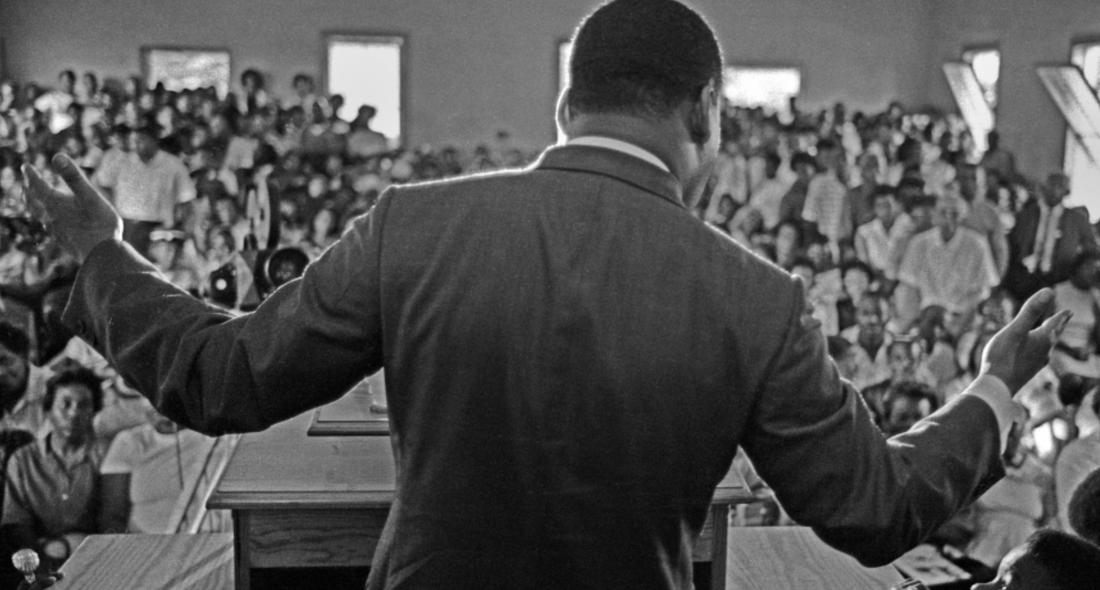
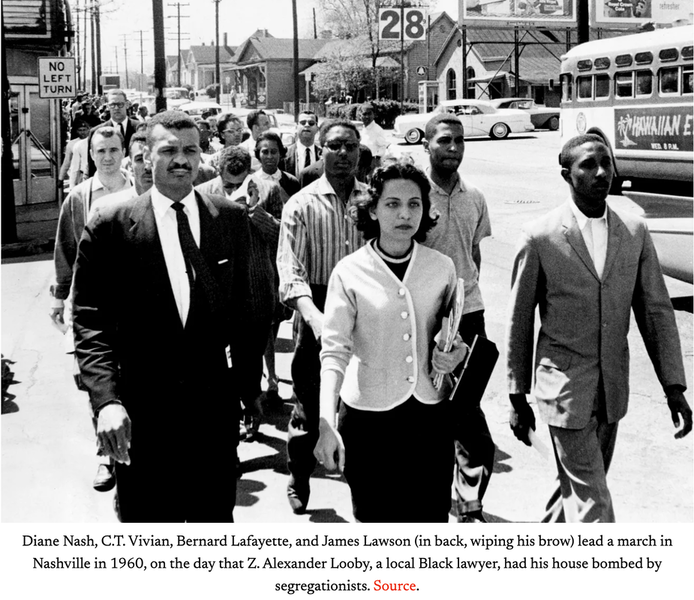
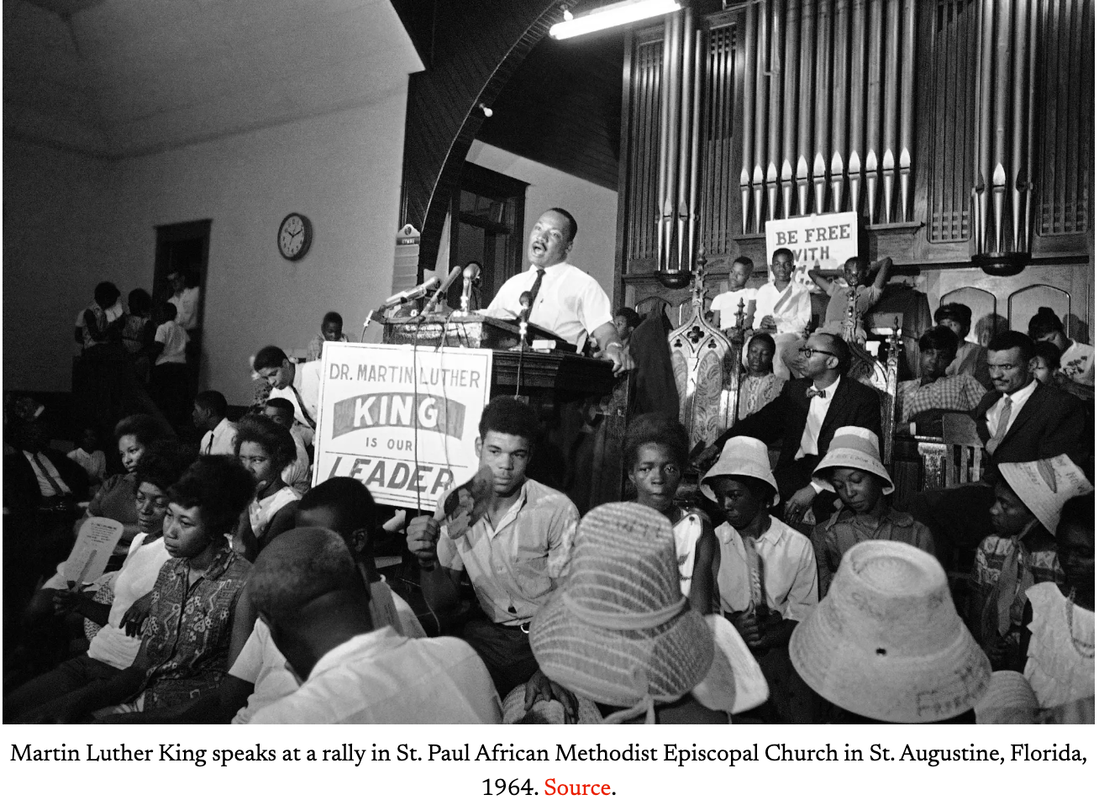
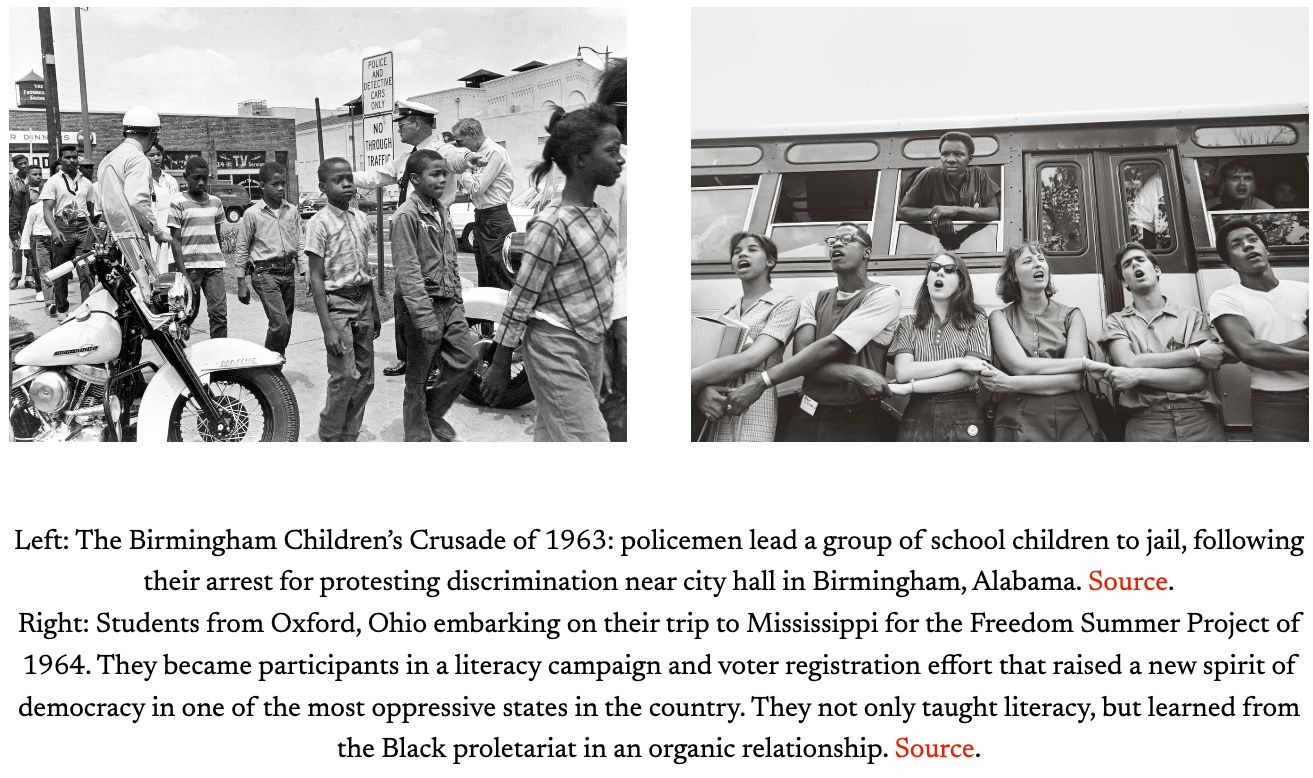
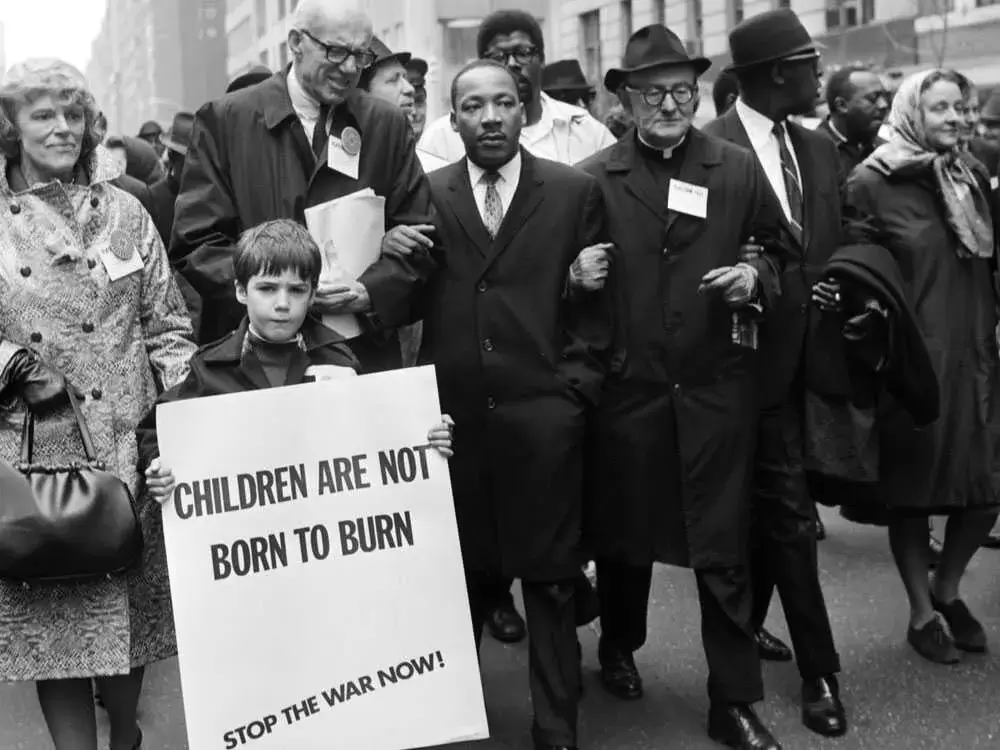
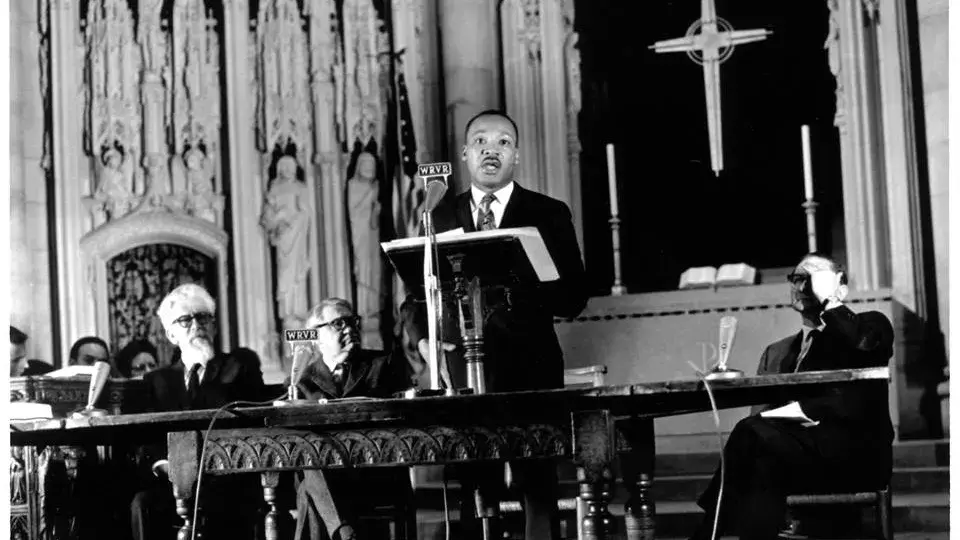
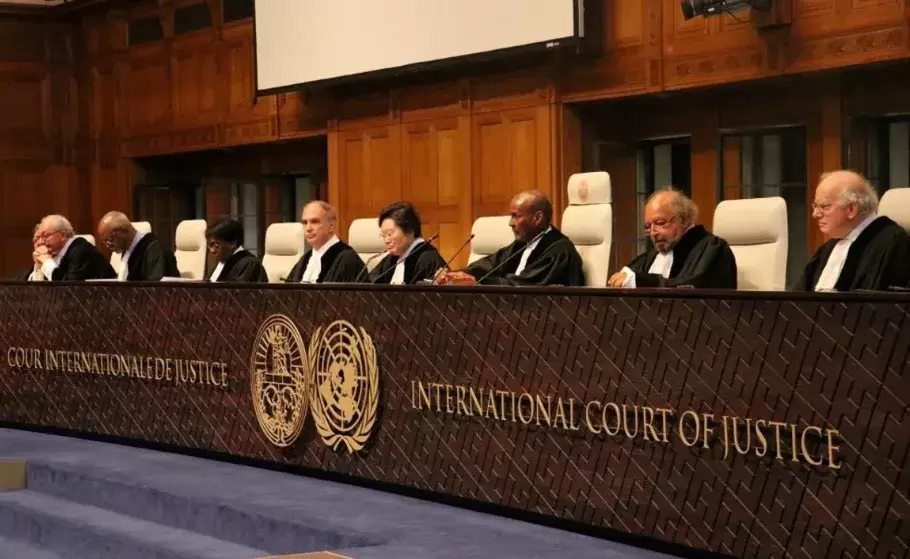


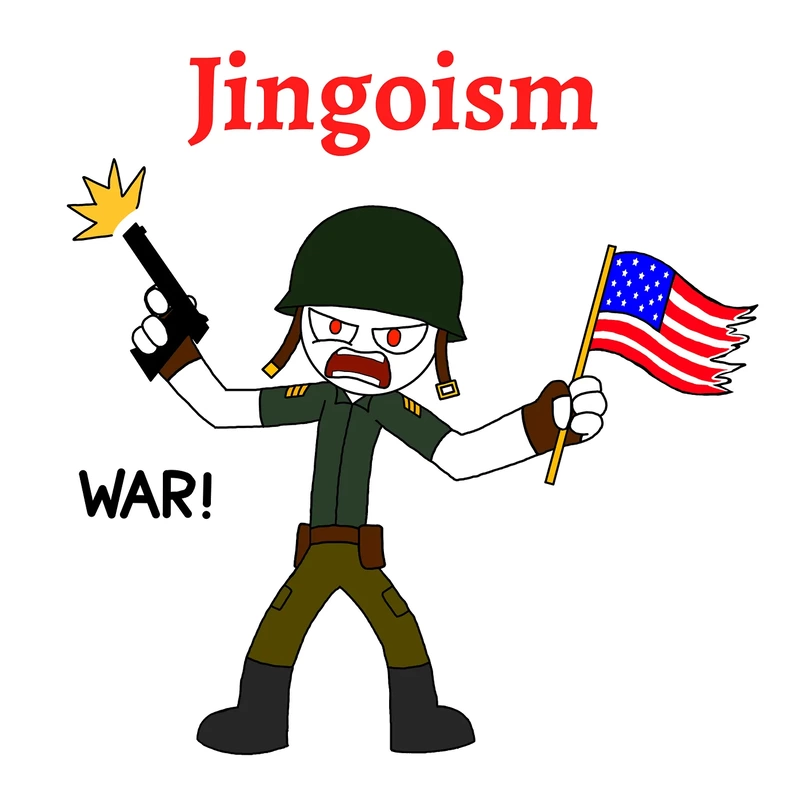

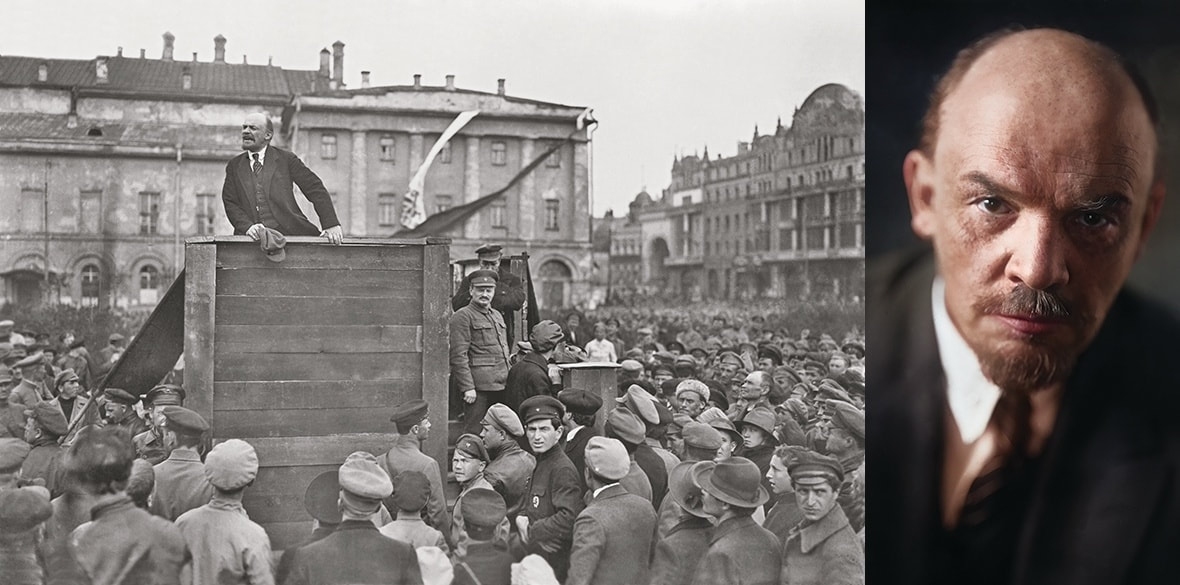
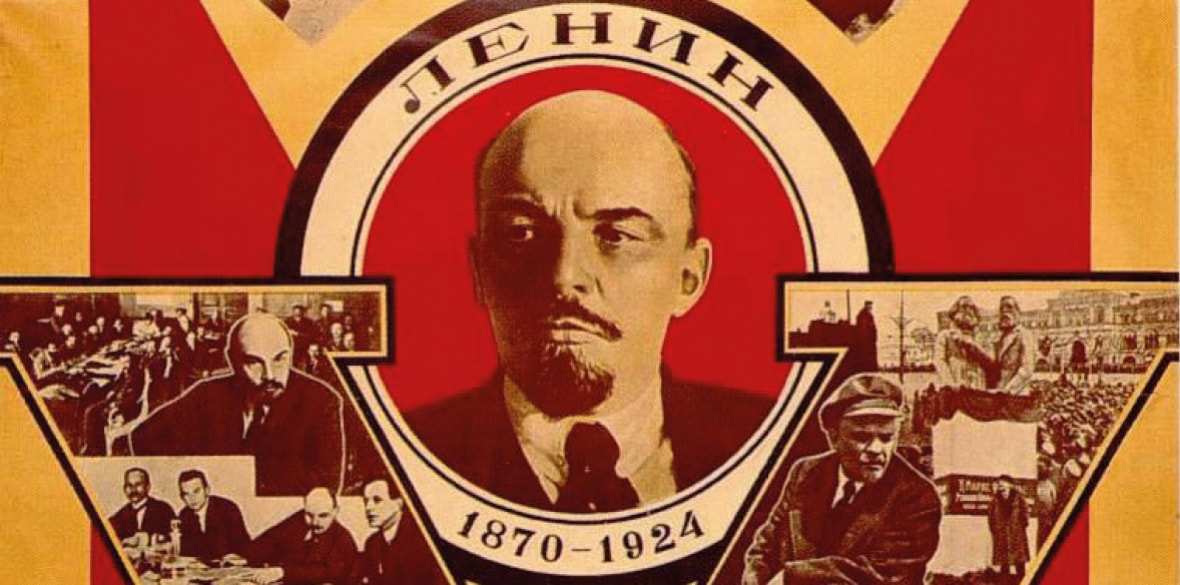


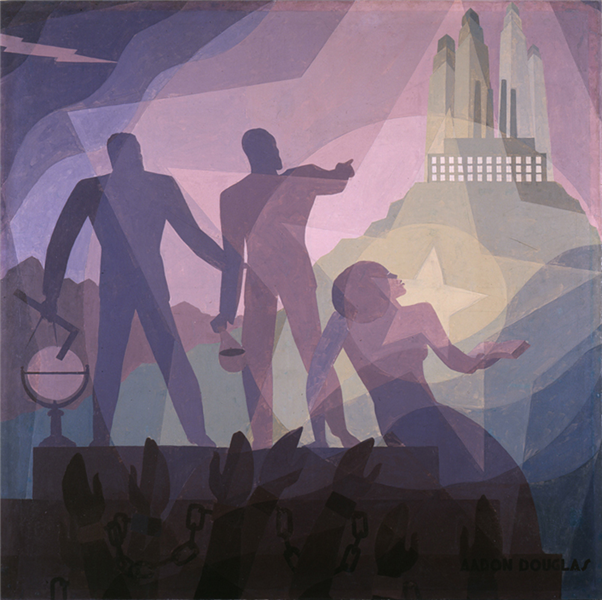
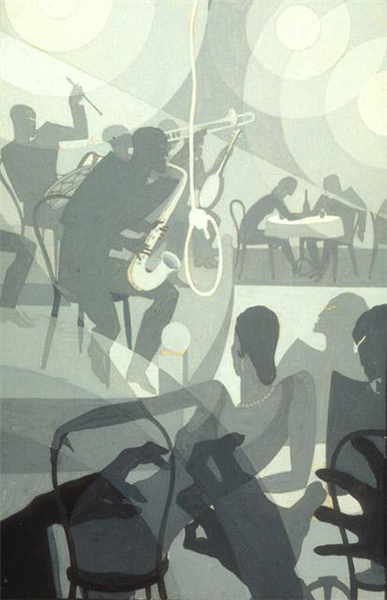
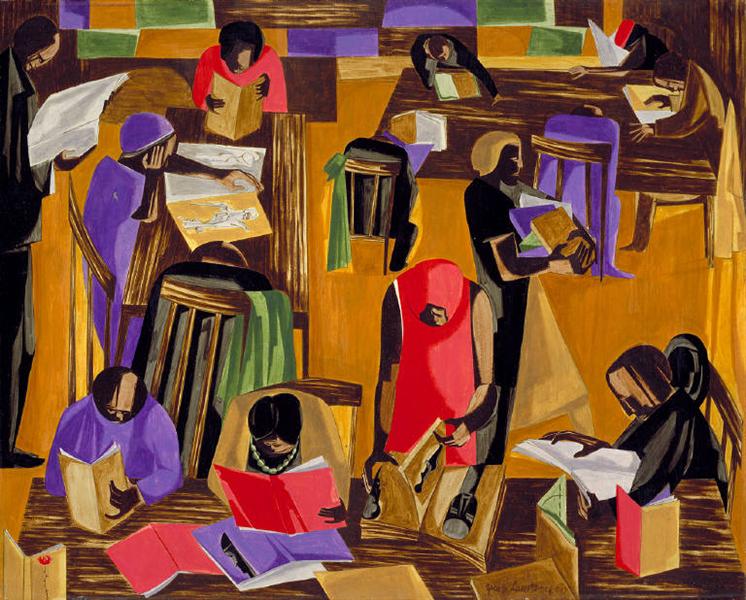
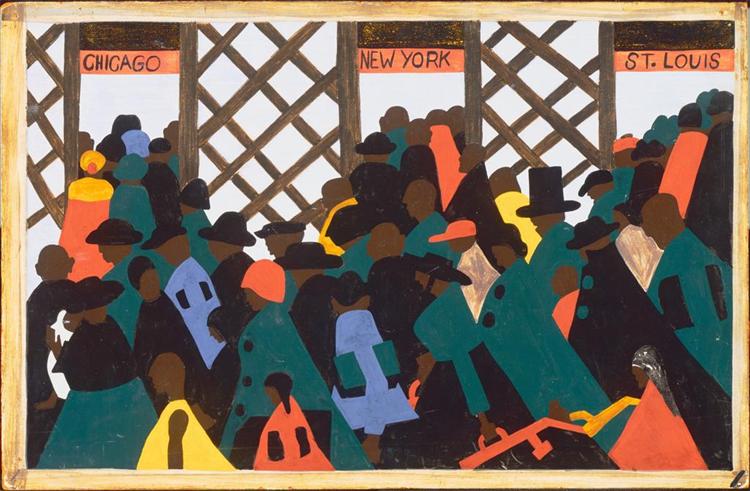



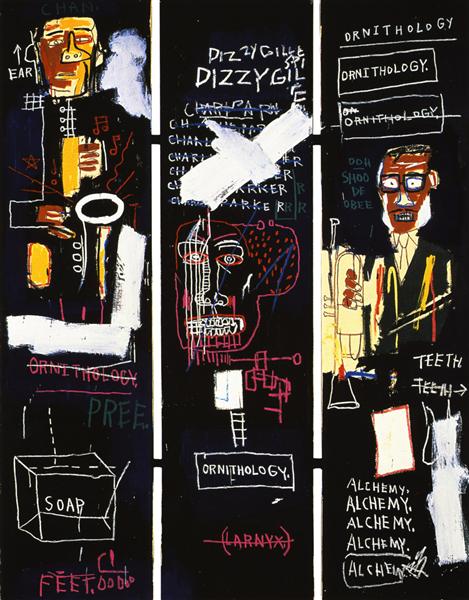
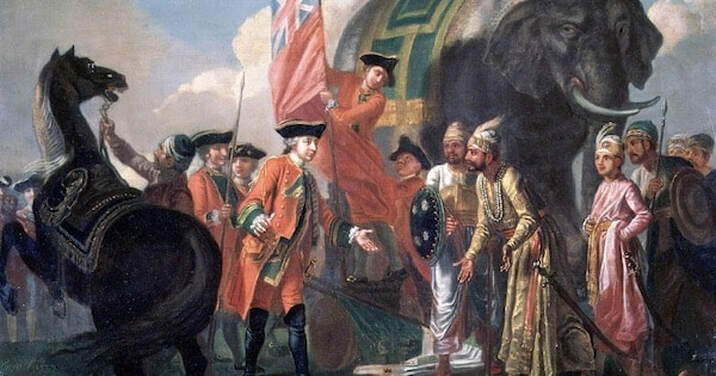
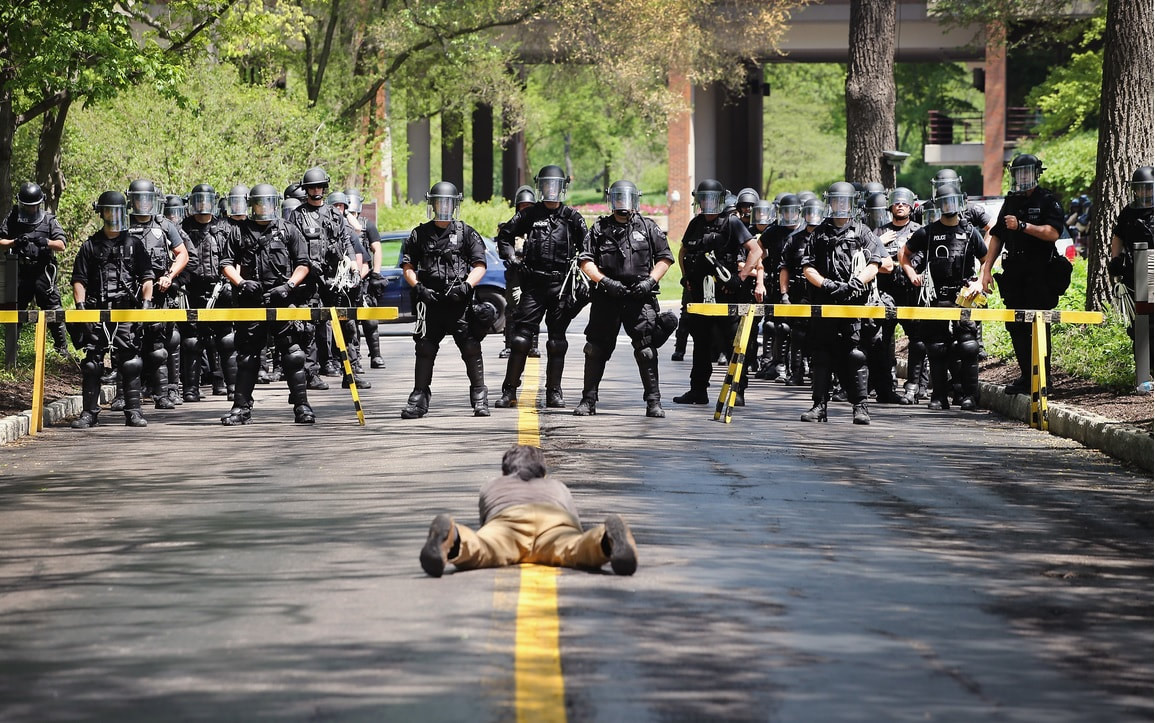
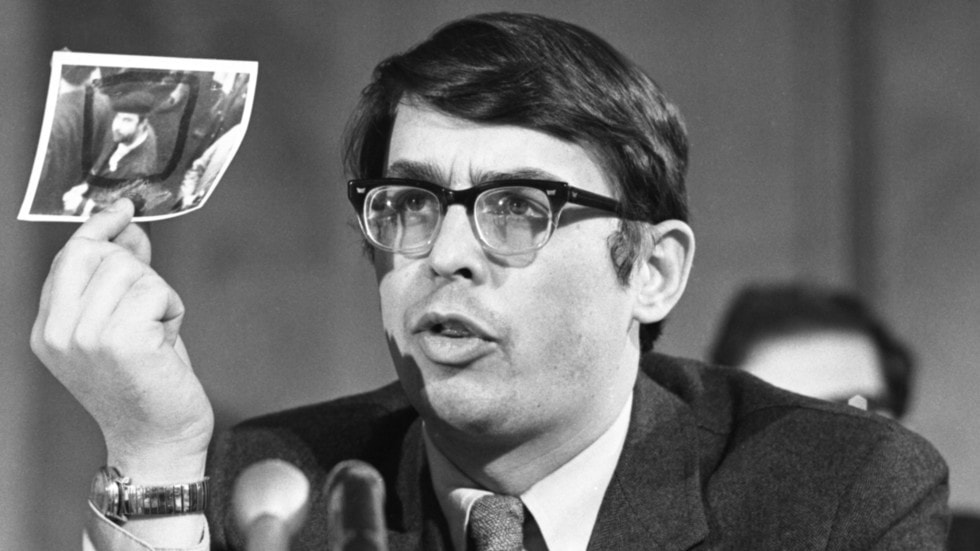


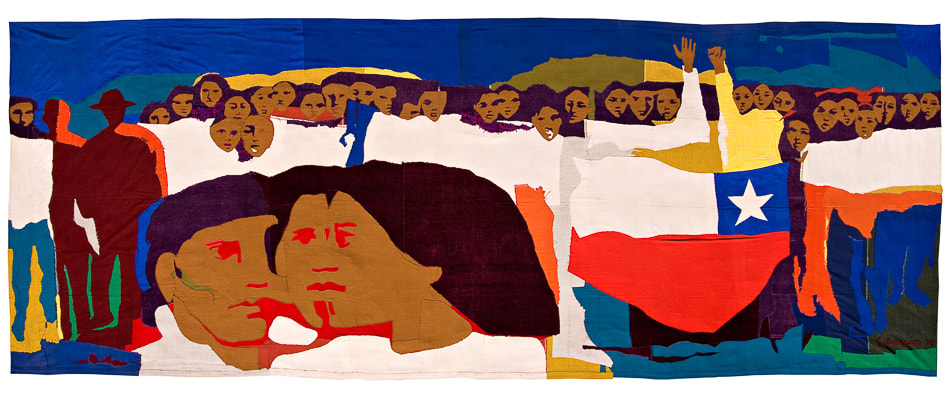
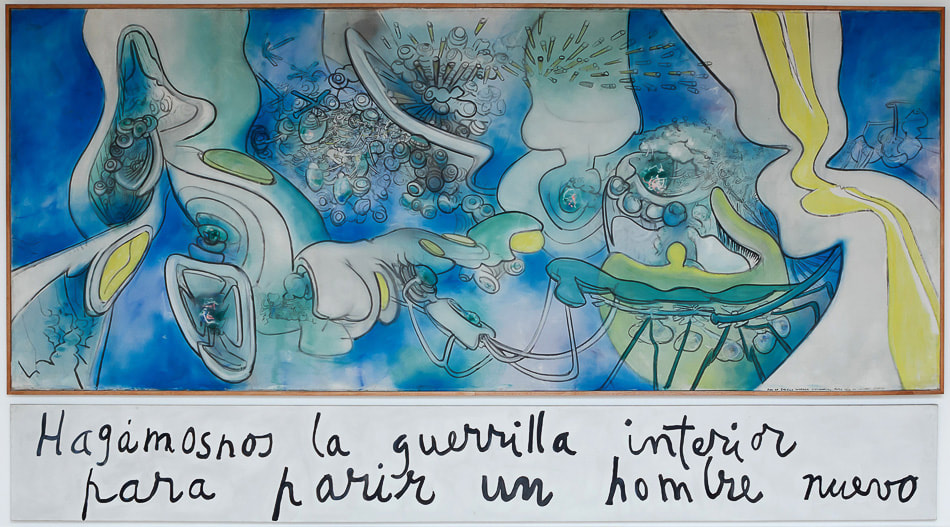
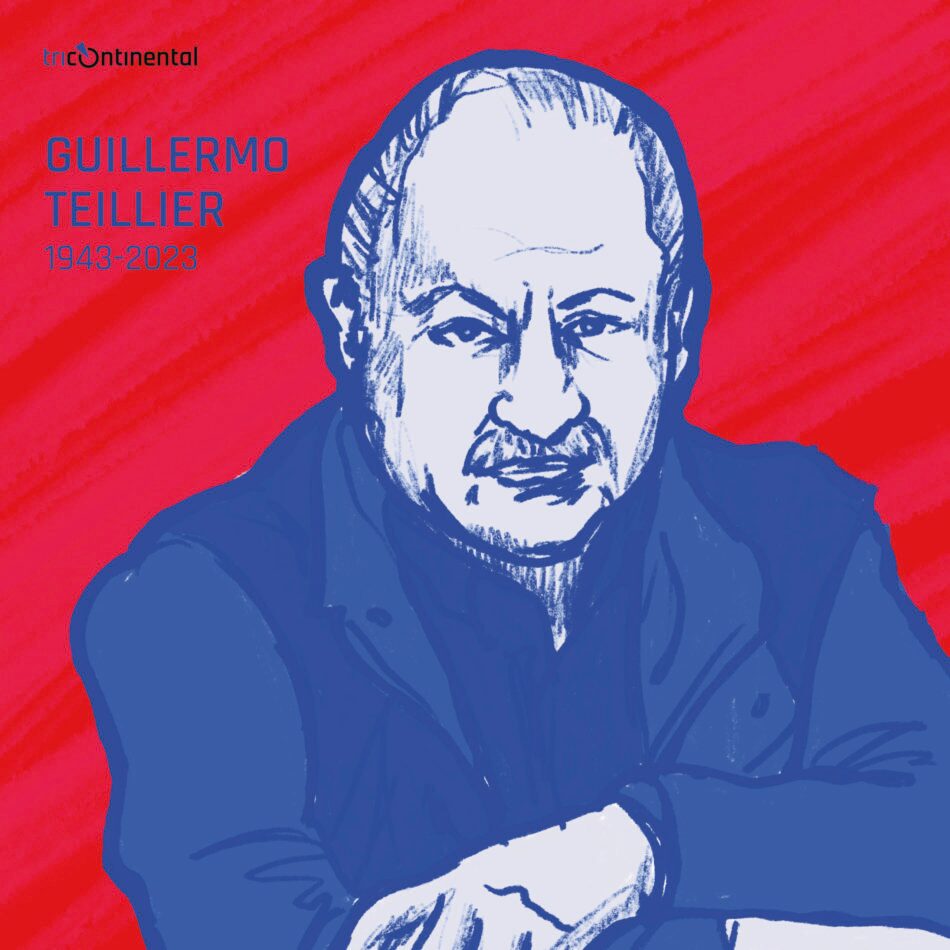
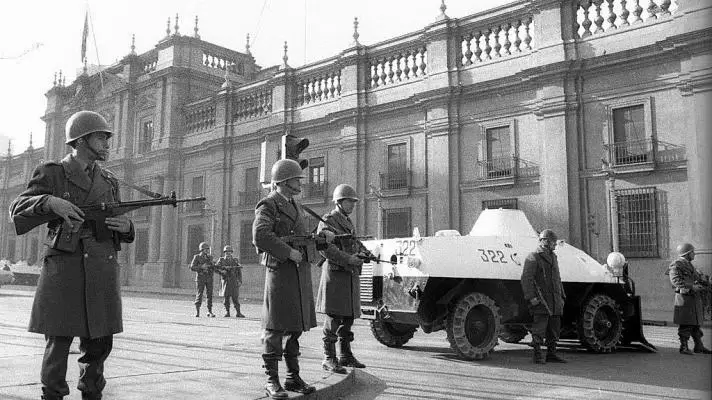
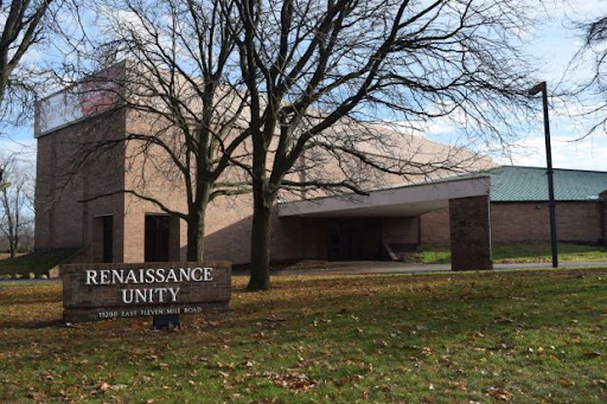
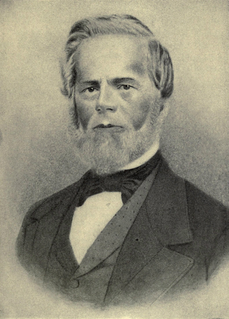
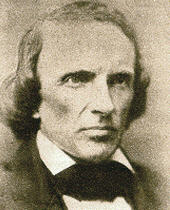
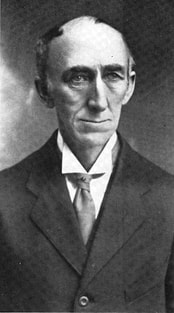
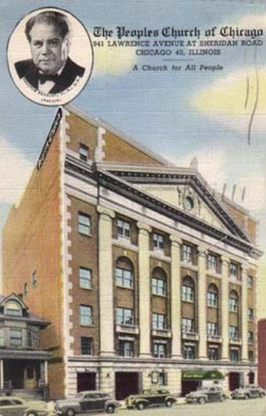
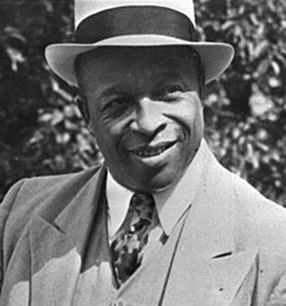
 RSS Feed
RSS Feed